Montenegro
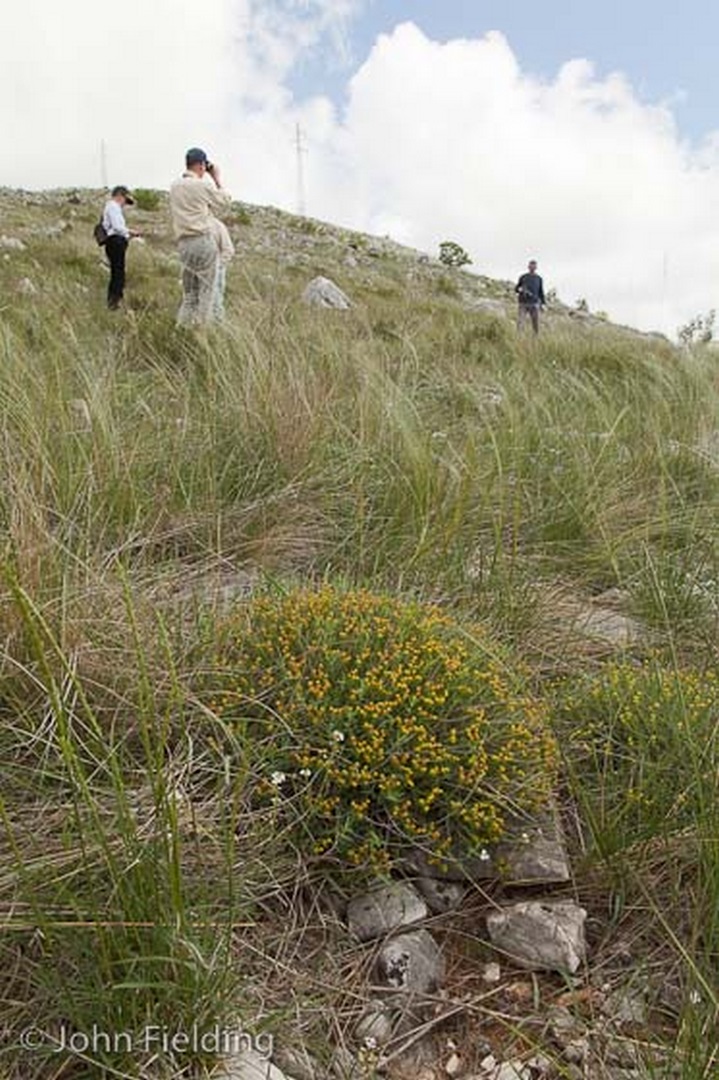
Euphorbia spinosa

Orchis pauciflora
We started further north by flying to Dubrovnik in Croatia but quickly crossed into Bosnia Herzegovina to spend the first two nights in Trebinje. En-route we passed through open grassland on the slopes of the limestone coastal mountains where Euphorbia spinosa in full flower formed mounds dotted through the grass, though more of an interesting, subtle species, it is occasionally grown in gardens. Orchis pauciflora was the commonest orchid with its pale lemon flowers shining out among the relatively sombre grasses.
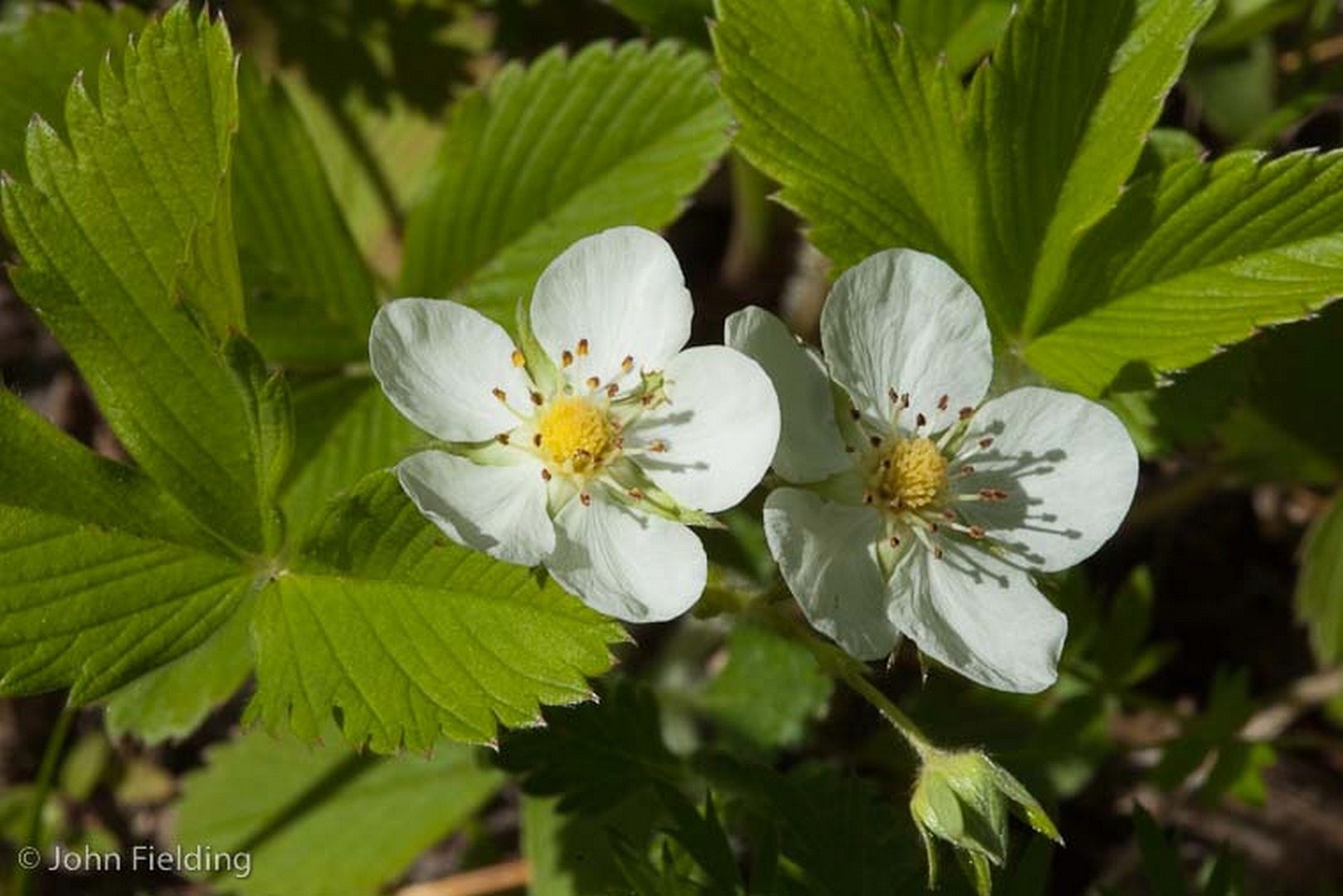
Fragaria vesca
The terrain quickly turned to a garigue-like compact woodland with hornbeam, Carpinus betulus, manna ash, Fraxinus ornus particularly common and Turkey oak, Quercus cerris. Here we saw the wonderfully divided leaves of Helleborus multifidus subsp. hercegovinus but there was a paucity of flower heads which were in full seed. They were accompanied by wild strawberries, Fragaria vesca, in full flower (no fruits) and a few specimens of early spider orchid, Ophrys sphegodes. A very “thin legged” monkey orchid, Orchis simia, with much more slender lobes than I have seen before, was quite scarce. In the more open spots a Thymus sp. possibly T. striatus was in full flower.
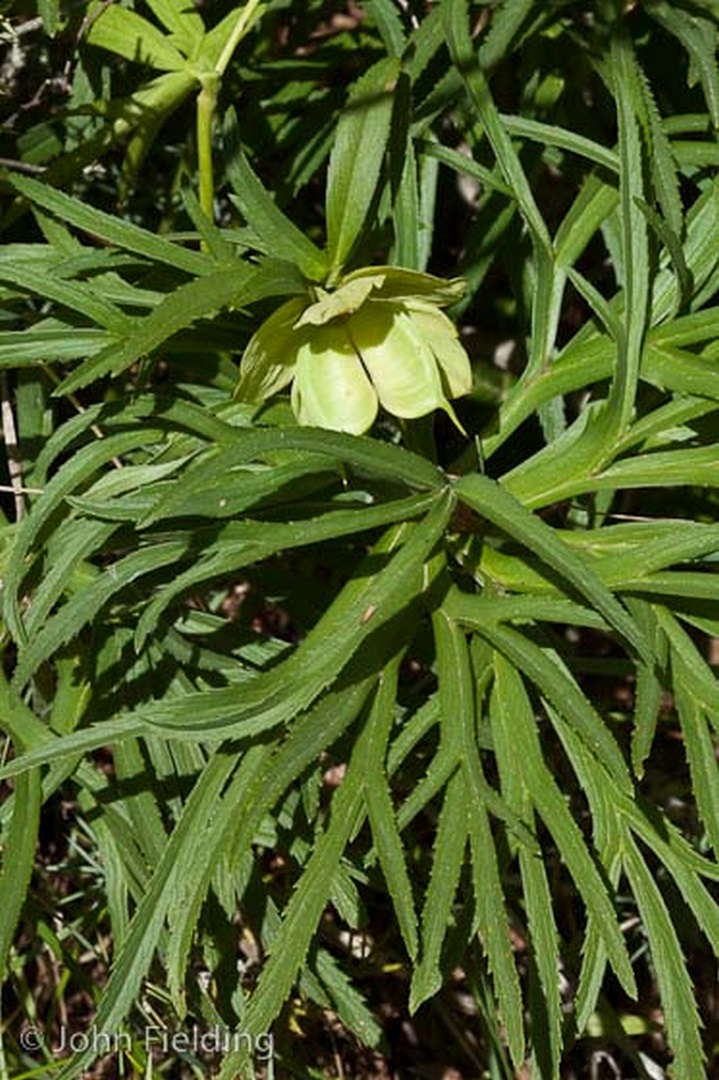
Helleborus multifidus subsp. hercegovinus
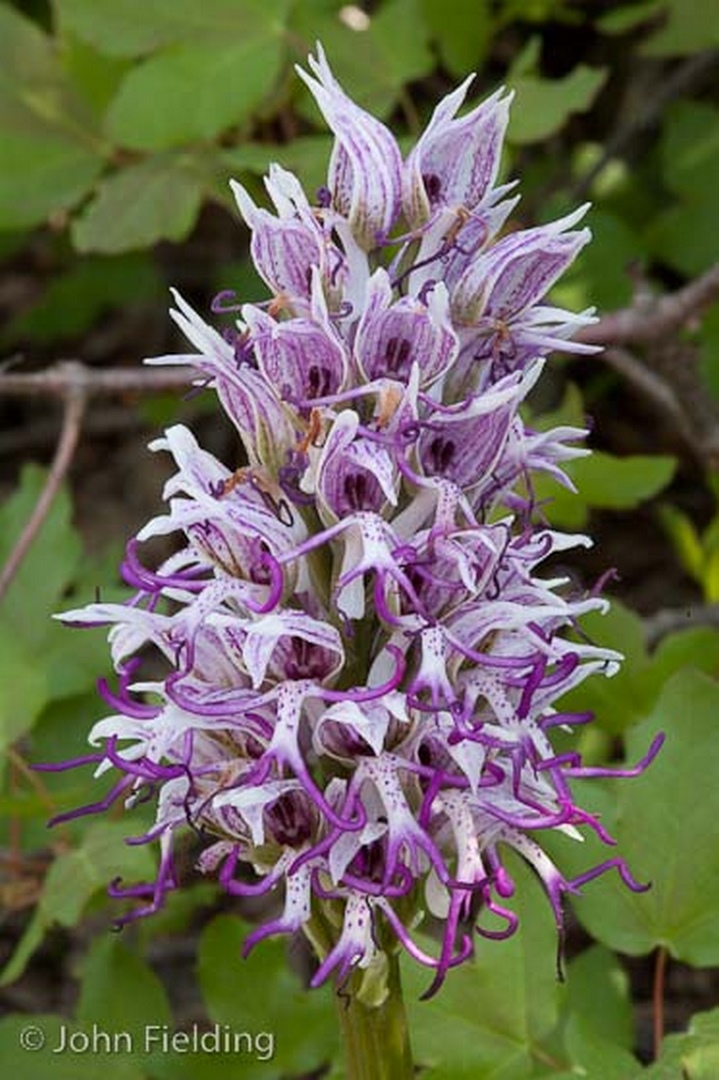
Orchis simia
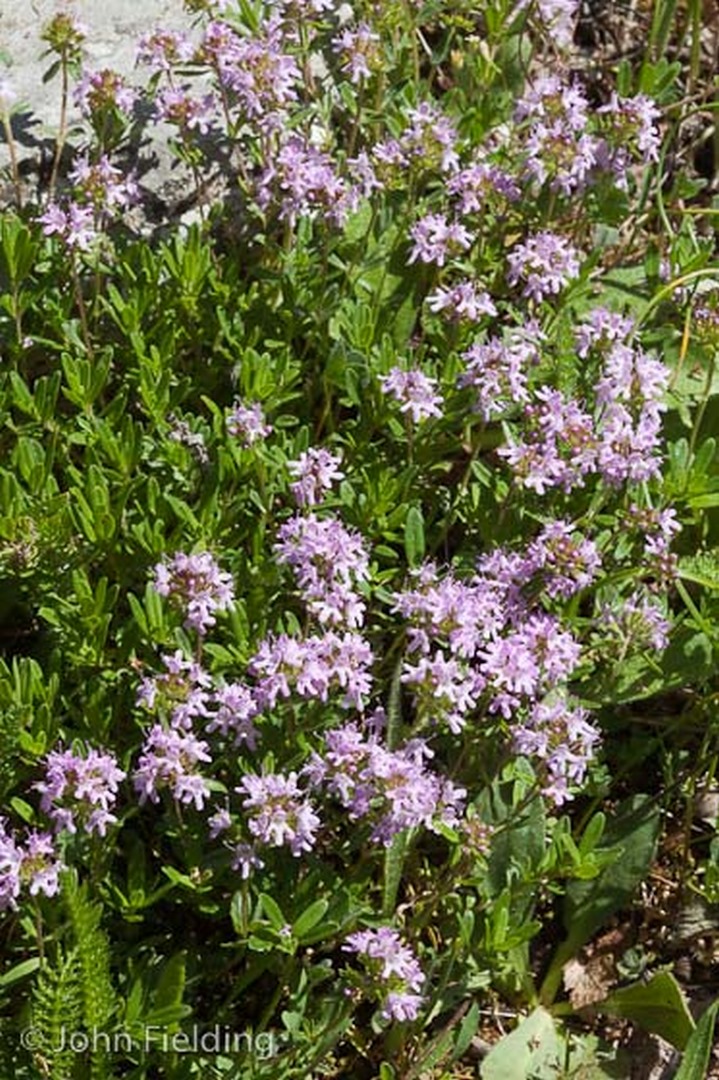
Thymus striatus
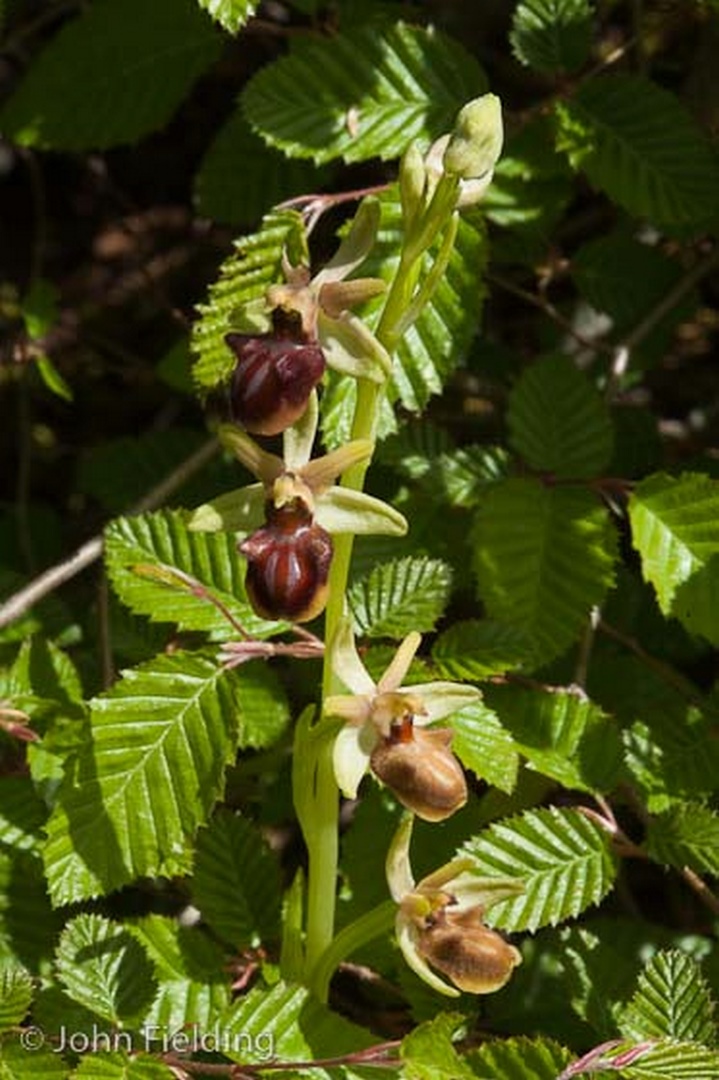
Ophrys sphegodes
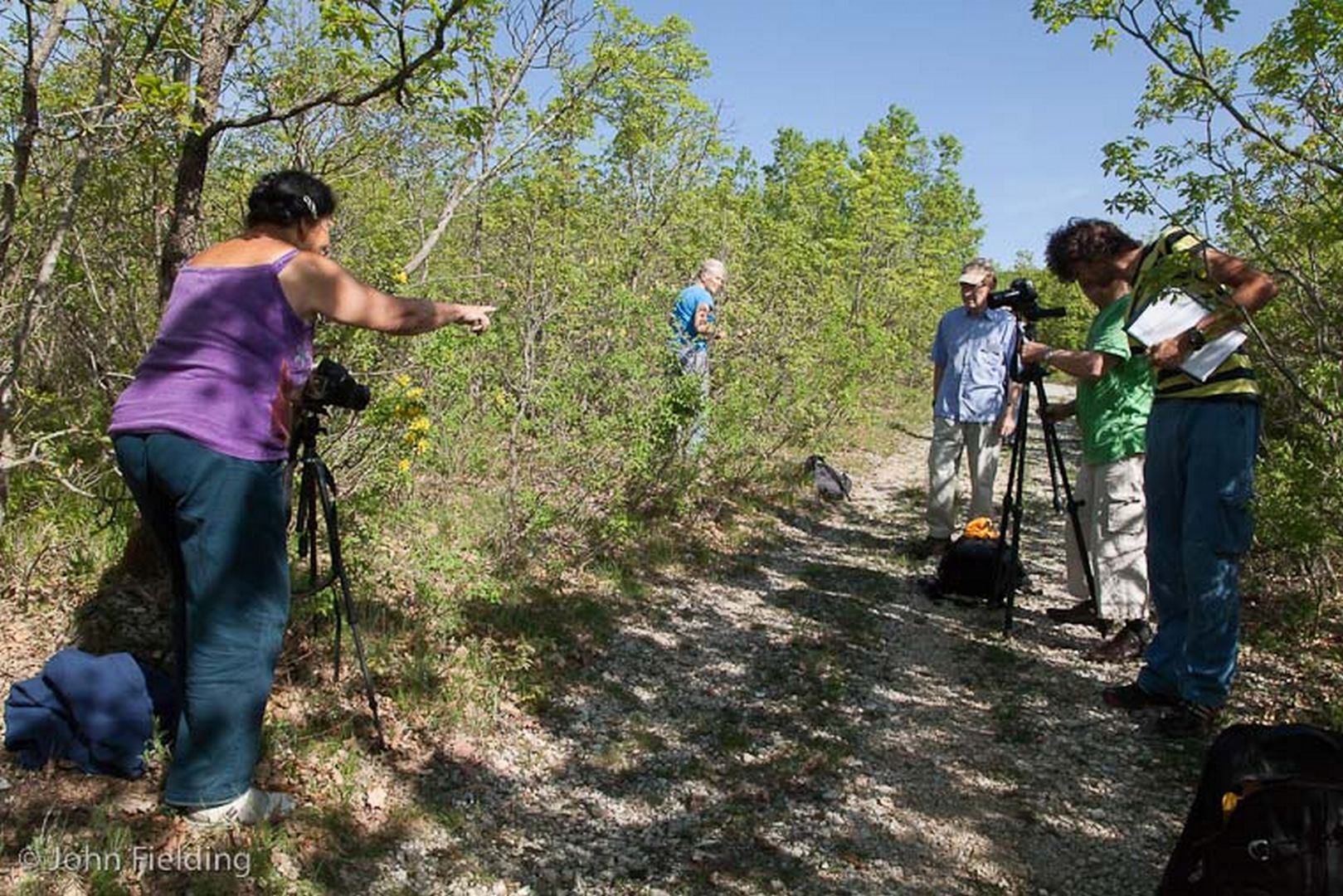
The garigue
Sunday was our quite long coach journey to Mostar. En route we stopped soon after leaving Trebinje, above Bilecko lake where we found the beautiful Scilla litardierei with delicate heads of bluish flowers. The garigue had the laburnum-like shrub Petteria ramentacea with its upright rather than pendulous clear yellow flower heads. Manna ash, Fraxinus ornus, was in perfect flower. By the roadside were the prostrate Astragalus monspessulanus with vivid magenta pink blooms almost shouting out.
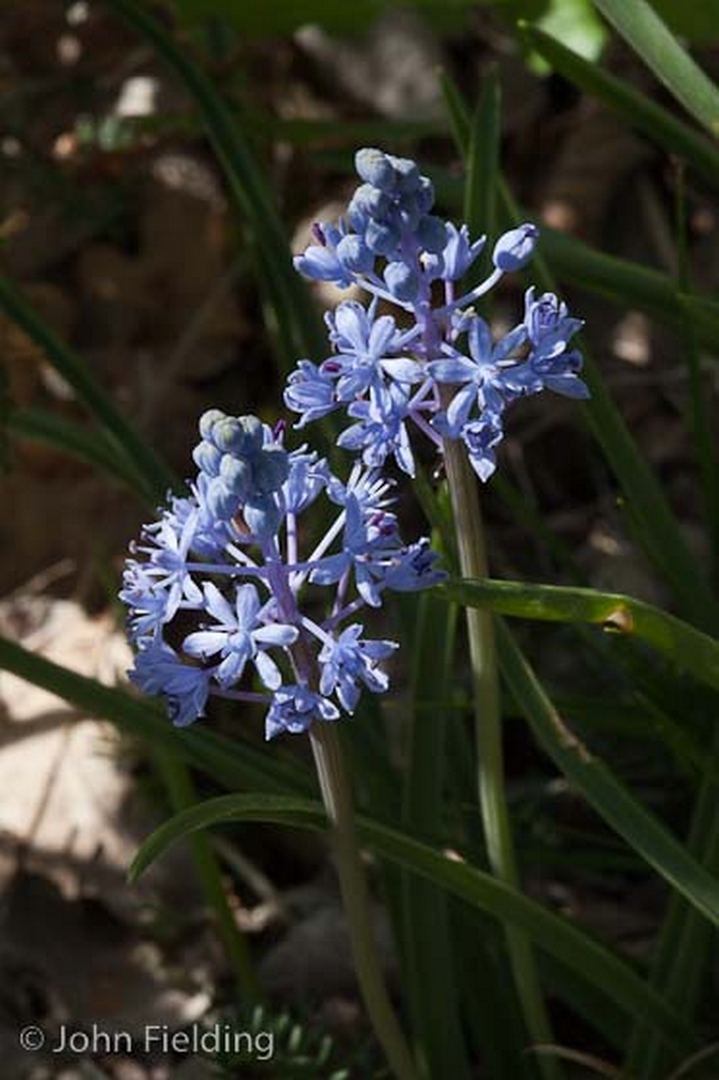
Scilla litardieri

Petteria ramentacea
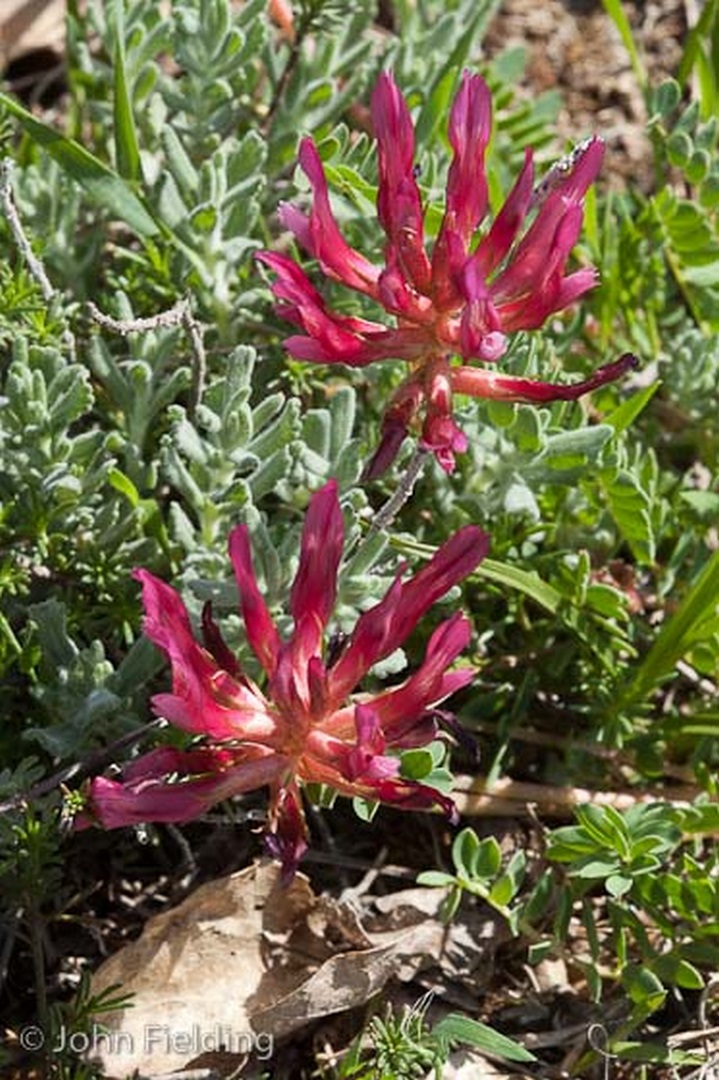
Astragalus monspessulanus
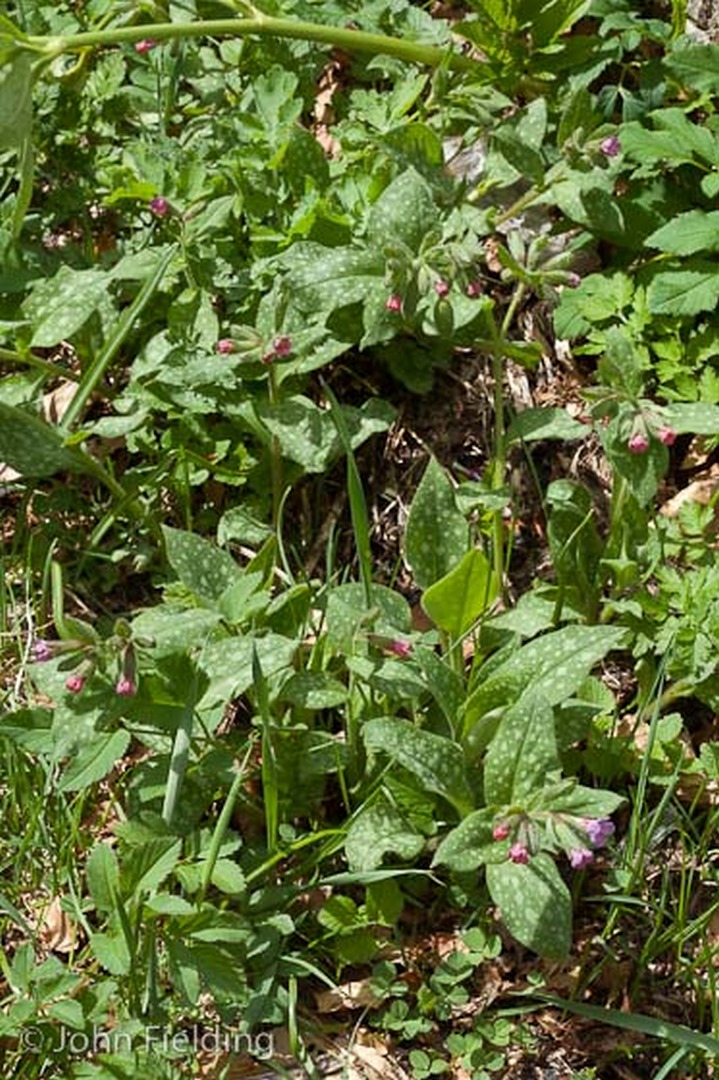
Pulmonaria officinalis
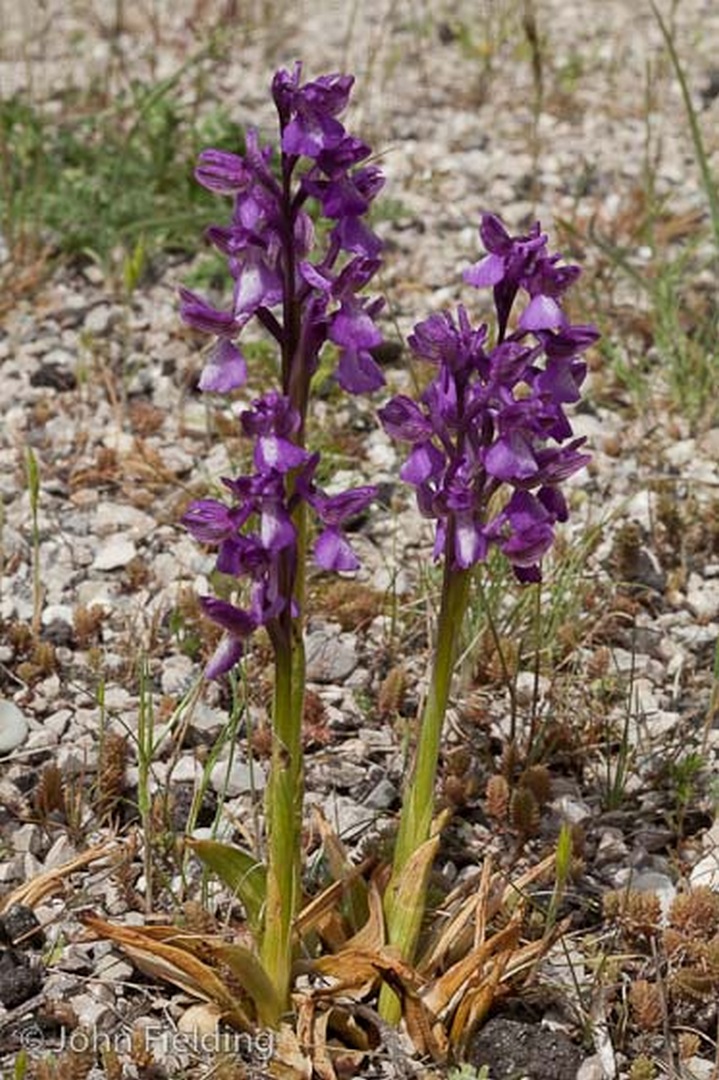
Anacamptis morio
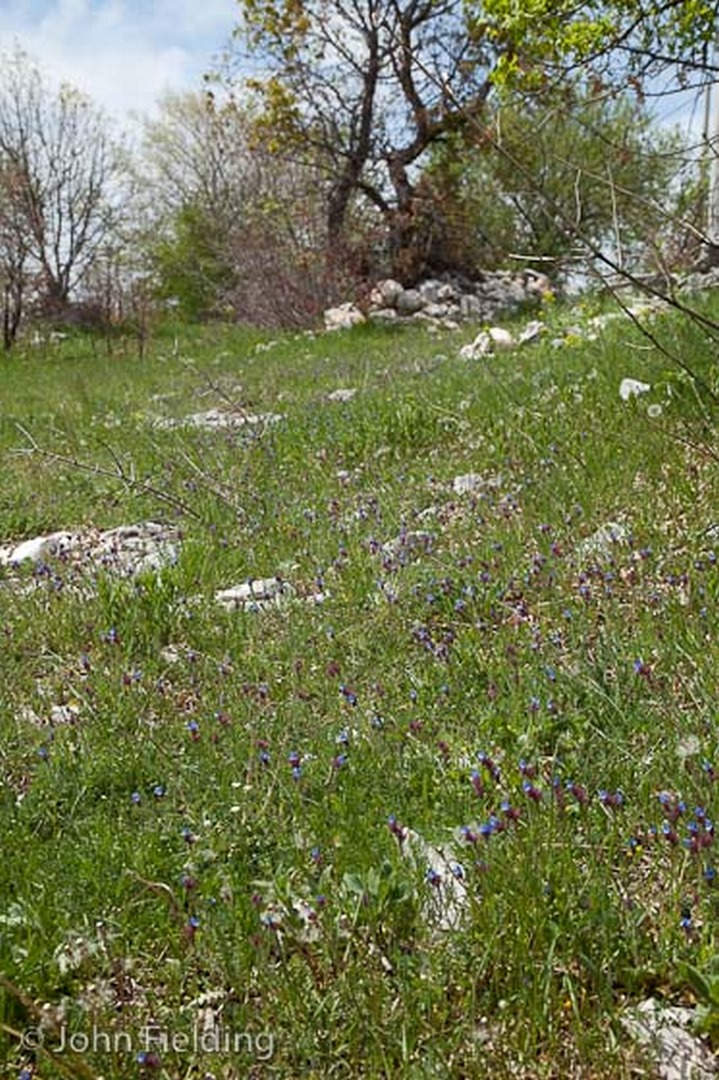
Anchusella cretica
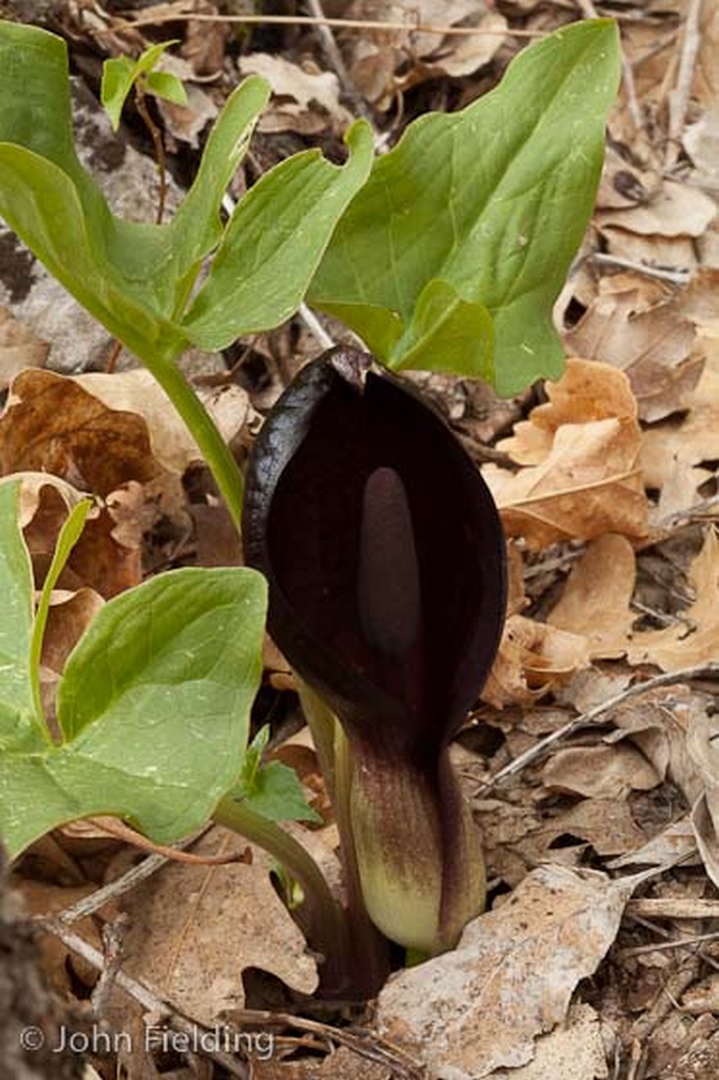
Arum nigrum
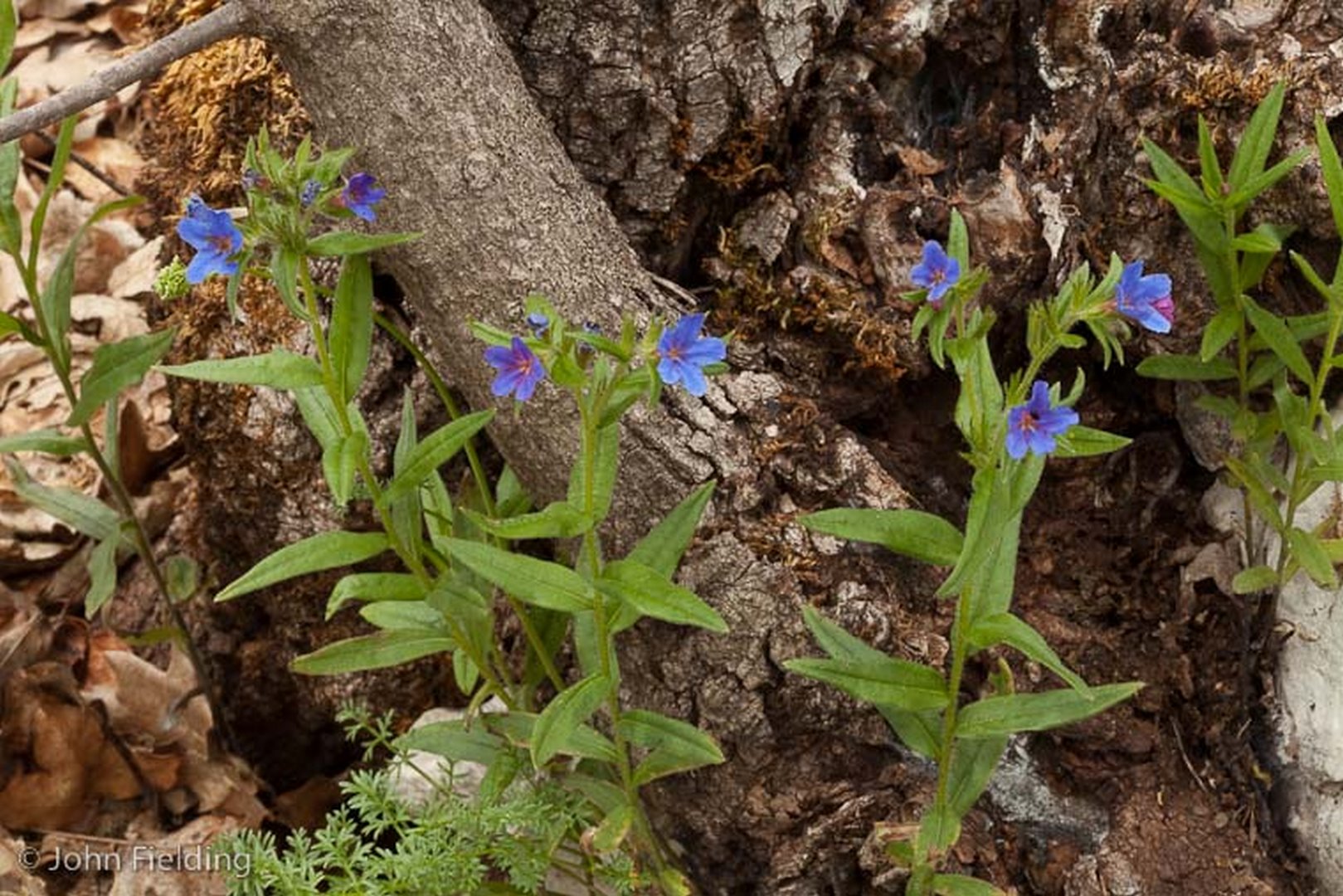
Lithospermum purpureocaeruleum
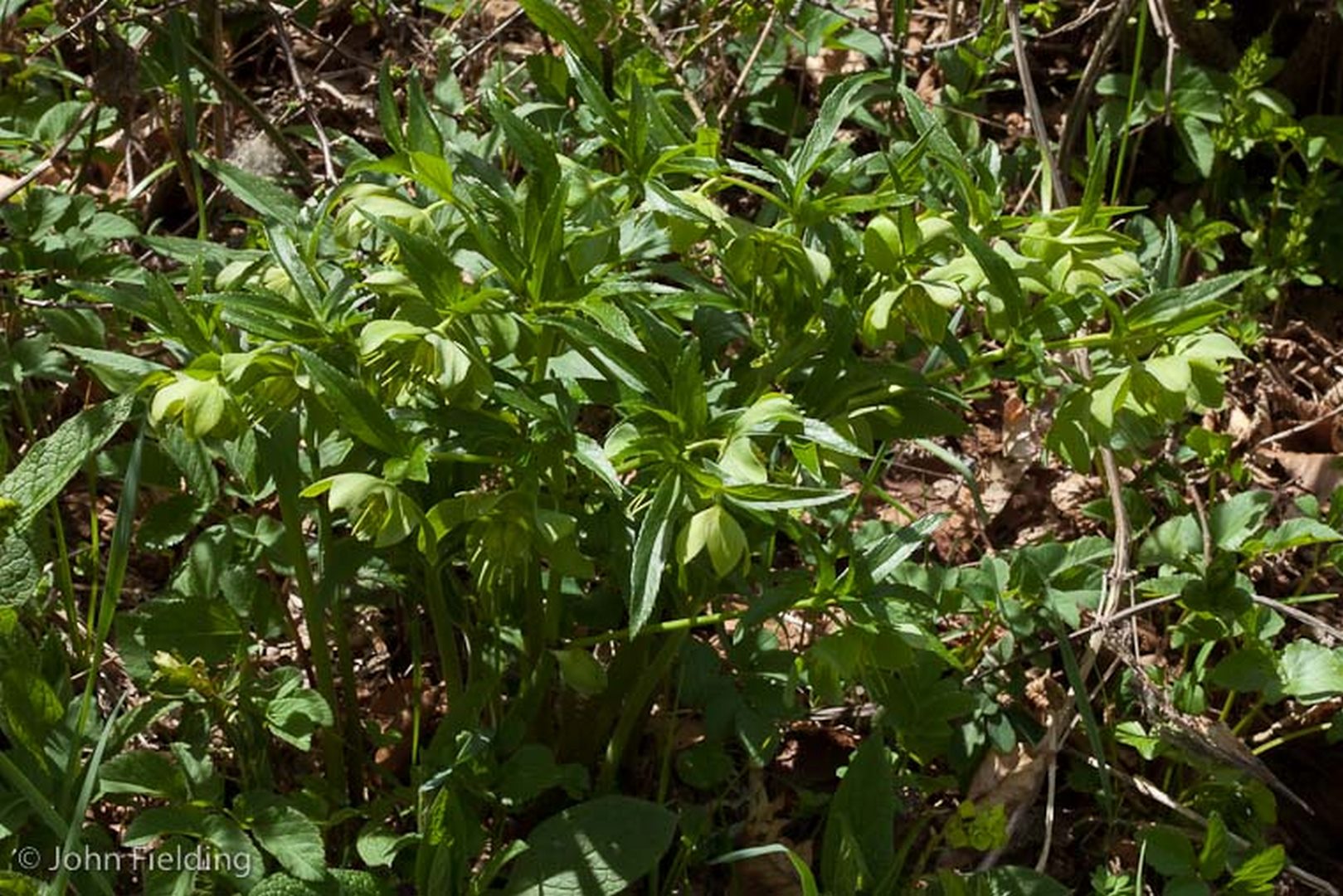
Helleborus multifidus subsp. multifidus
We went further on to a valley north west of Fojnica. By the stream we found a rich mixture of interesting plants including Helleborus multifidus subsp. multifidus, Pulmonaria officinalis in full flower and the distinctive grey centred leaves of Galanthus reginae-olgae subsp. vernalis, flowering over some time earlier. In the running stream we saw marsh marigold, Caltha palustris, mares tail, Equisetum sp., mint, Mentha sp., water cress, Nasturtium officinale, and lesser celandine, Ficaria grandiflora (syn. Ranunculus ficaria).
Just east of Mostar we stopped at some open country with grass and scrub. Arum nigrum grew in a protected hollow alongside Lithospermum purpureocaeruleum and there were plenty of green winged orchid, Anacamptis morio, throughout the site. In a meadow- like area there were drifts of Anchusella cretica, in the borage family,
with intense dark blue flowers. Despite its name it is not native to Crete.
Once in Mostar we visited the re-built famous 16th century Ottoman bridge that was destroyed on 9 November 1993 during the Bosnian war. This was most impressive. The whole of the centre of Mostar has been renovated and looked amazing though touristy. Sadly just outside of the centre the scars of war were still evident with shrapnel holes everywhere.
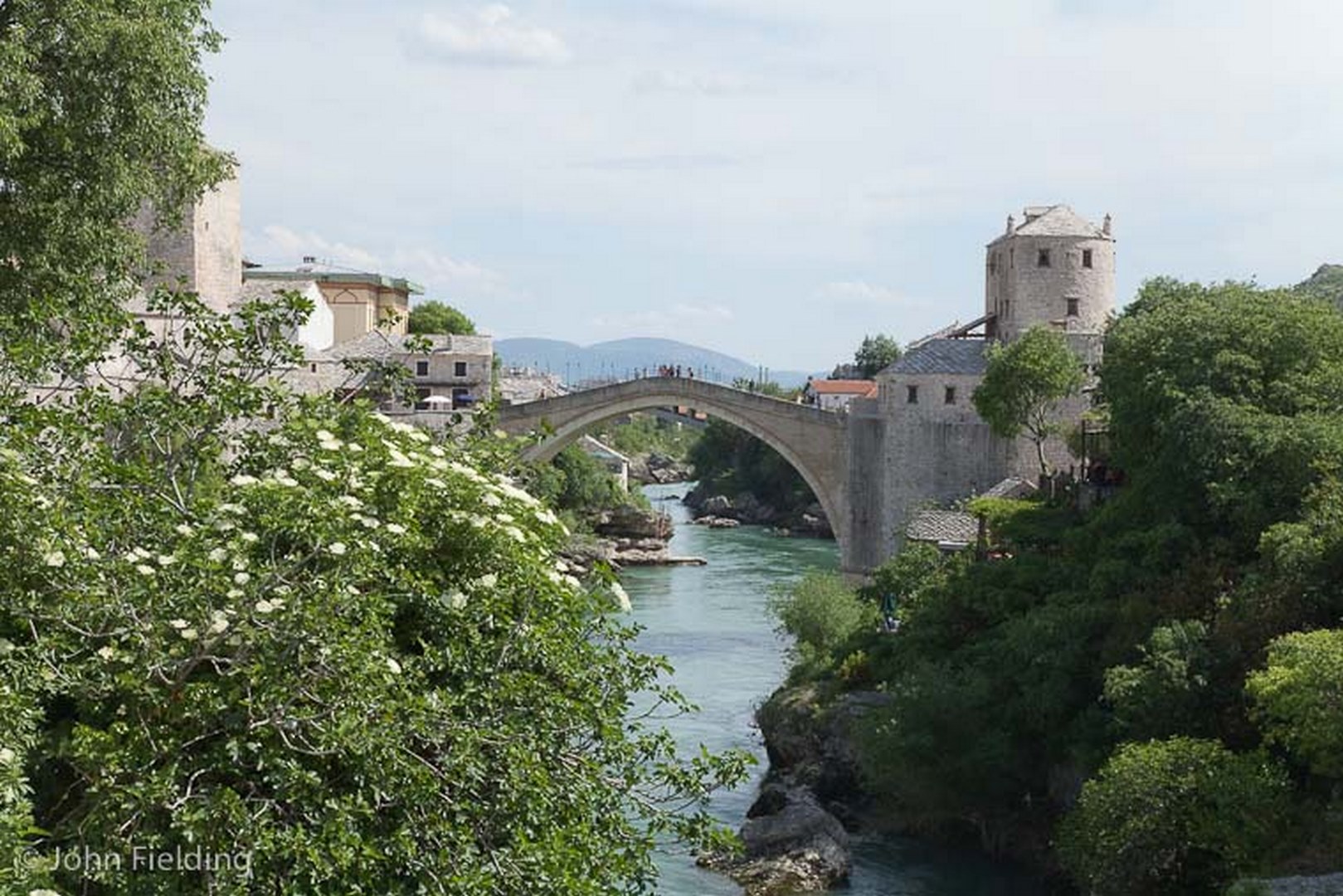
rebuilt Ottoman bridge
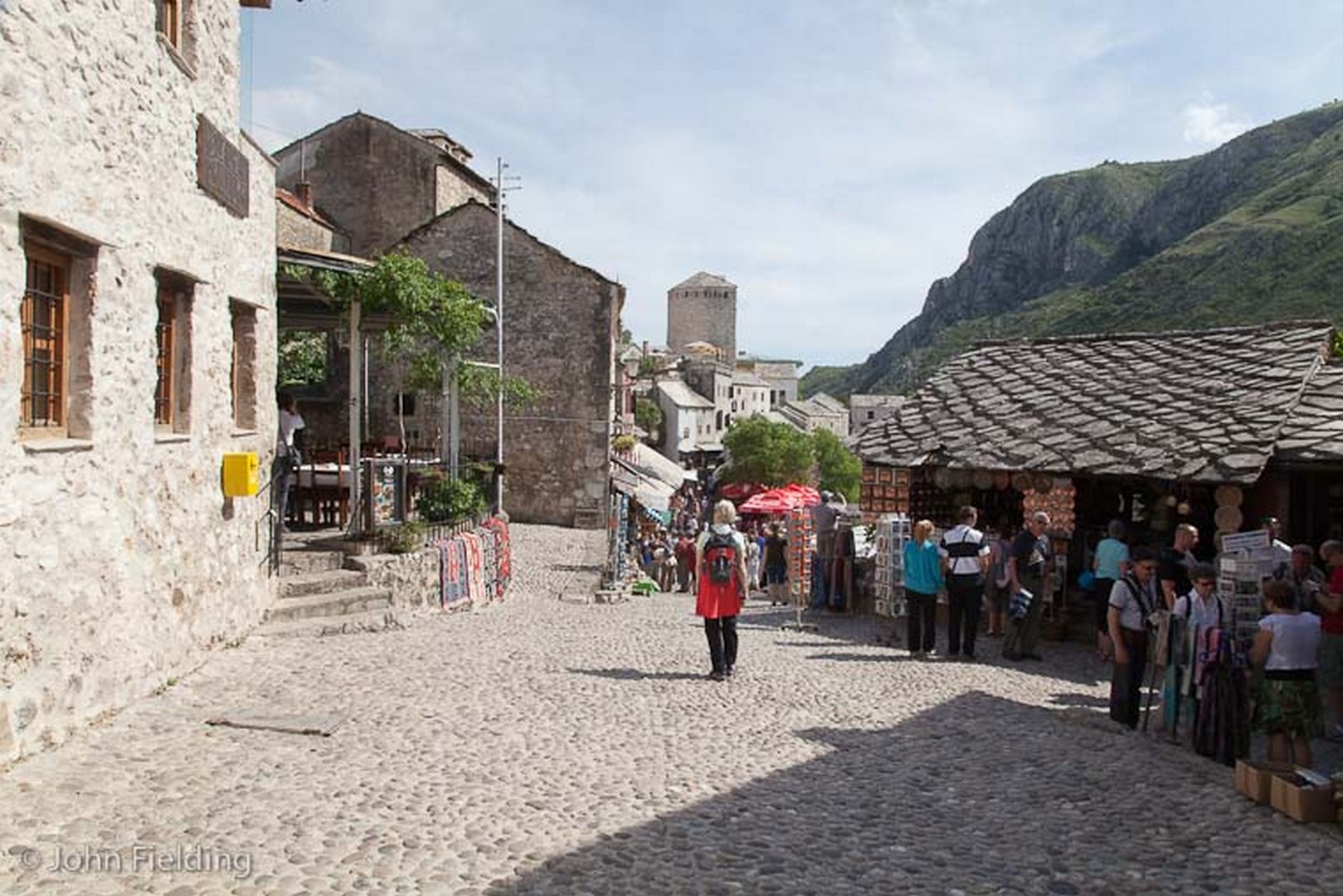
Mostar
The following day we crossed the border into Montenegro directly east of Trebinje. Moments after the border post Jorun Tharaldsen spotted a lovely patch of Fritillaria messanensis subsp. gracilis with chestnut coloured flowers, which definitely called for a brief and worthwhile stop. Growing alongside was the fine leaved Helleborus multifidus subsp. hercegovinus.
Driving rain accompanied us inland past Slansko lake and fortunately stopped just long enough for another photo opportunity south of a tiny village called Krusevice where Primula vulgaris and P. veris were flowering. Even though they were so close together we didn’t spot any hybrids.
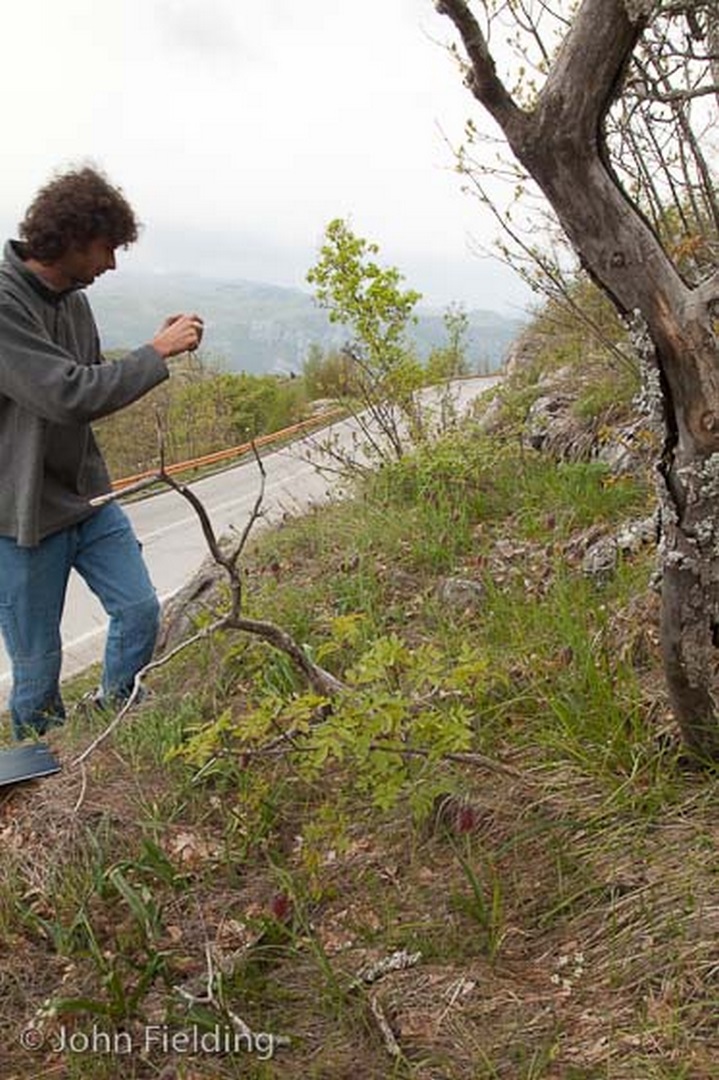
Janko photographing Fritillaria
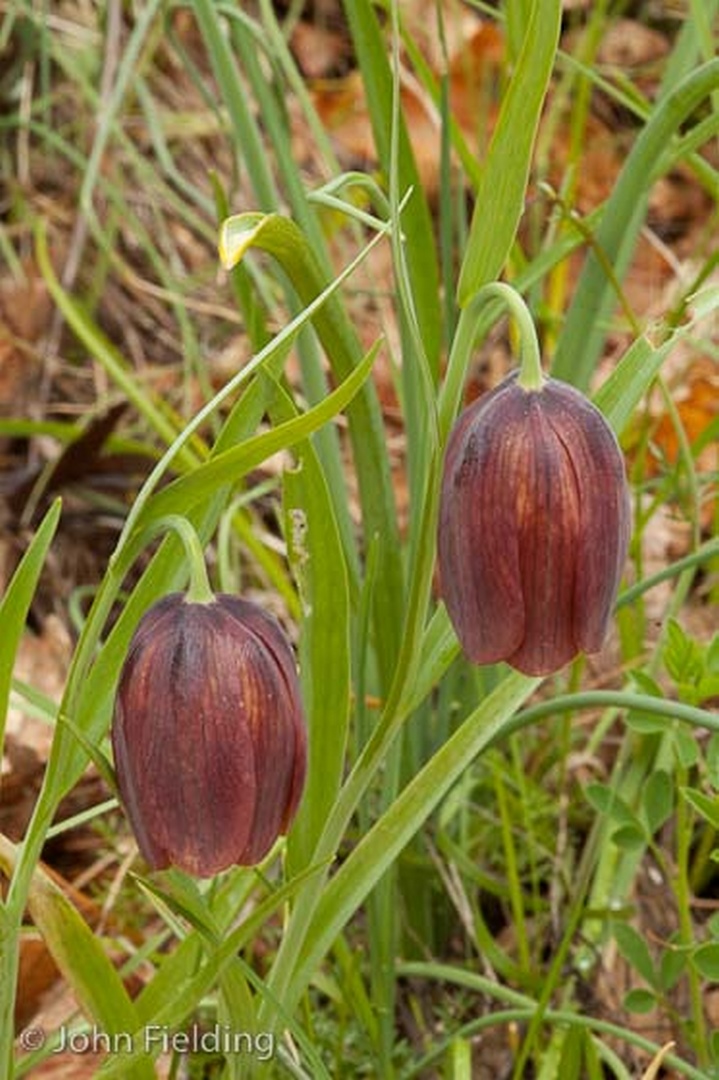
Fritillaria messanensis subsp. gracilis
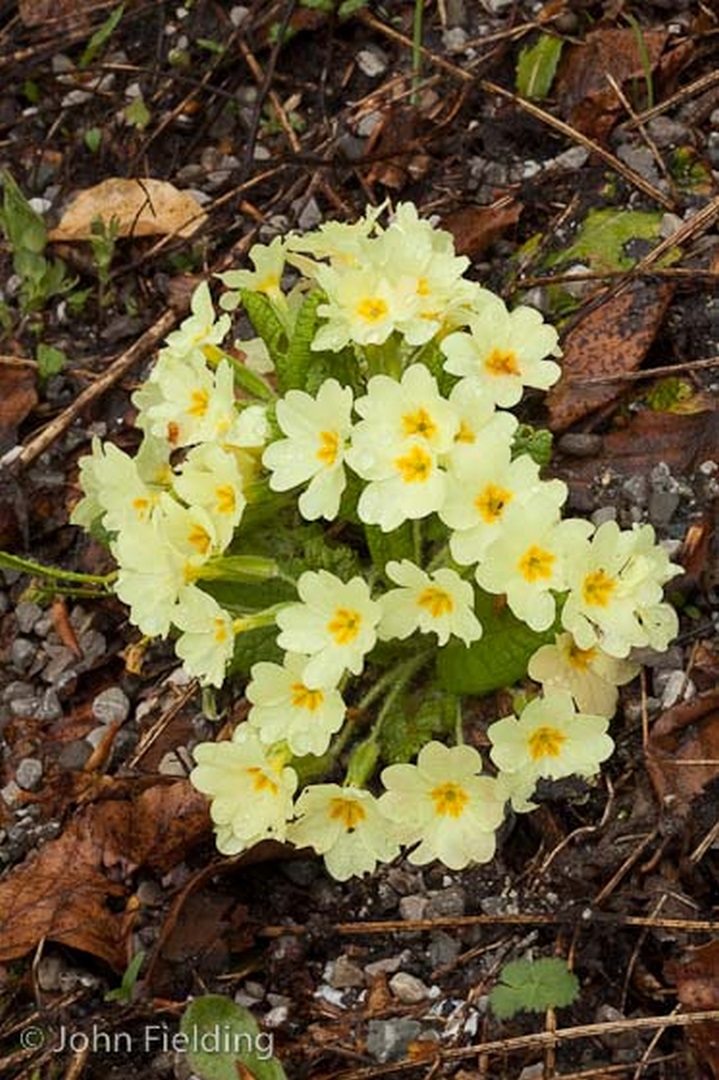
Primula vulgaris
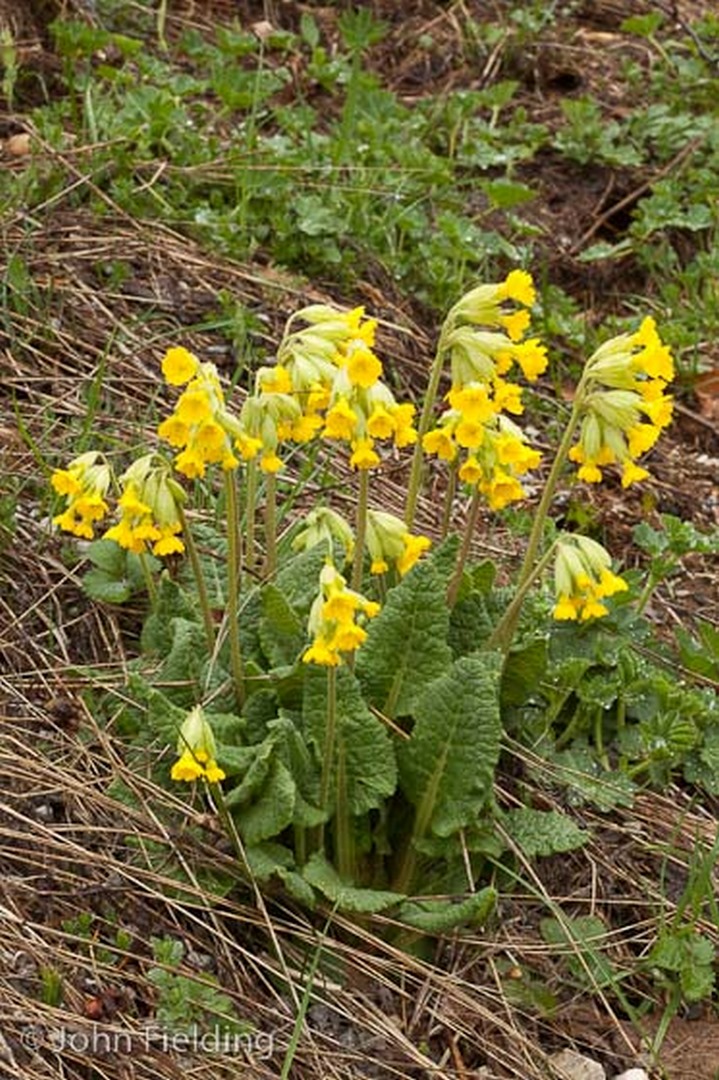
Primula veris
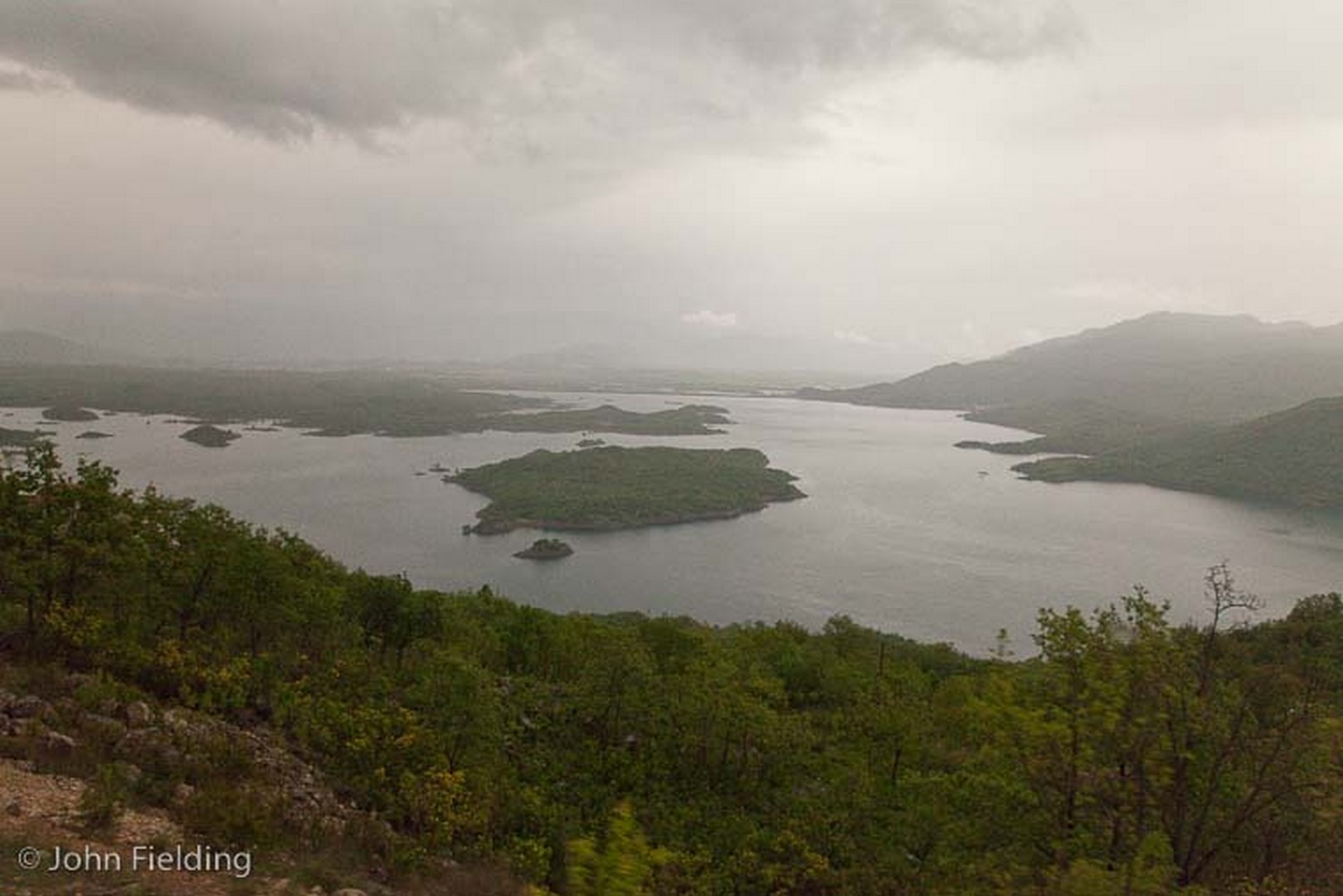
Slansko Lake
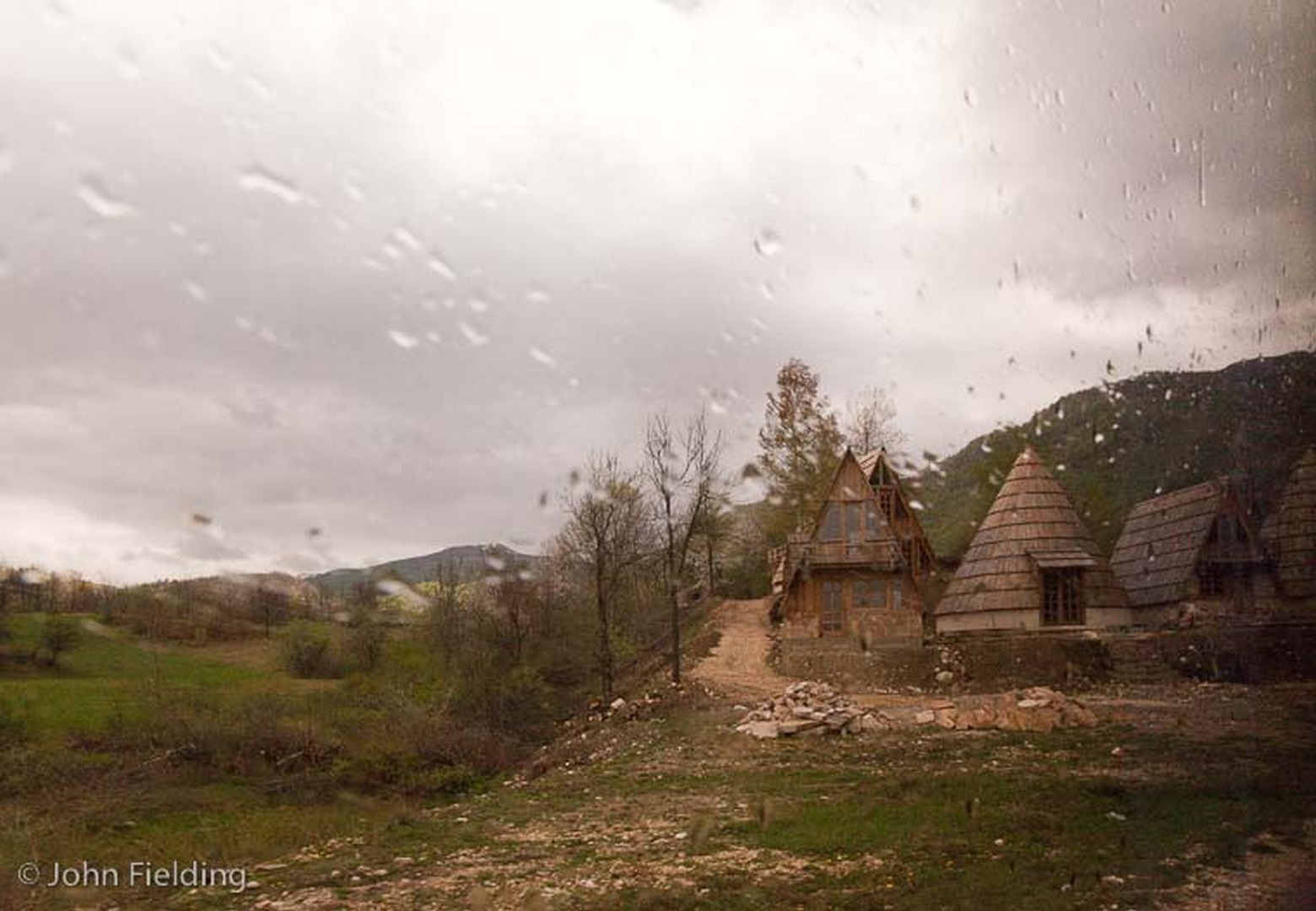
steeply pitched roofs near Krusevice
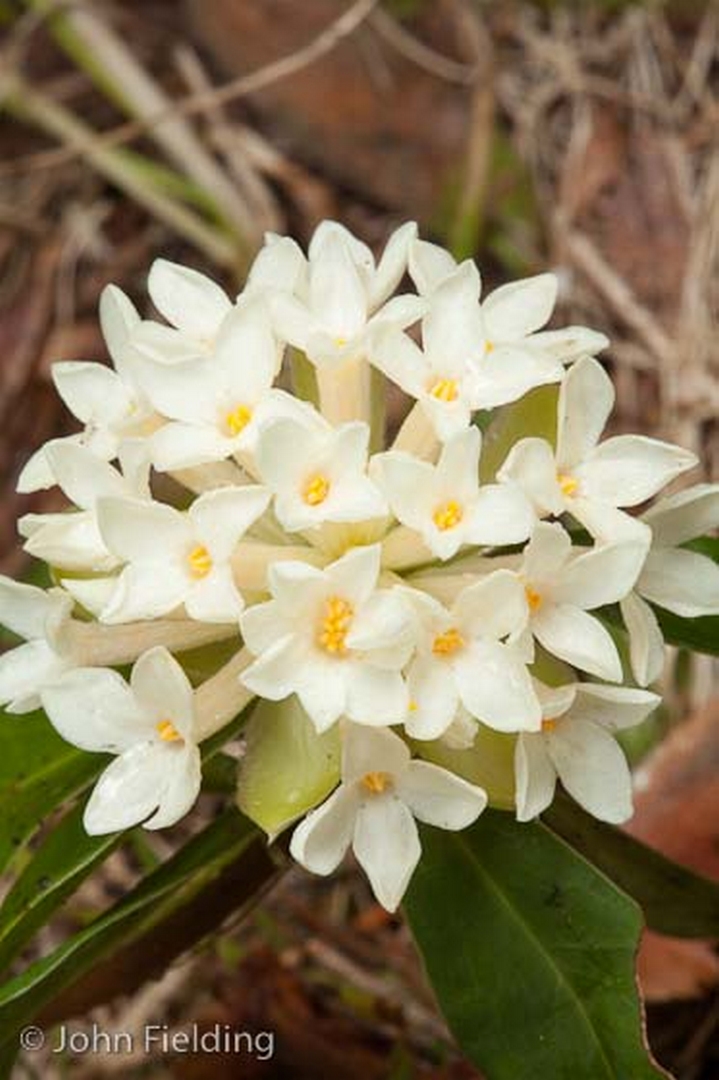
Daphne blagayana

Durmitor National Park
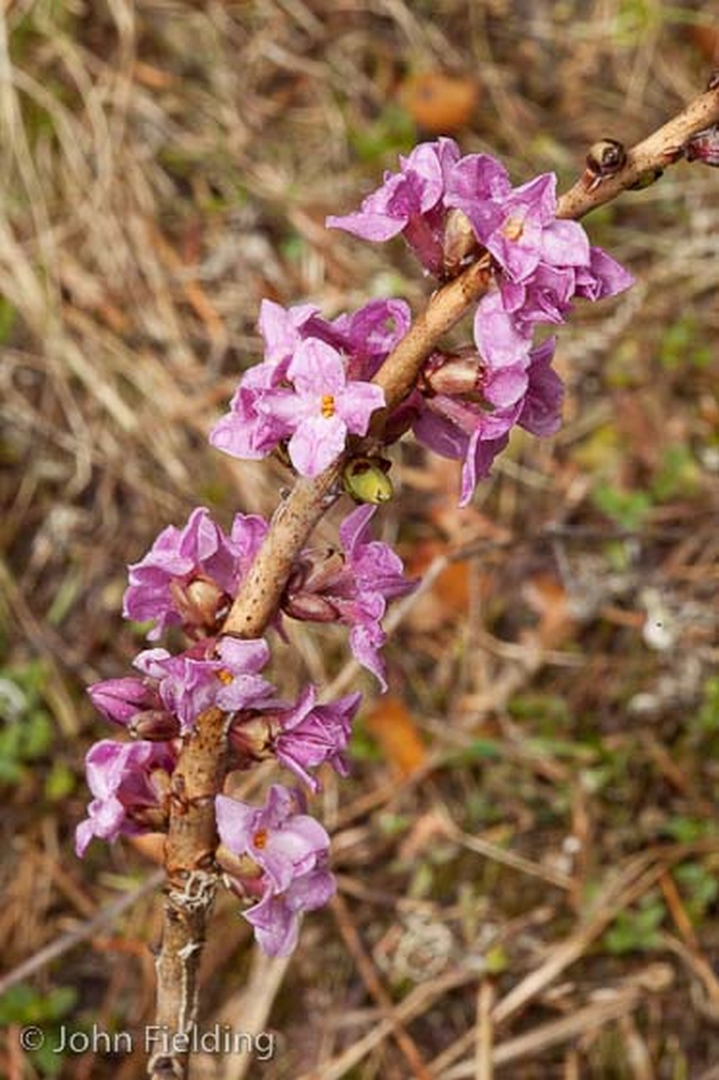
Daphne mezereum
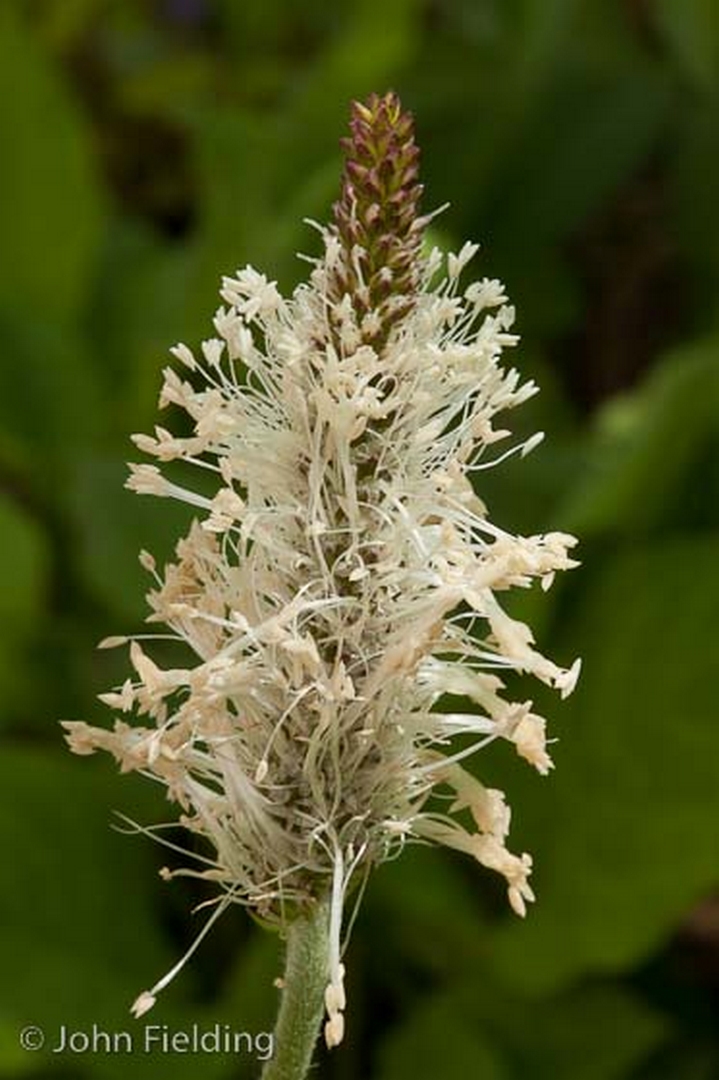
Plantago reniformis
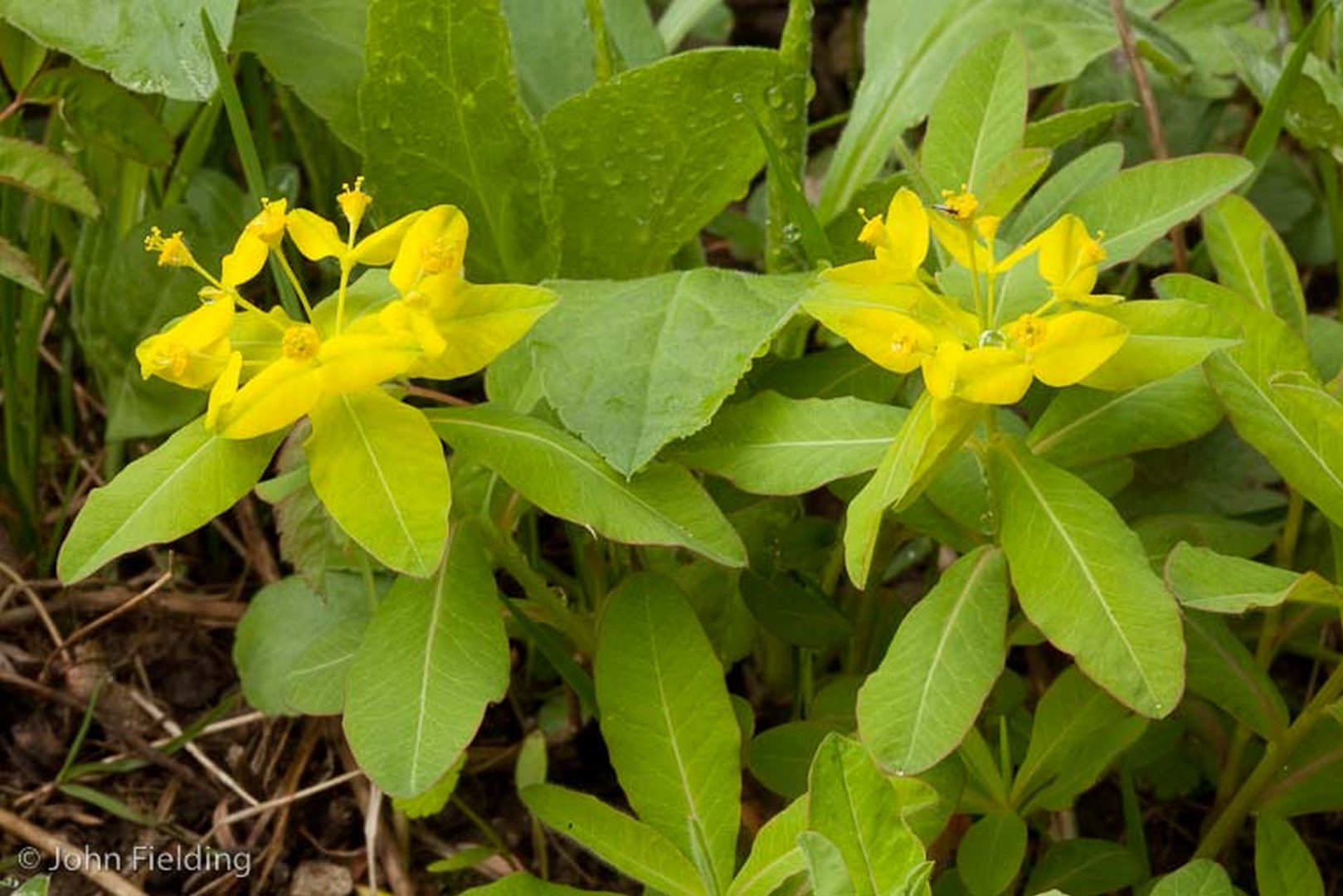
Euphorbia montenegrina
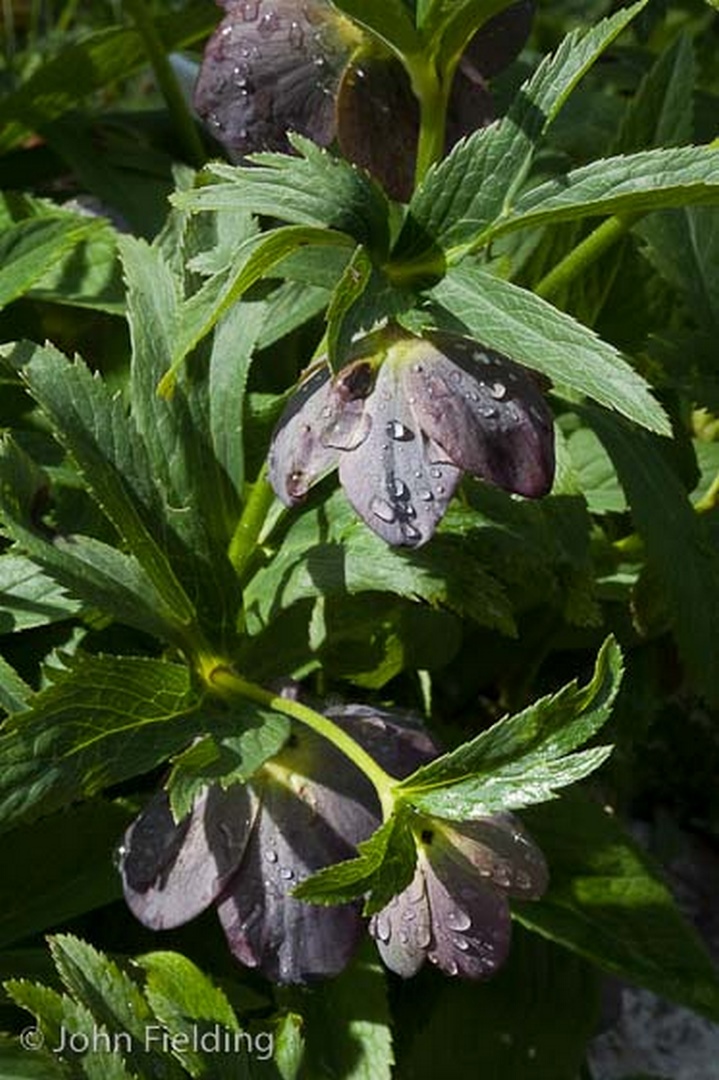
Helleborus serbicus
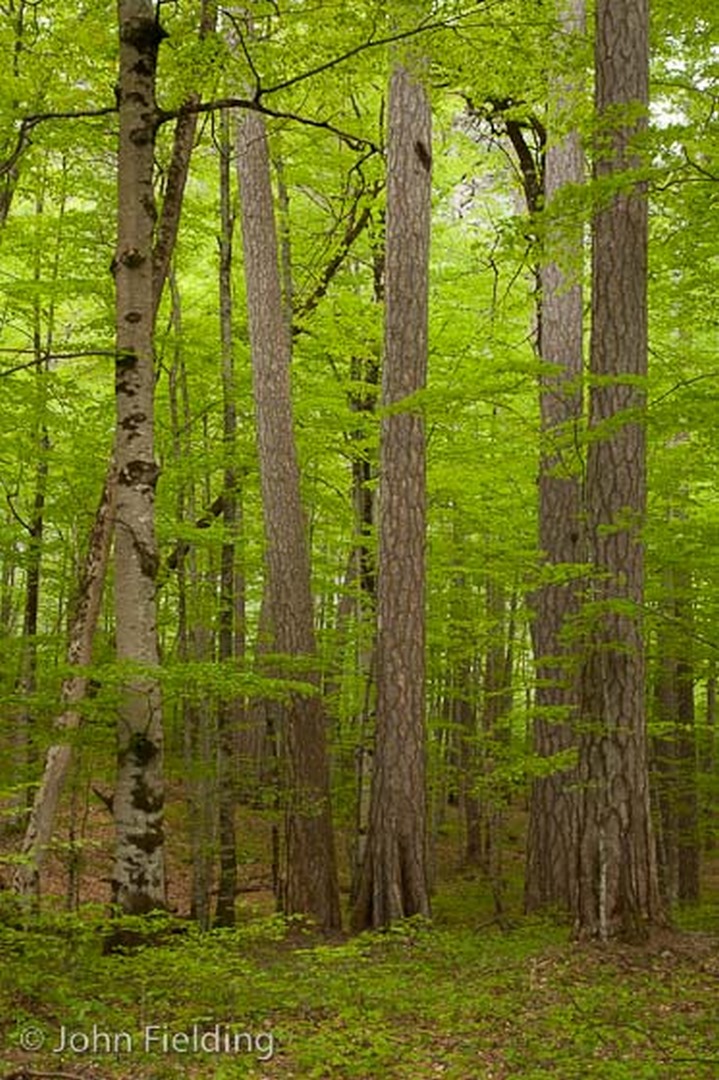
Pinus nigra and Fagus moesiaca

Dactylorhiza sambucina
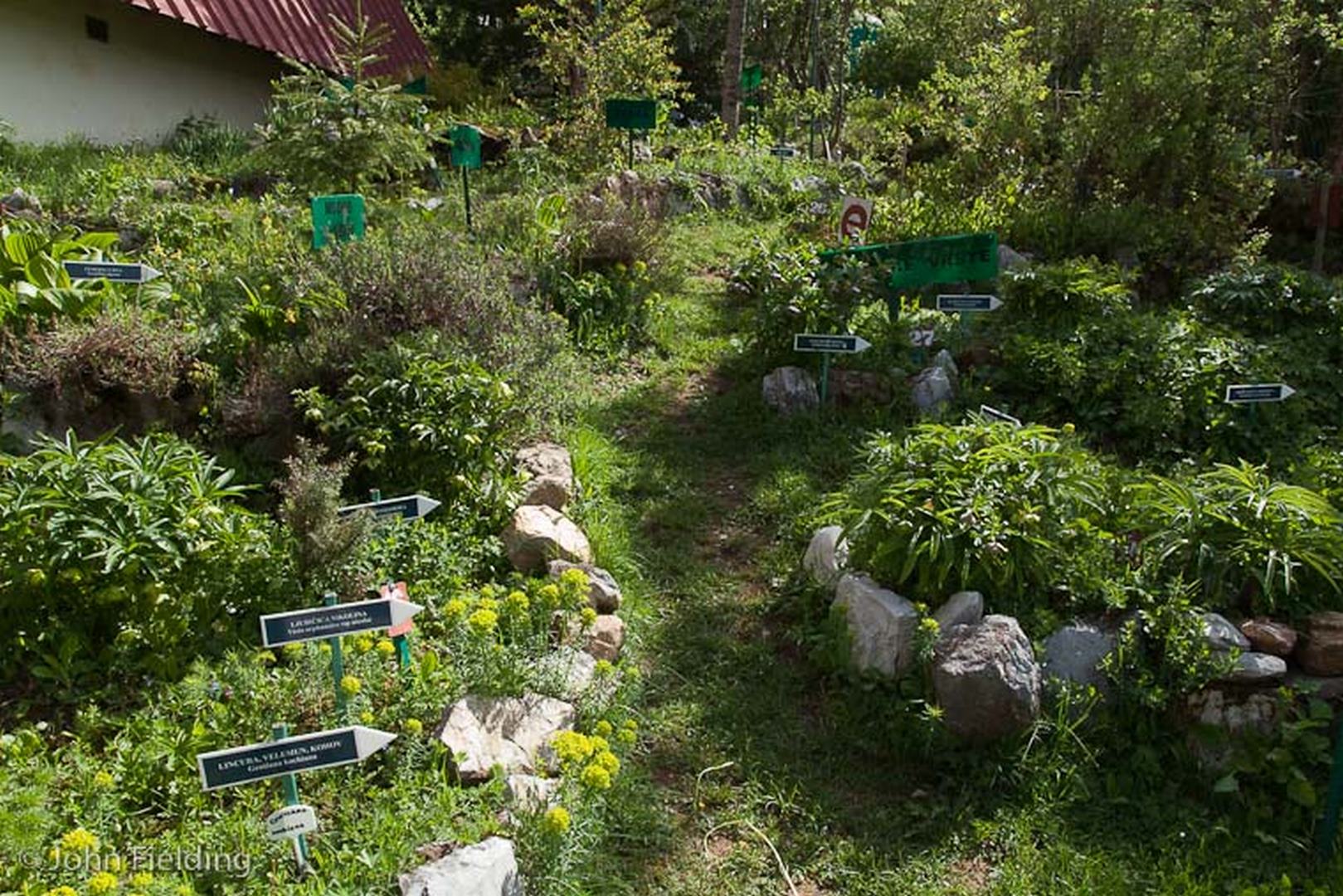
Daniel Vincek’s garden
Plantago reniformis, a plantain with large white flower heads and Euphorbia montenegrina, of particular interest to me as I am working on this genus. Helleborus serbicus was one of many hellebores native to the region growing throughout the garden. The elderflower orchid, Dactylorhiza sambucina, in its yellow form was in perfect flower.
Daniel and his wife Zora (below) were so hospitable and knowledgeable about their flora. Ivan Grdinic from the tourist organisation of Kolašin also showed us round as he was helping Daniel in the garden.
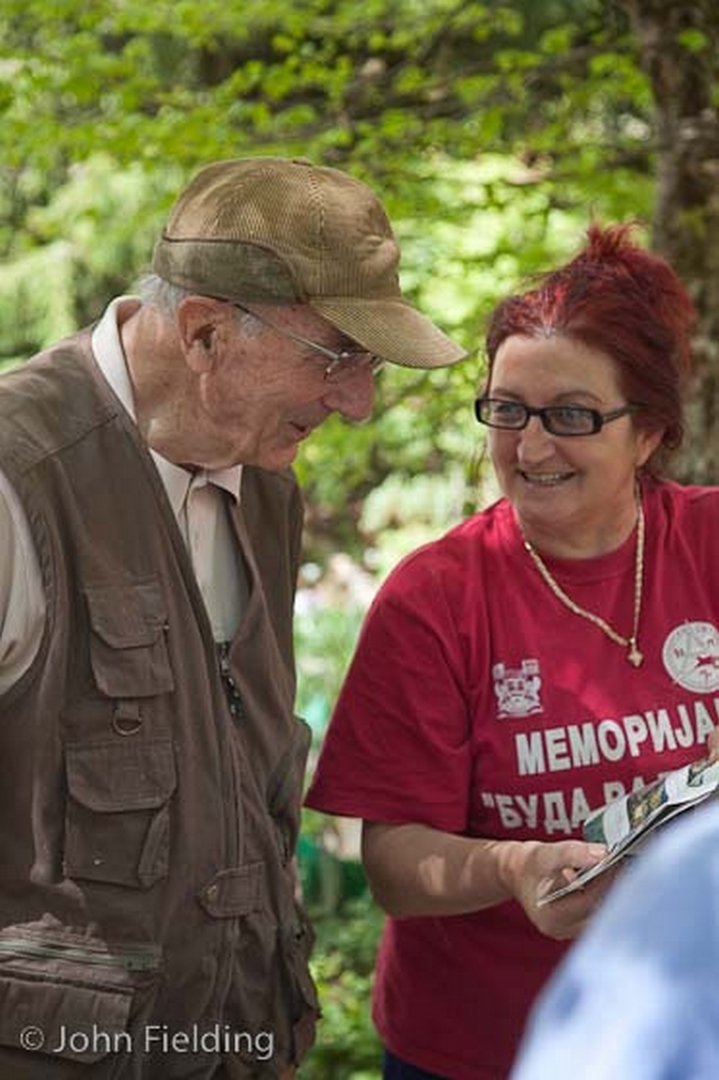
In the afternoon we visited the Biogradska Gora National Park, created in 1952 to protect the untouched natural forest. The lower part of the valley has a large glacial lake and is surrounded by temperate forest dominated by beech, allegedly Fagus moesiaca, said to be intermediate between the European beech, Fagus sylvatica and the oriental beech, allegedly Fagus orientalis. The energetic members of the group zoomed up the mountain above the lake, but as photography doesn’t allow time for striding any distance Jorun and I took the path around the lake. Plants of interest included ramsons, Allium ursinum and Oxalis acetosella, both British natives. Cardamine enneaphyllos (syn. Dentaria enneaphyllos) sporadically the woodland floor and Petasites hybridus in the wet margin of the lake. There was a beautifully constructed raised walkway to take visitors over the boggy water course as it enters the lake under a canopy of beech thriving in the very wet conditions which surprised me. The place was quite magical.
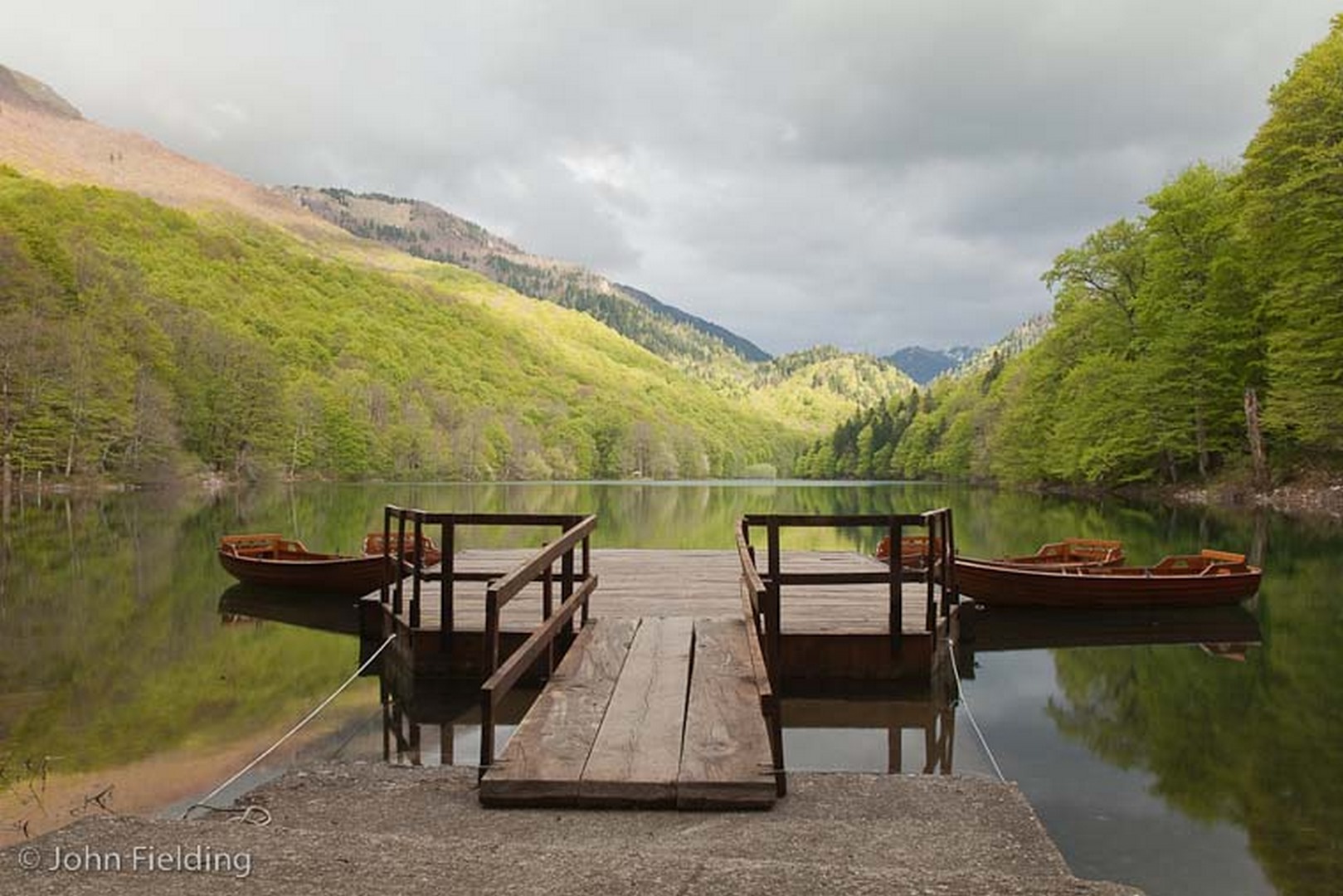
Glacial lake
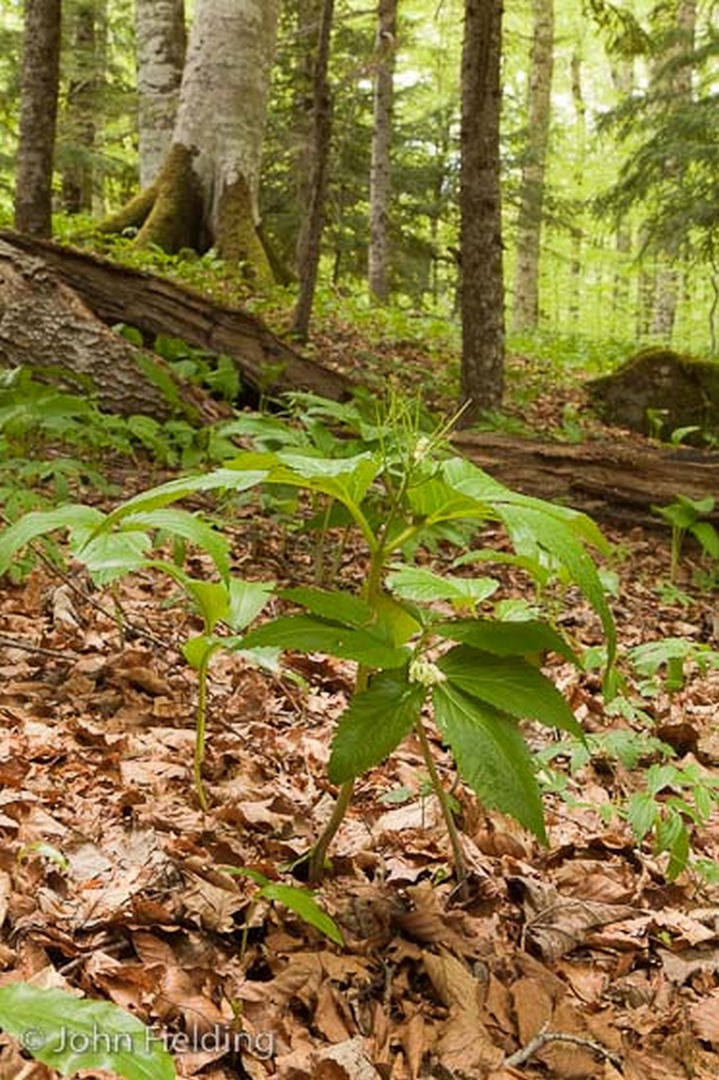
Cardamine enneaphyllos (syn. Dentaria enneaphyllos)
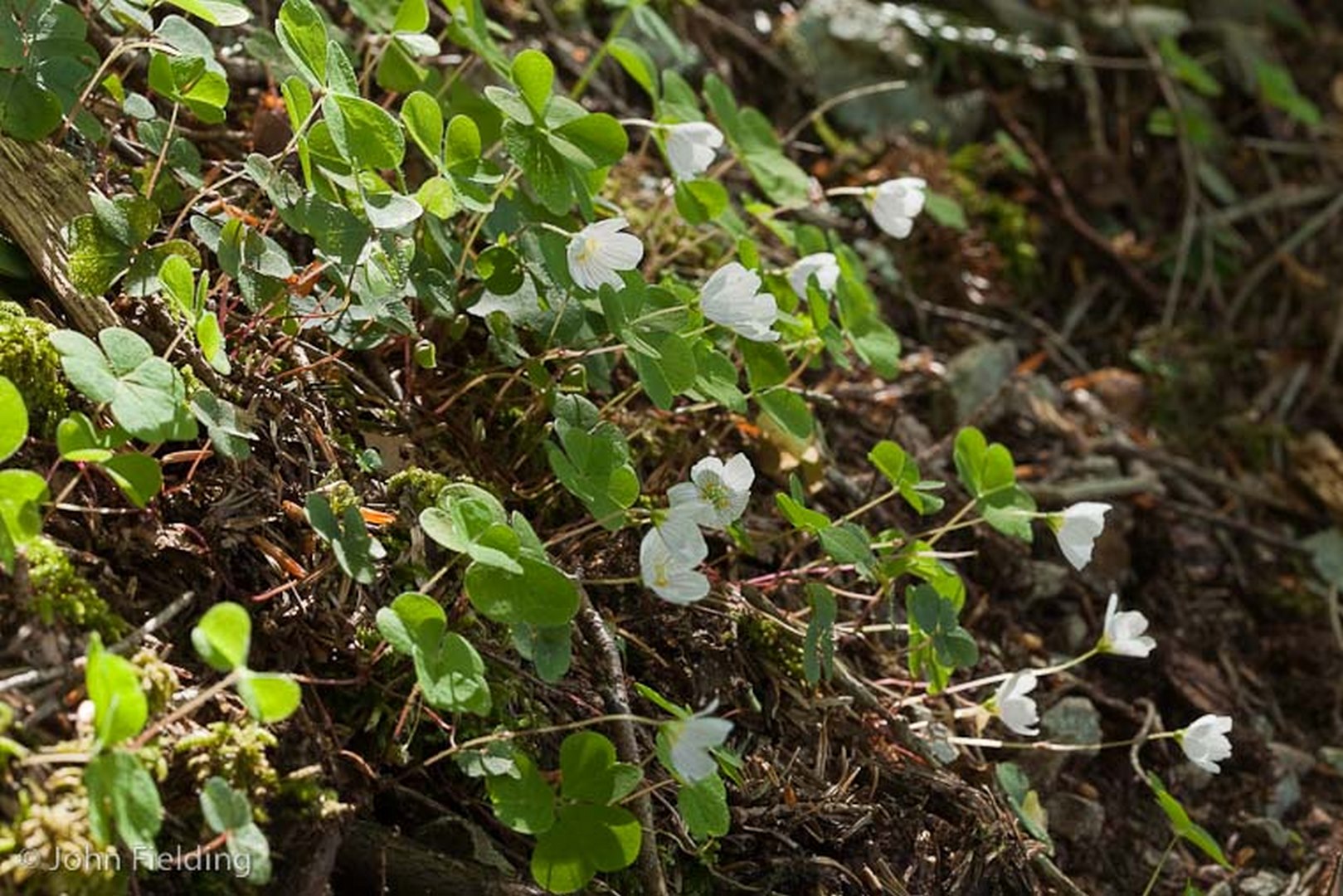
Oxalis acetosella
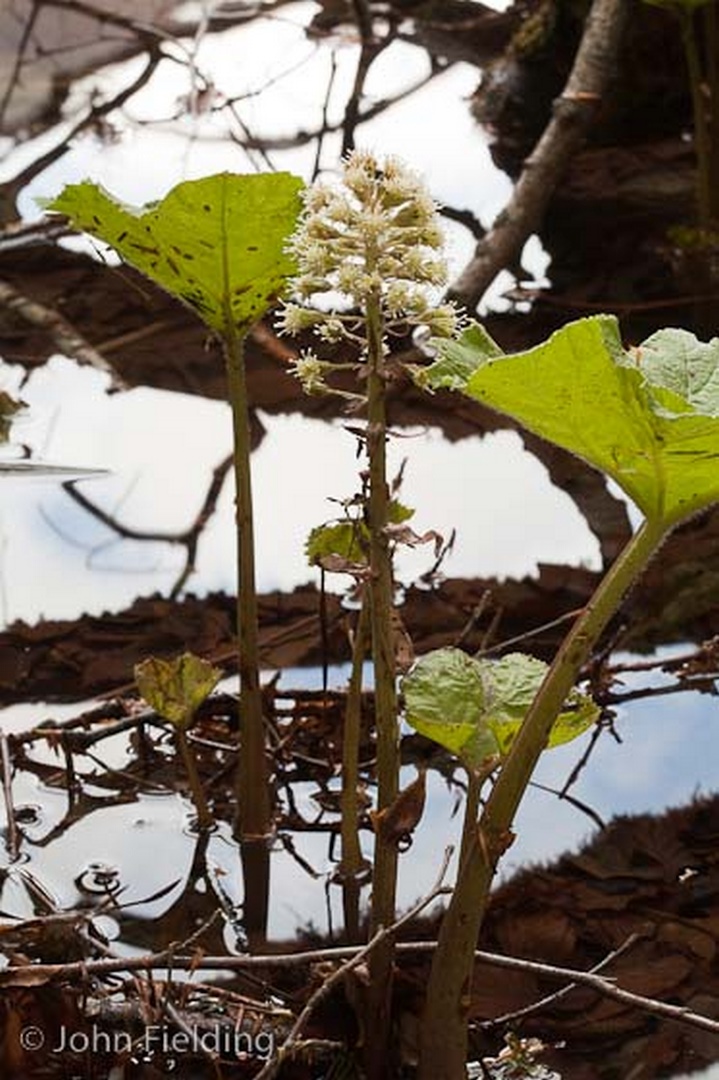
Petasites hybridus
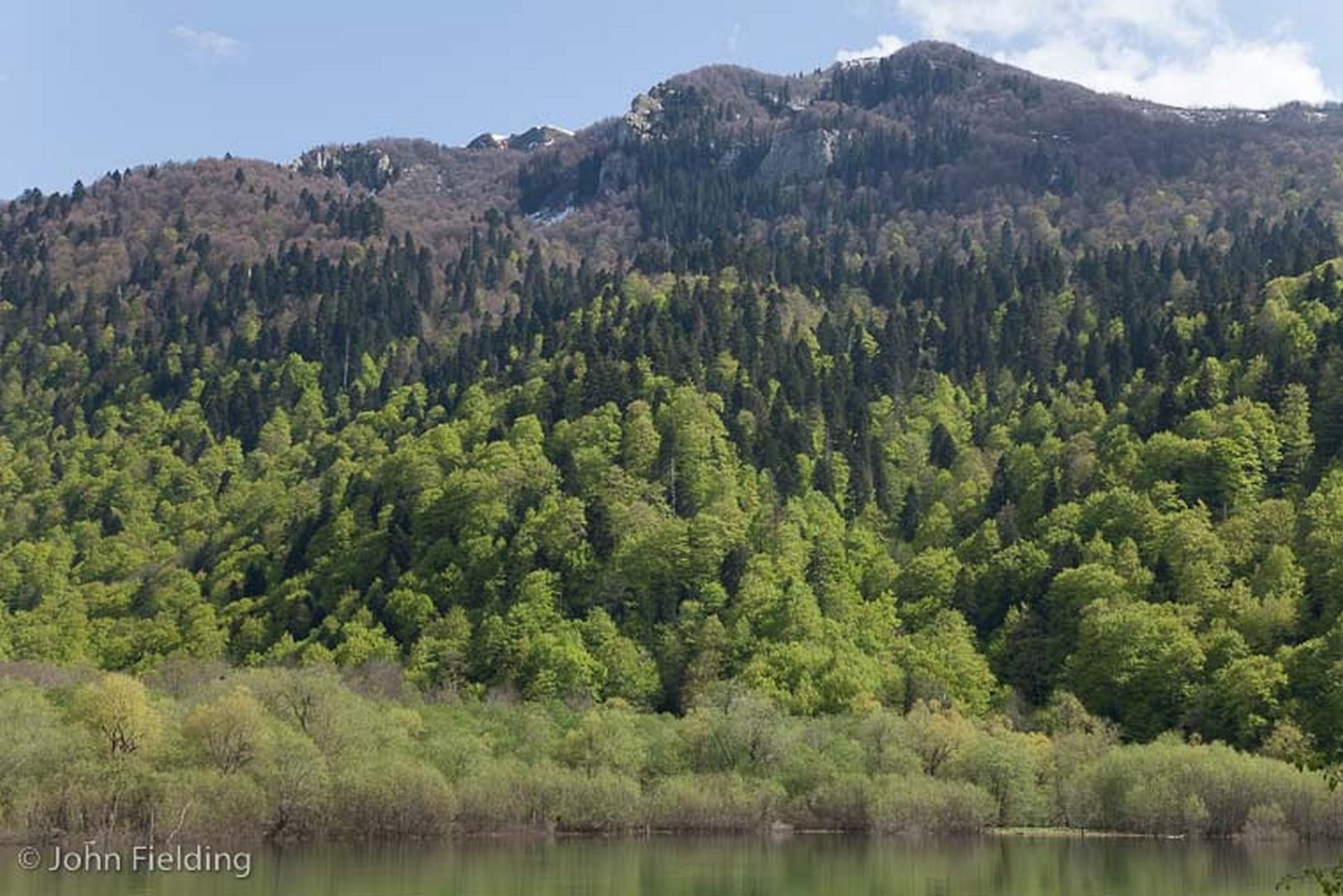
Fagus moesiaca forest
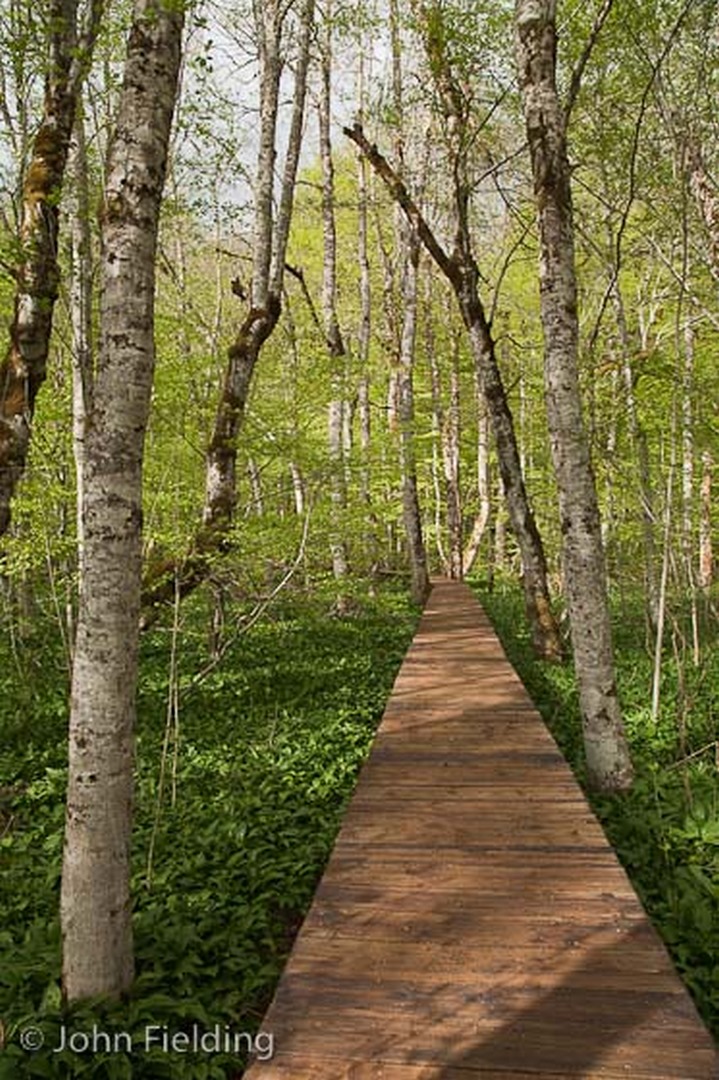
Raised walkway
Next day we headed east to Mount Kom, still with remnants of winters snow and with alpine meadows below covered in Crocus veluchensis – at least that is the name Chris Brickell ended up with. Other names that came to mind were C. vernus, C. heuffellianus and C. scepusiensis. In smaller patches were clumps of Scilla bifolia standing out with distinctly bluish flowers against the mauve of the crocuses. Many were infected with a particularly nasty-looking fungal disease, a type of smut. The dark purple Viola elegantula also dotted the turf but essentially confined to the protection of the few woody plants that were there. One clump was particularly magnificent as the protective shrub had been burnt off leaving the whole plant exposed.
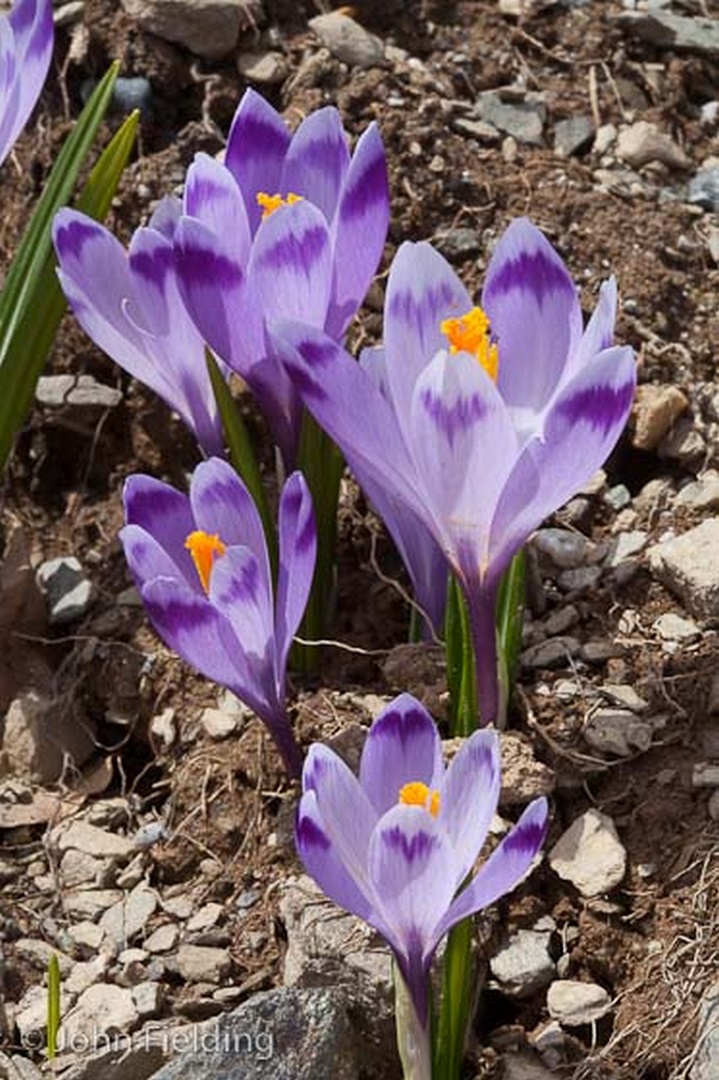
Crocus veluchensis
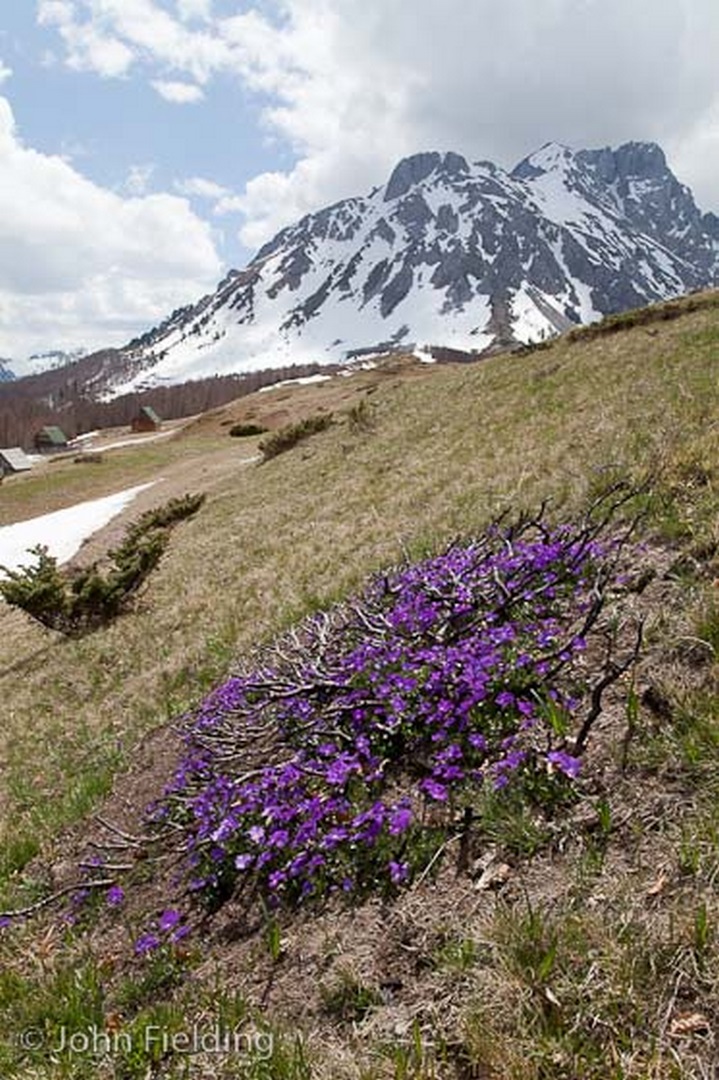
Viola elegantula
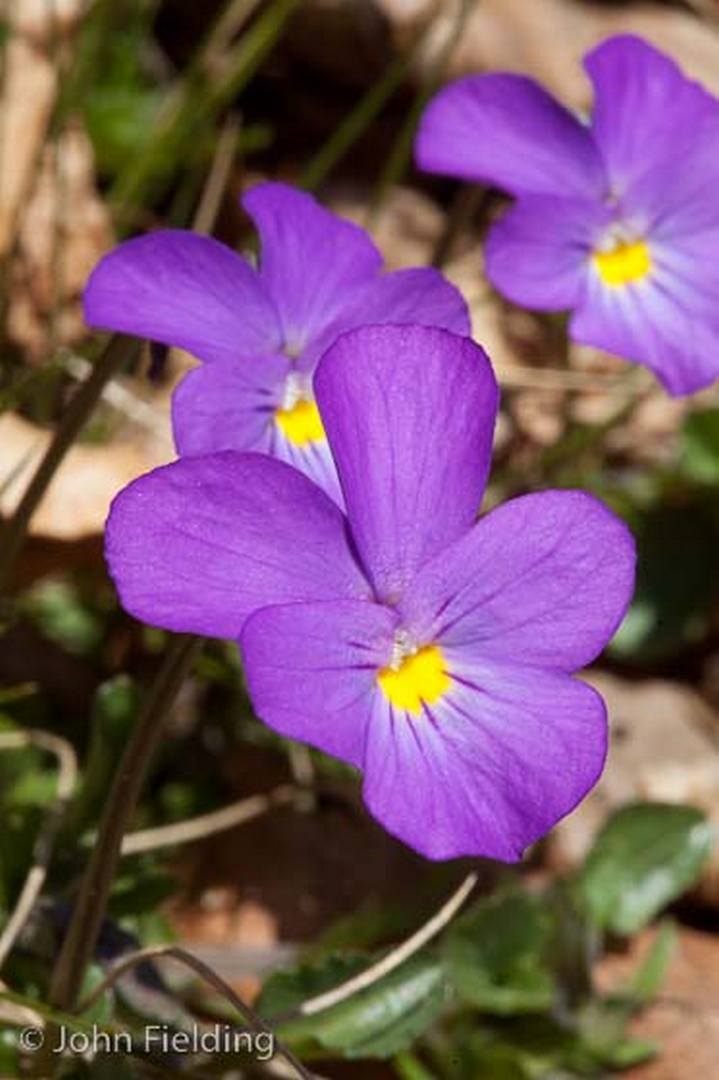
Viola elegantula
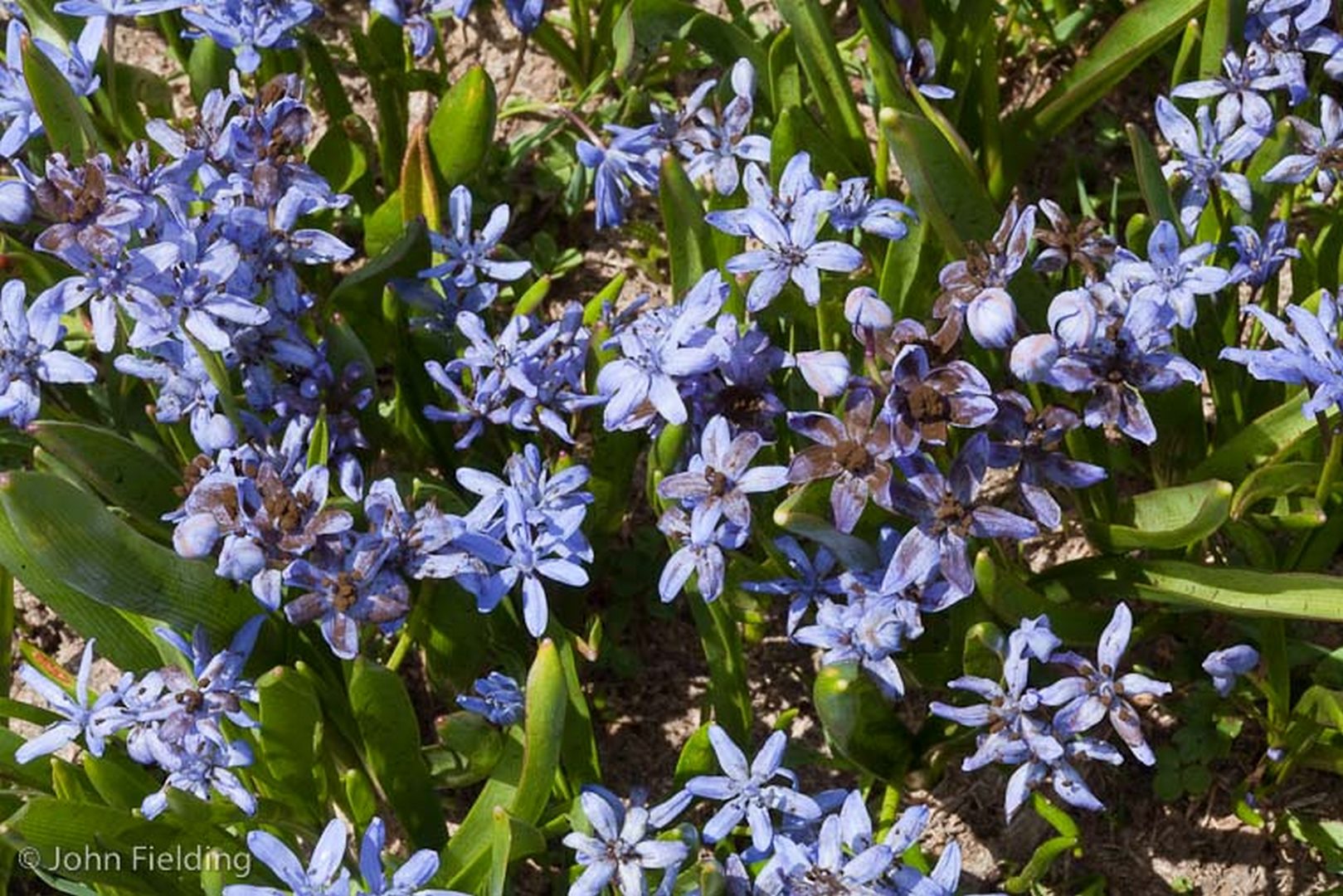
Scilla bifolia
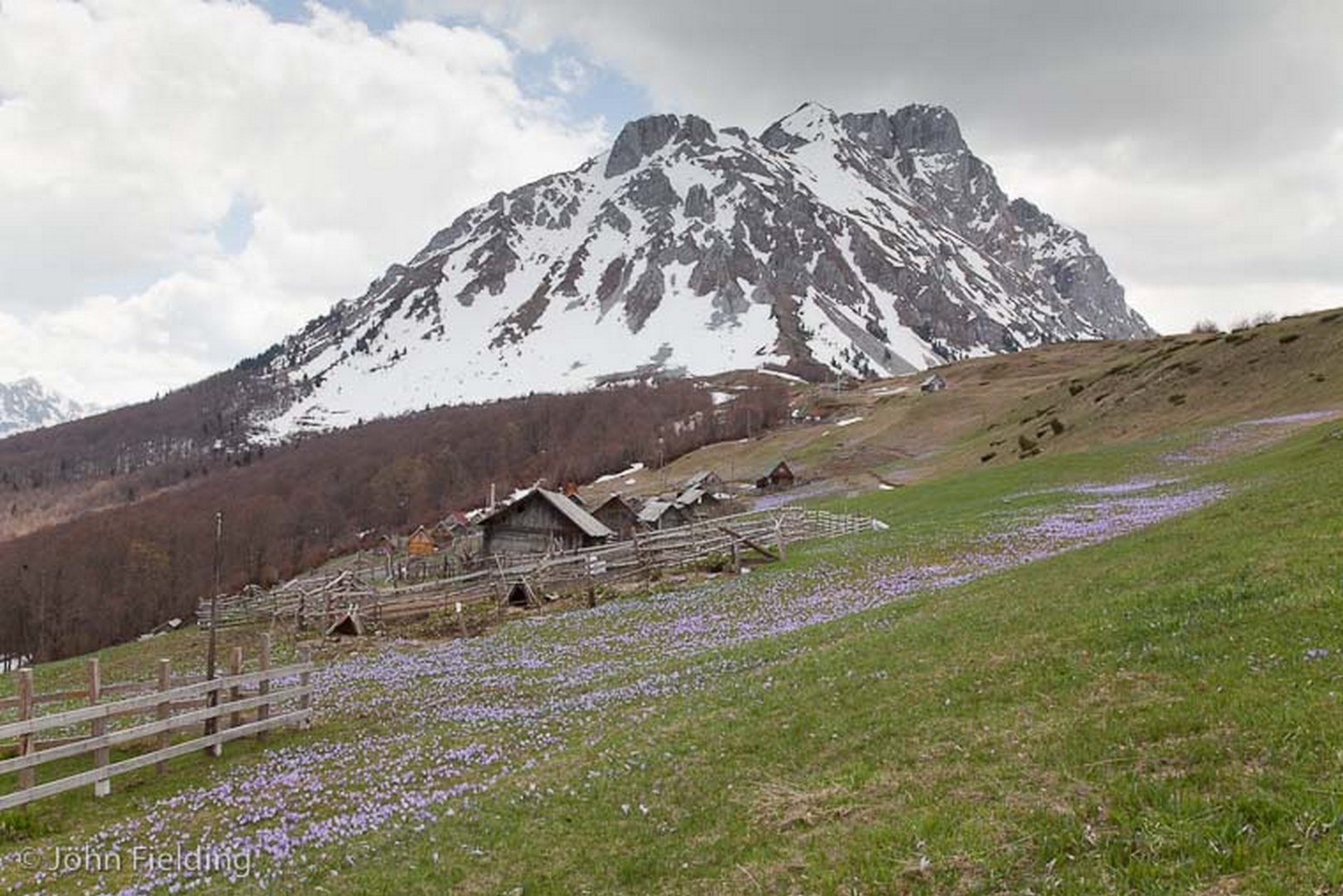
Crocus veluchensis
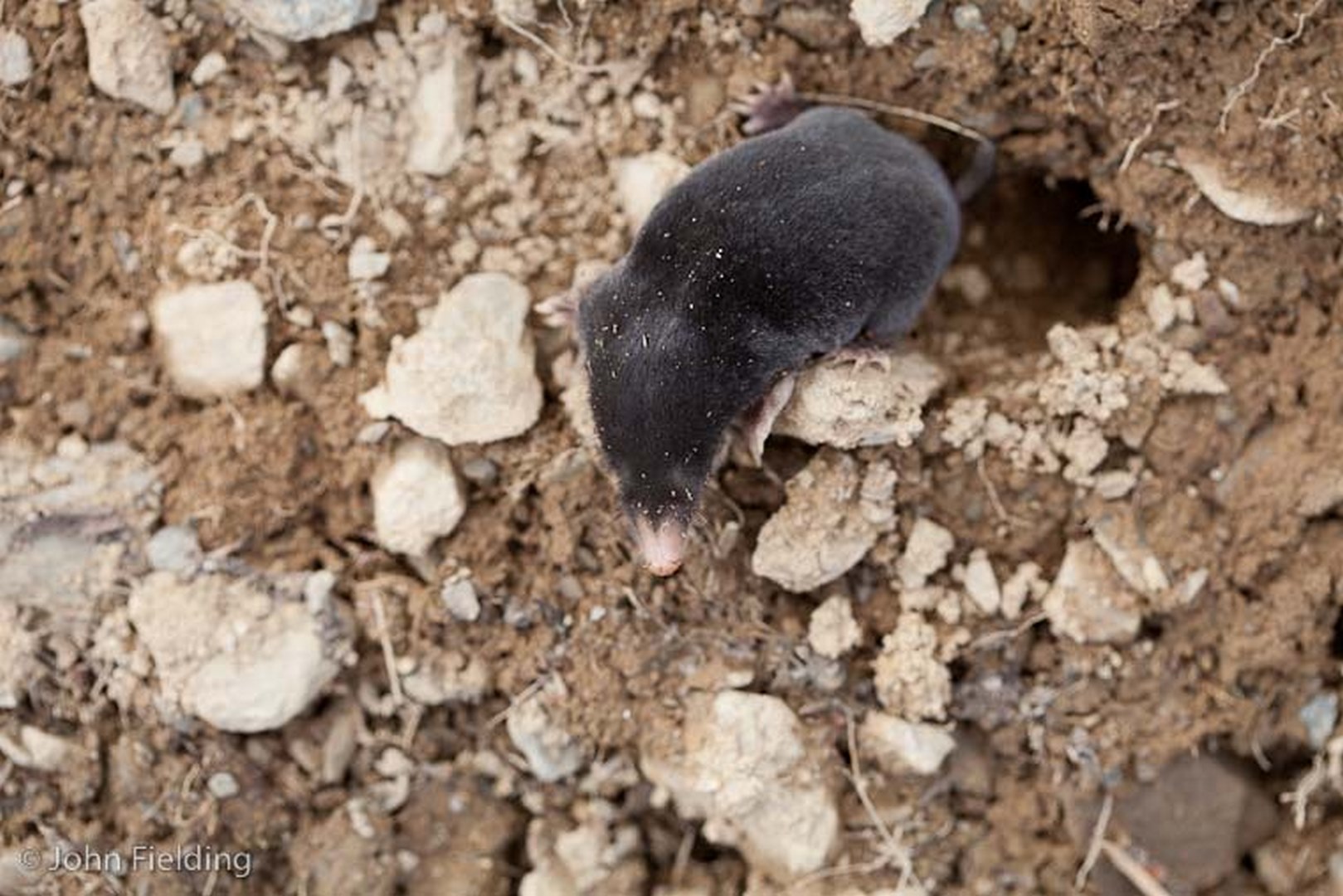
Talpa caeca
I have decided it best not to place it under any particular species as I am likely to be wrong! Alongside the snowdrops were plenty of Corydalis cava in a sombre mauve colour.
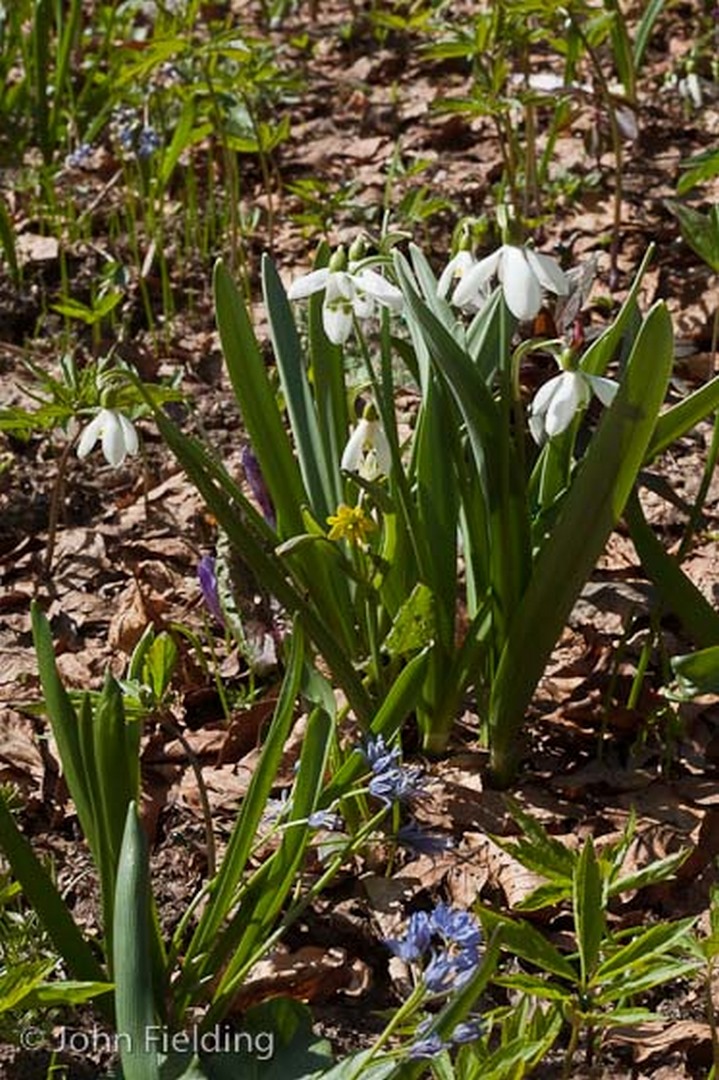
Galanthus sp.
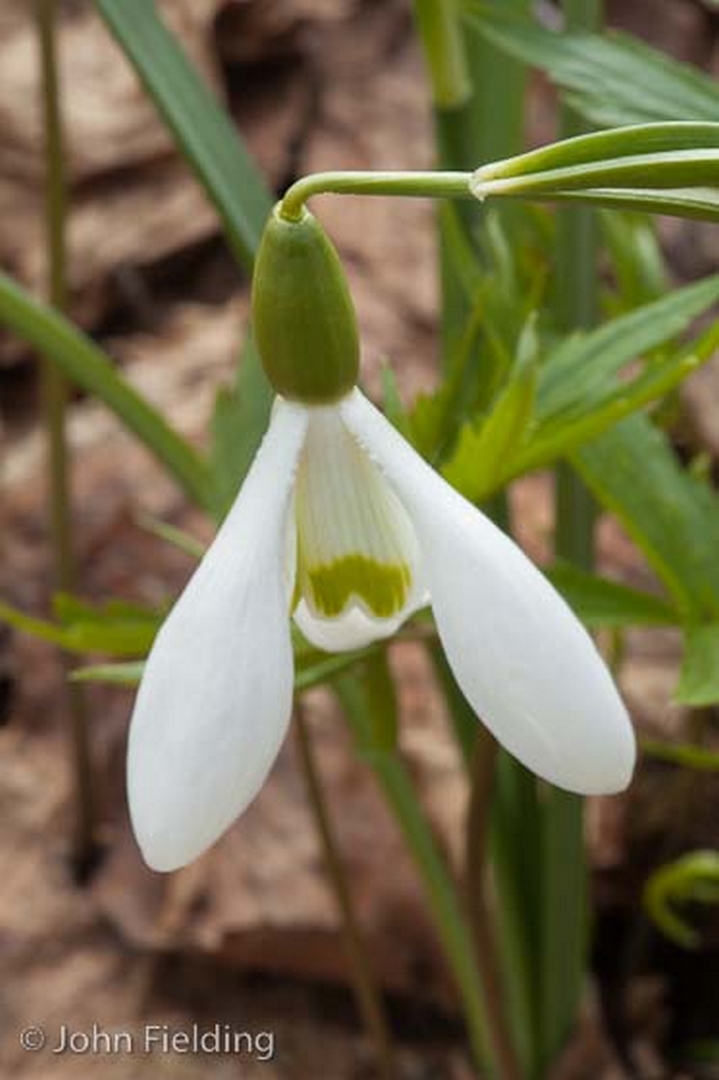
Galanthus sp.
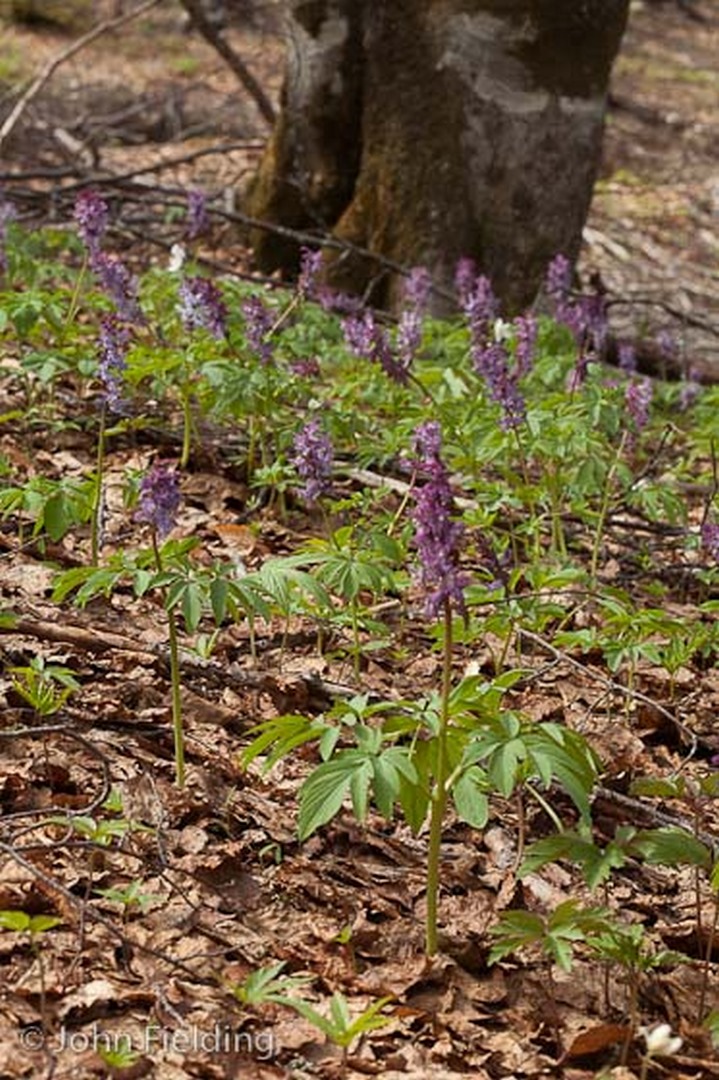
Corydalis cava
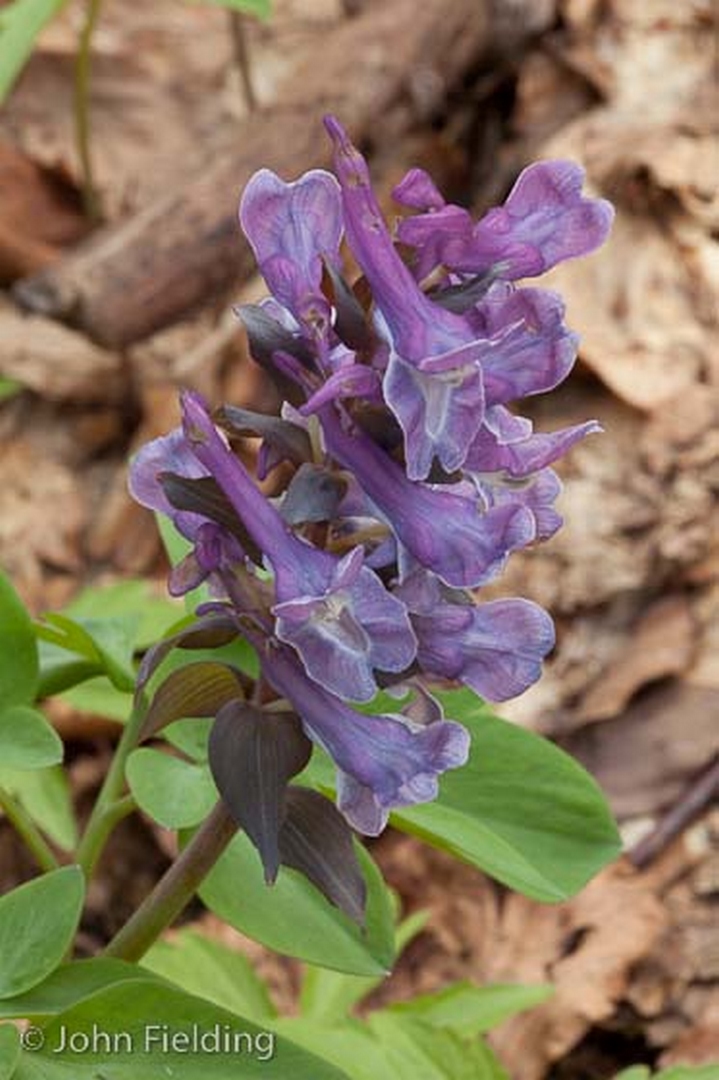
Corydalis cava
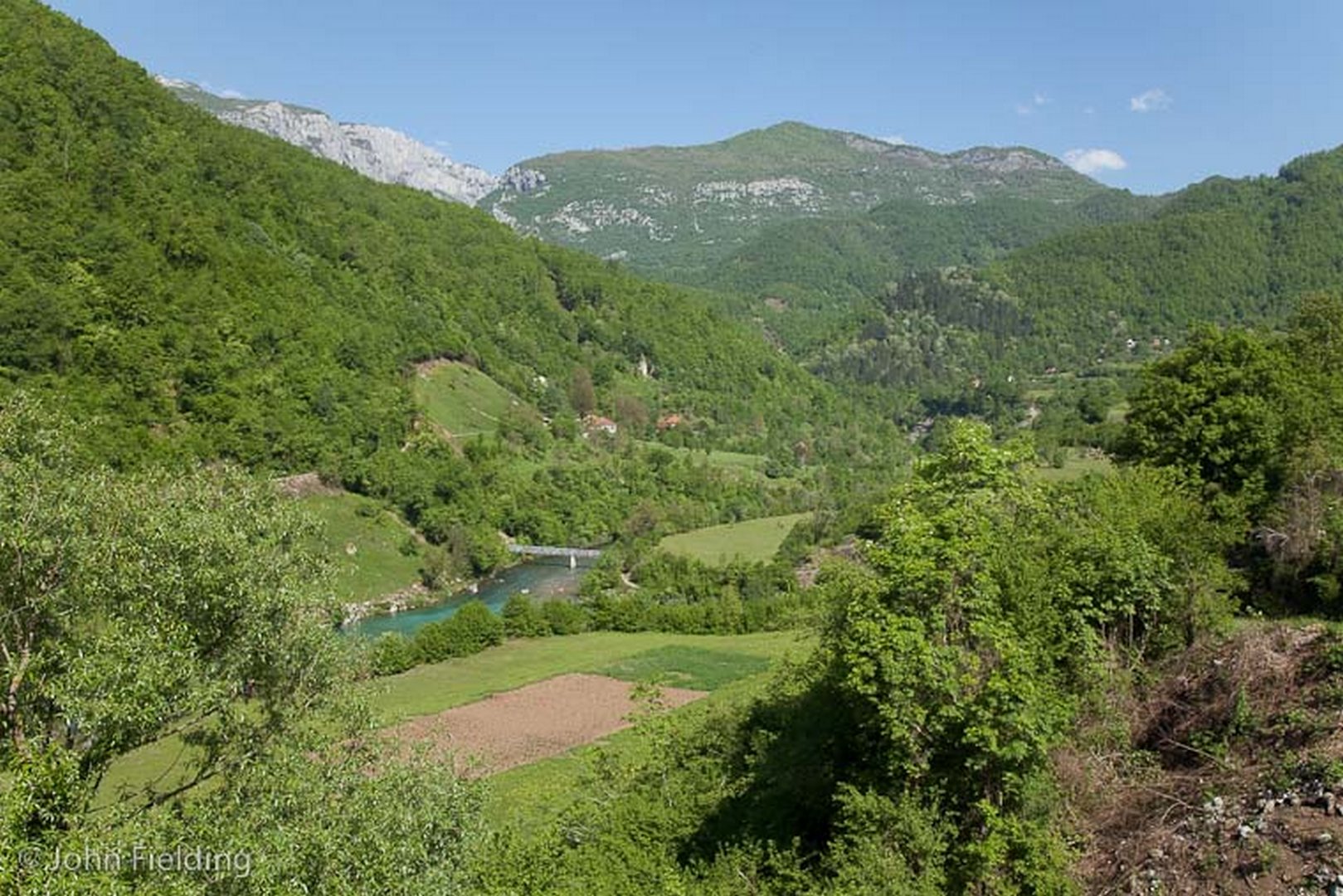
Canyon Mrtvica
Leaving Kolašin we headed south to the Canyon Mrtvica where I failed to get as far as the actual canyon because there were so many interesting plants along the dirt road leading to it. Acer tataricum was in full flower and unusually white for this genus. Saxifraga chrysoplenifolium grew in profusion on the shaded roadside bank with clouds of white flowers alongside Geranium macrorrhizum and Geranium molle (syn. G. molle subsp. brutium). Another Saxifraga sp. probably S. paniculata grew in one spot through the thick moss on a shaded bank. Pseudofumaria alba seemed to be only in one shaded spot, until recently known as Corydalis ochroleuca and along with the other yellow species Pseudofumaria lutea commonly naturalised in the UK.
Other plants of note in flower were Ajuga orientalis, Arum italicum, Asarum europaeum, lady fern, Athyrium felix-femina, Colutea arborescens, Cyclamen hederifolium, broad buckler fern, Dryopteris dilatata, Euphorbia carniolica, wild strawberry, Fragaria vesca, yellow archangel, Lamium galeobdolon in its plain leaf form, Lathyrus venetus, Lathyrus vernus, Helleborus sp., Omphalodes verna, Polygonatum multiflorum, Quercus cerris, Tilia platyphyllos and Vincetoxicum hirundinaria.
I list all these to show just how rich this site is, a sample of what we saw in a relatively short time.
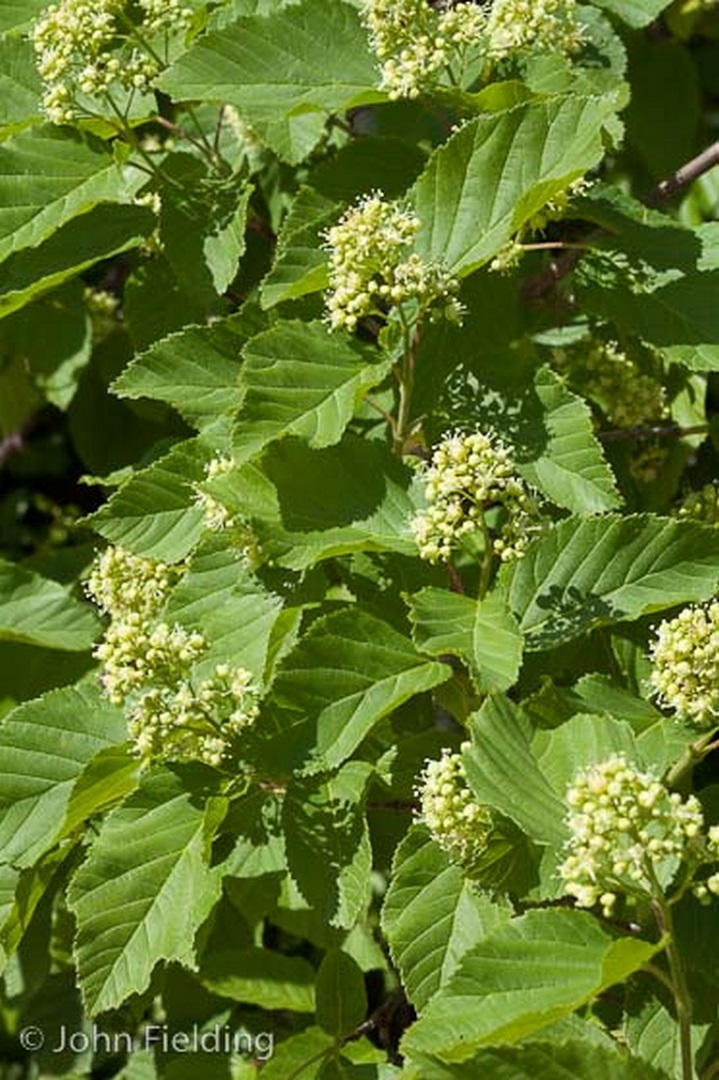
Acer tataricum
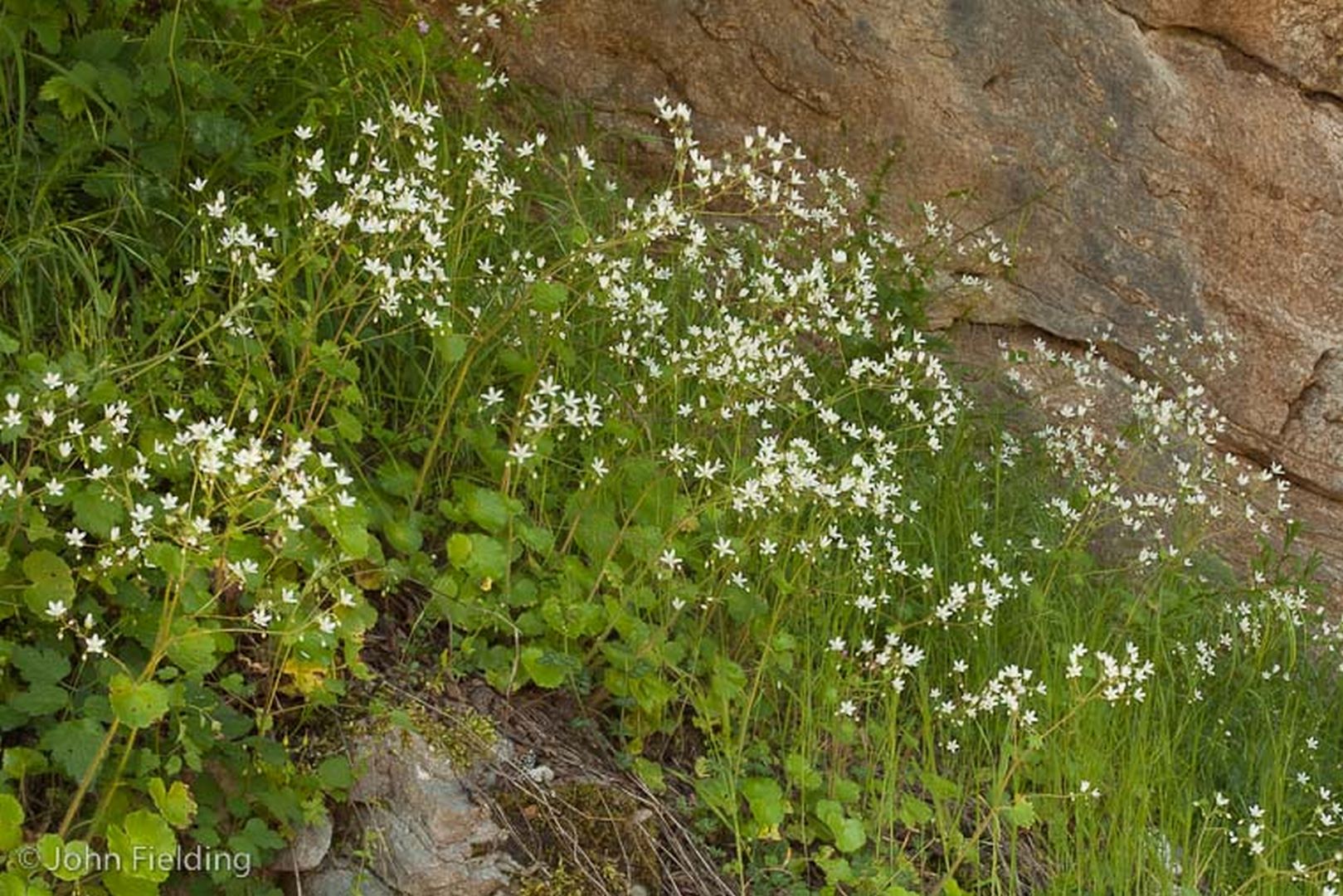
Saxifraga chrysoplenifolia
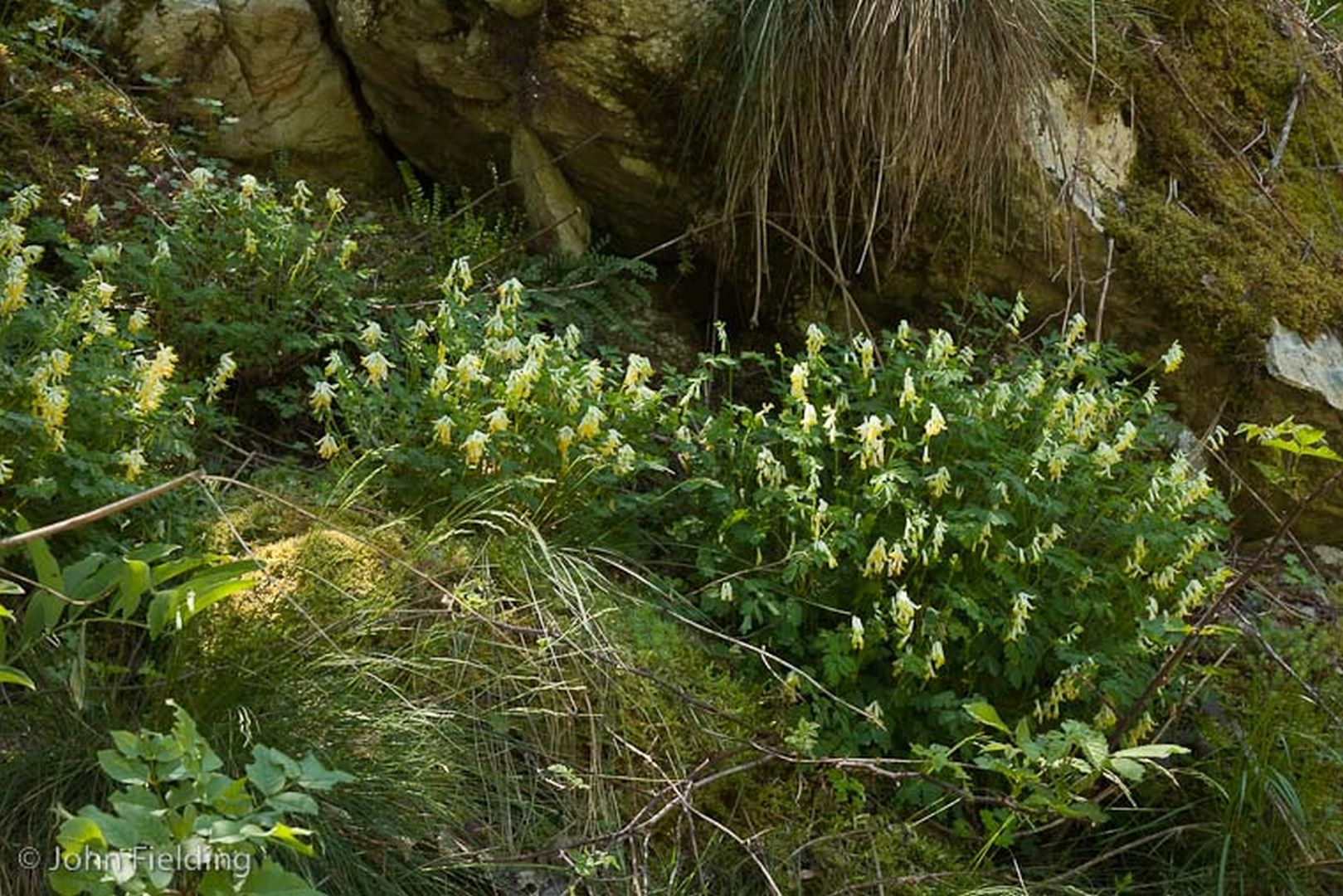
Pseudofumaria alba
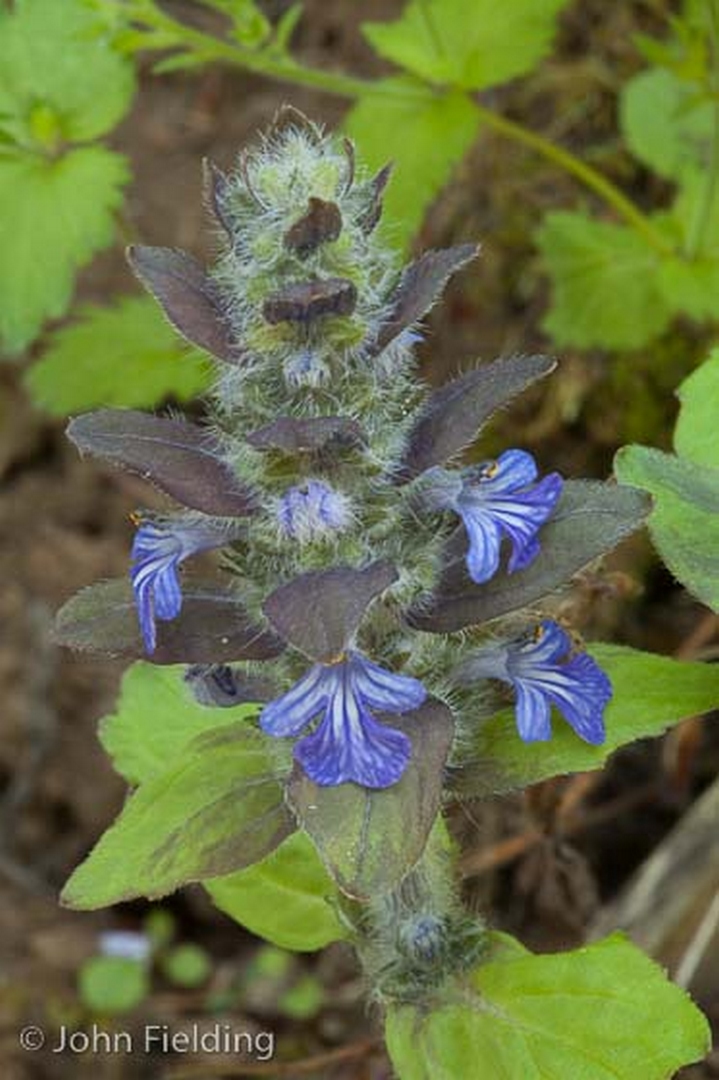
Ajuga orientalis
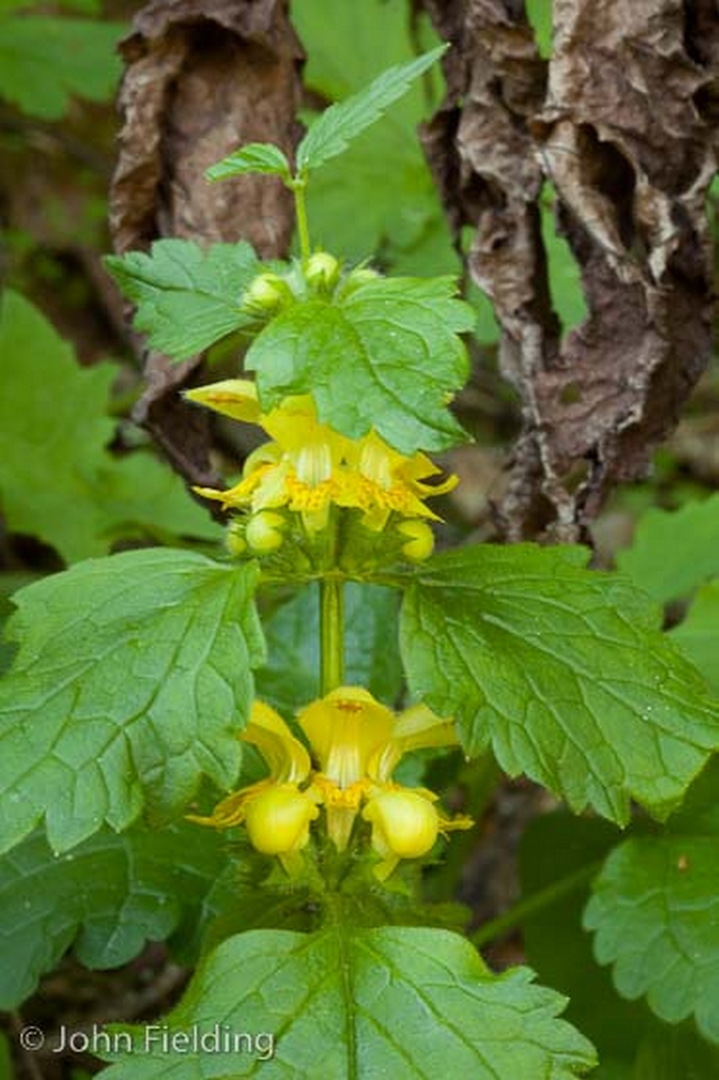
Lamium galeobdolon
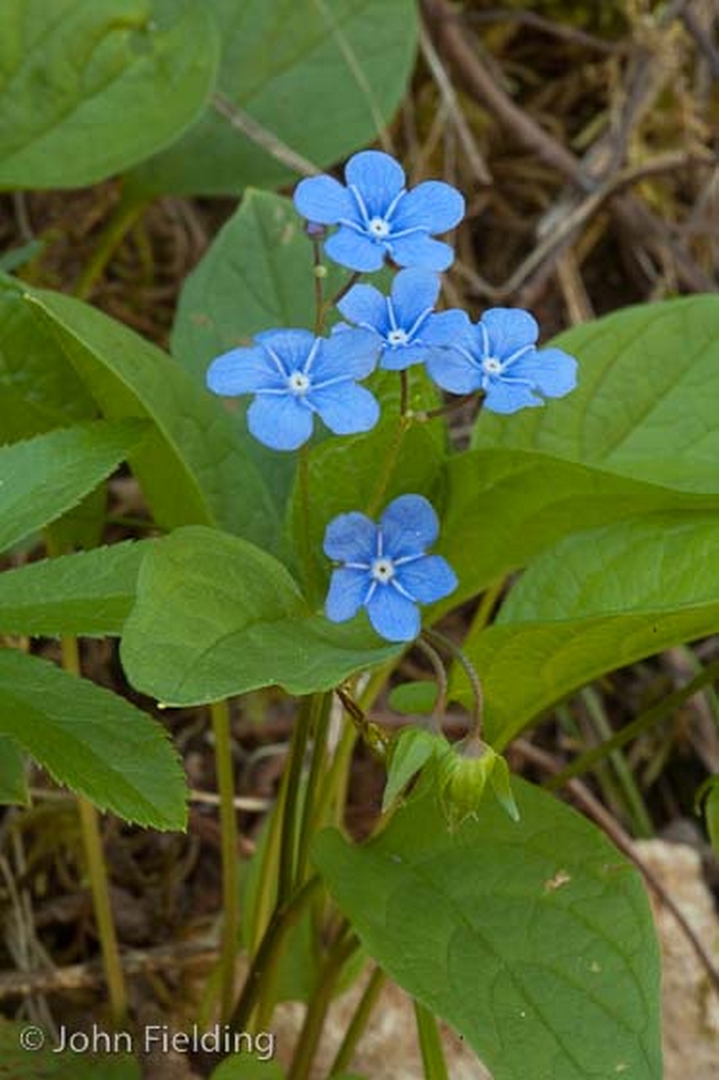
Omphalodes verna
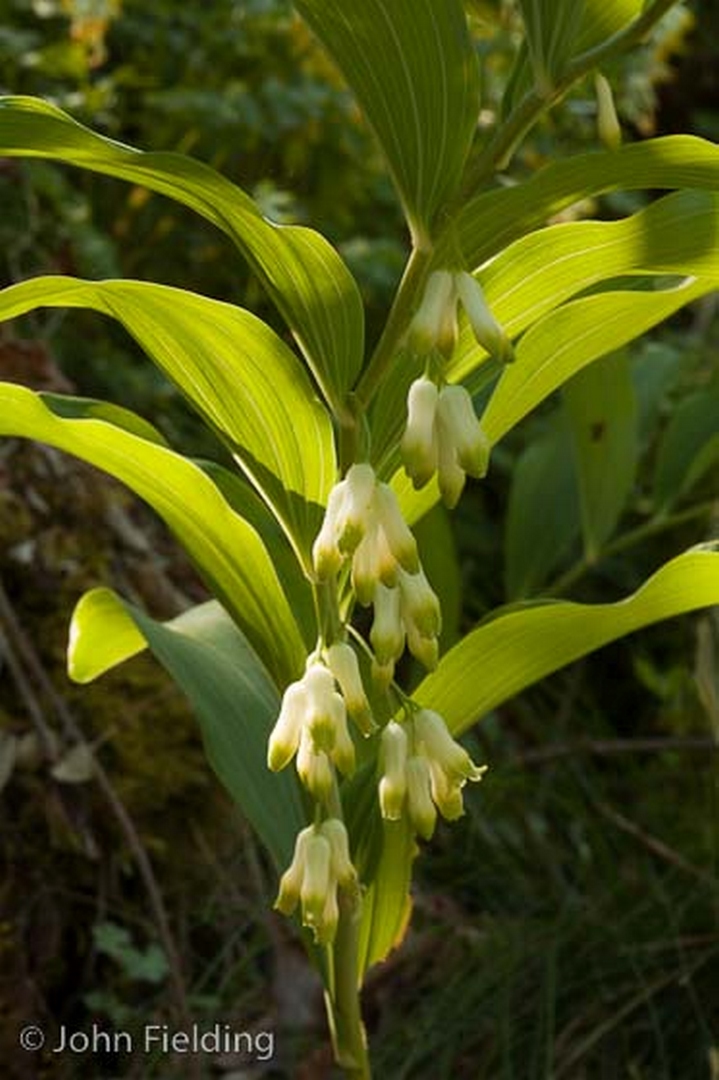
Polygonatum multiflorum
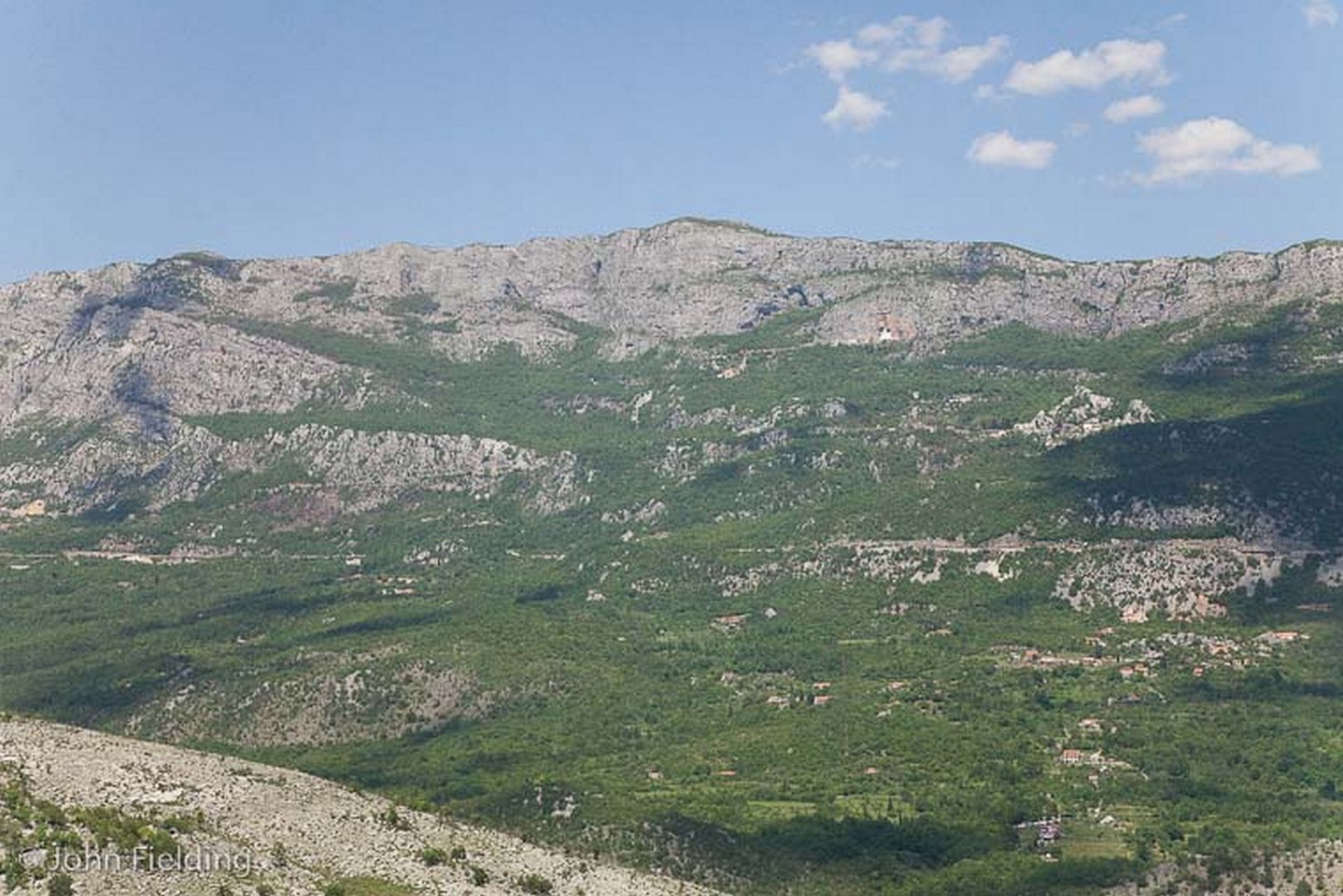
Monastery Ostrog
In the afternoon we headed for the Monastery Ostrog.
I say “we” but again I and one other, after leaving the bus, walked back down the road for the plants. Here there was a much more Mediterranean element. Surprisingly I managed a few kilometres, or at least it felt like I did as it was now quite hot. I finally got some good shots of Euphorbia characias subsp. wulfenii as we had passed so many on the first day after leaving the coast and more E. spinosa. Euphorbia myrsinites was here too but at this altitude it was well into seed, though still very beautiful.
The most striking plant was Moltkia petraea growing on the rock face with vivid blue flowers in the borage family. One plant of Iris pallida was in flower, it is a soft mauve bearded iris that you see occasionally growing in the UK. There was an impressive clump growing at Graham Gough’s Marchants Hardy Plants, in May. True wild sage, Salvia officinalis was common here and this was the only time on this trip I saw the smoke bush, Cotinus coggygria.
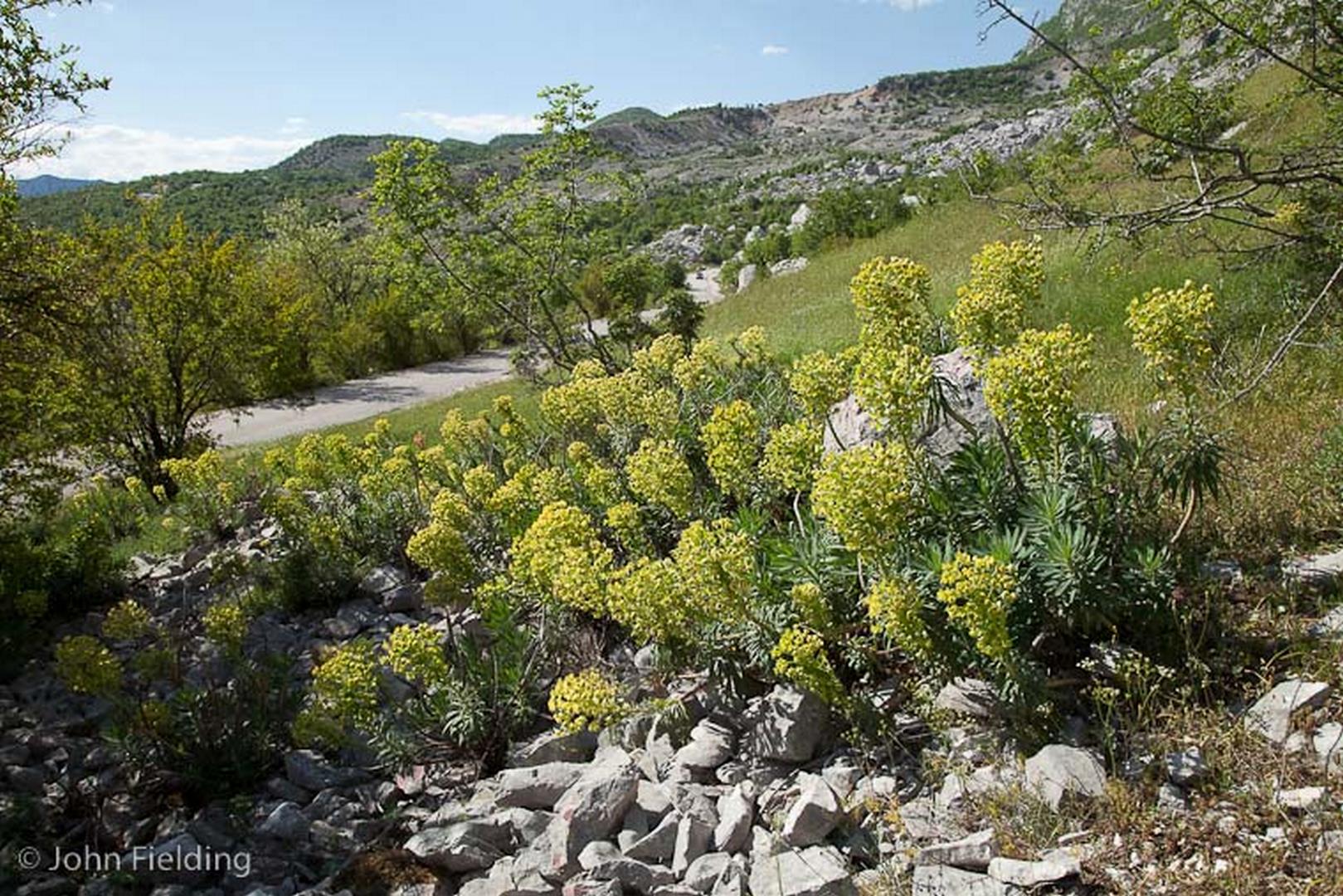
Euphorbia characias subsp. wulfenii
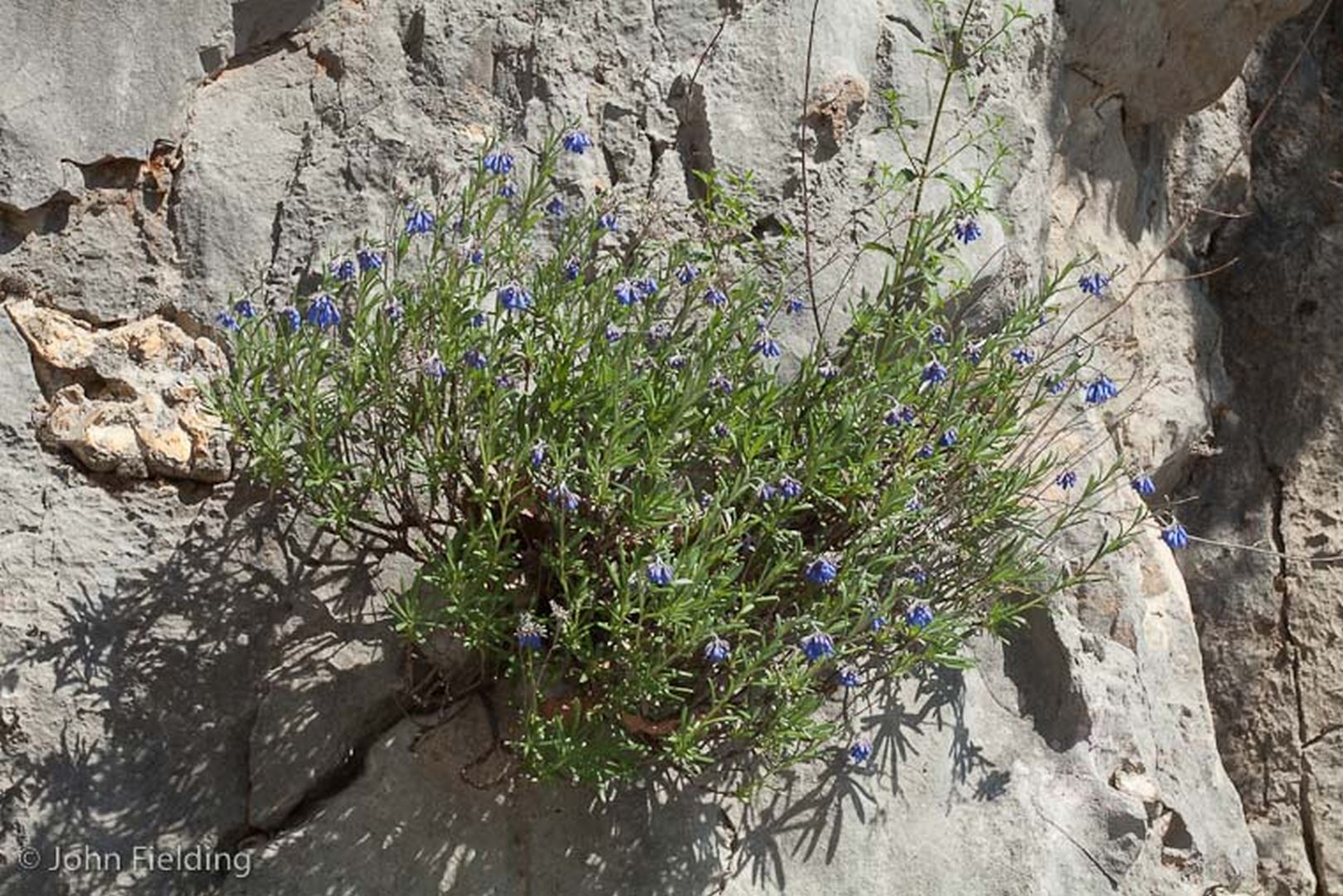
Moltkia petraea
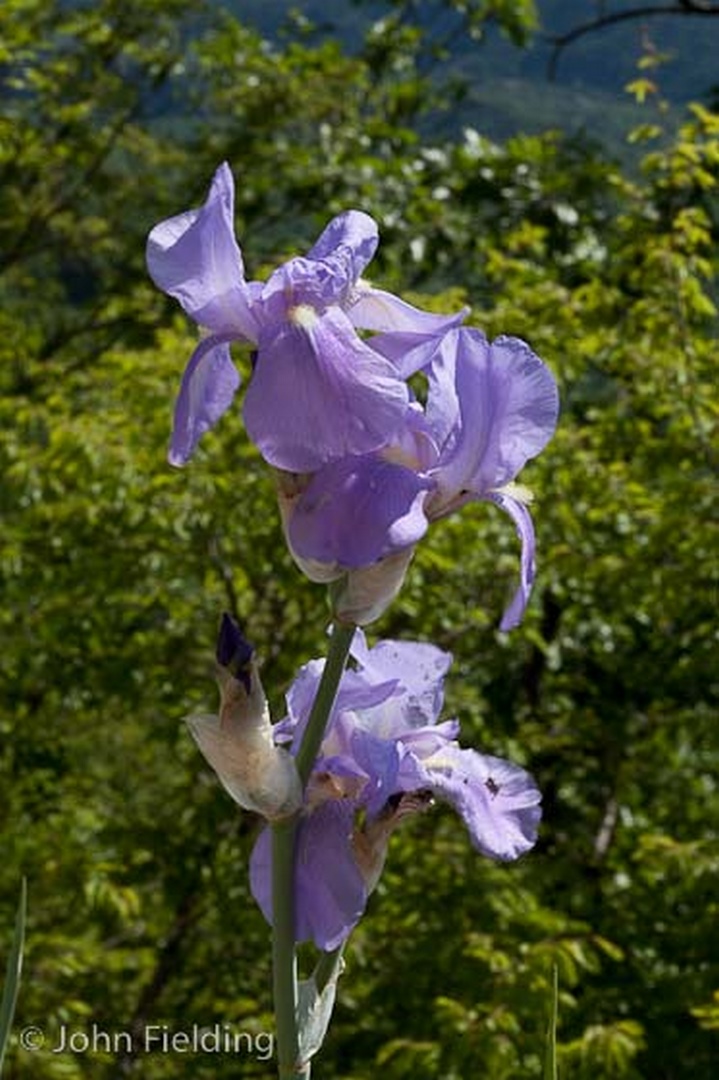
Iris pallida
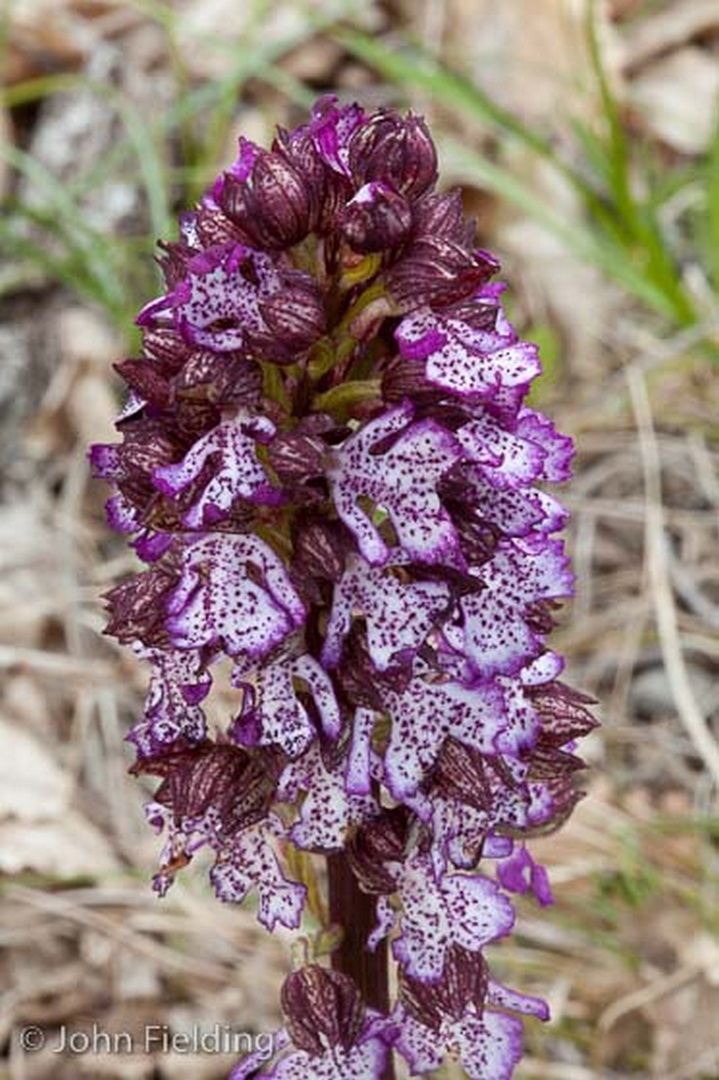
Orchis purpurea
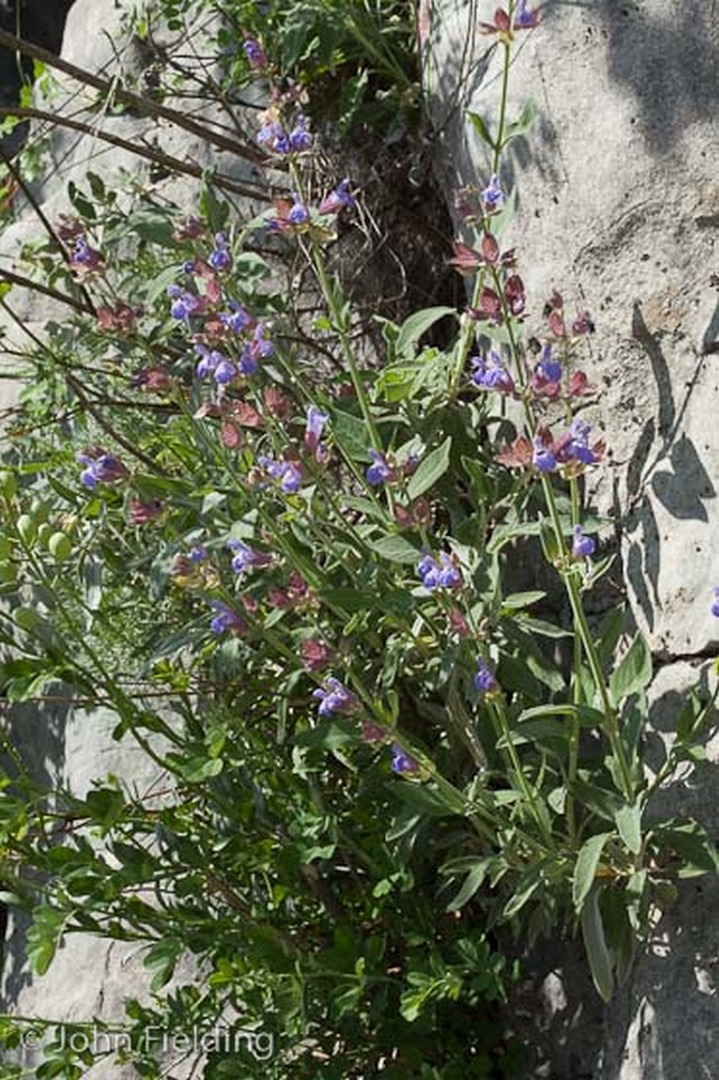
Salvia officinalis
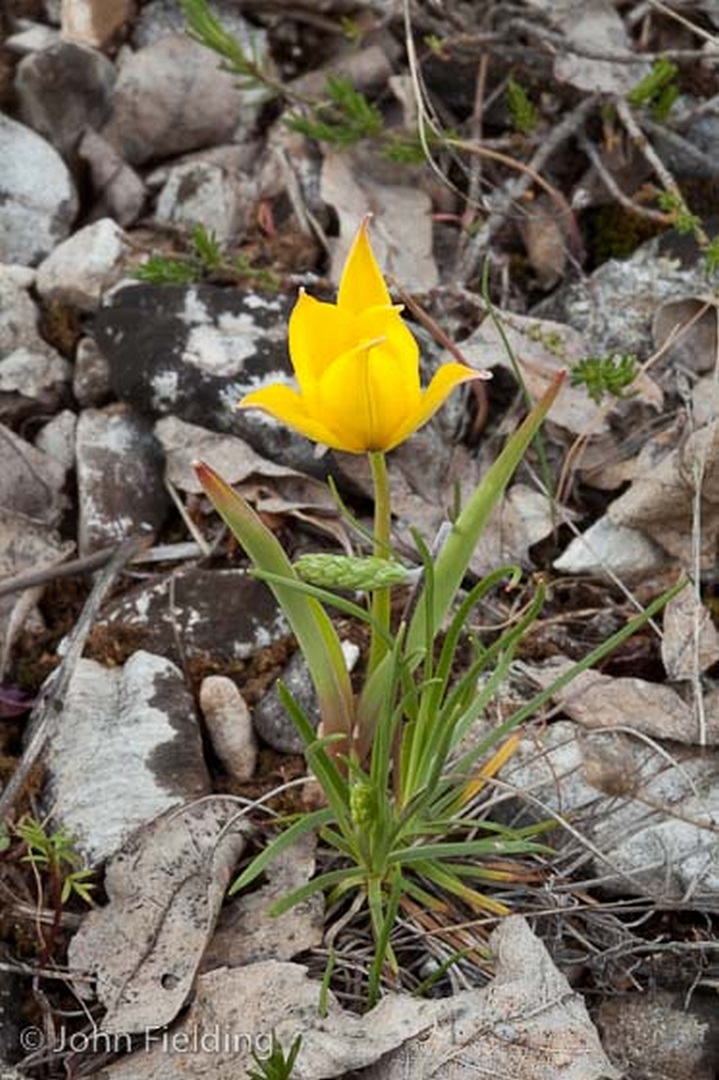
Tulipa sylvestris

Aristolochia pallida
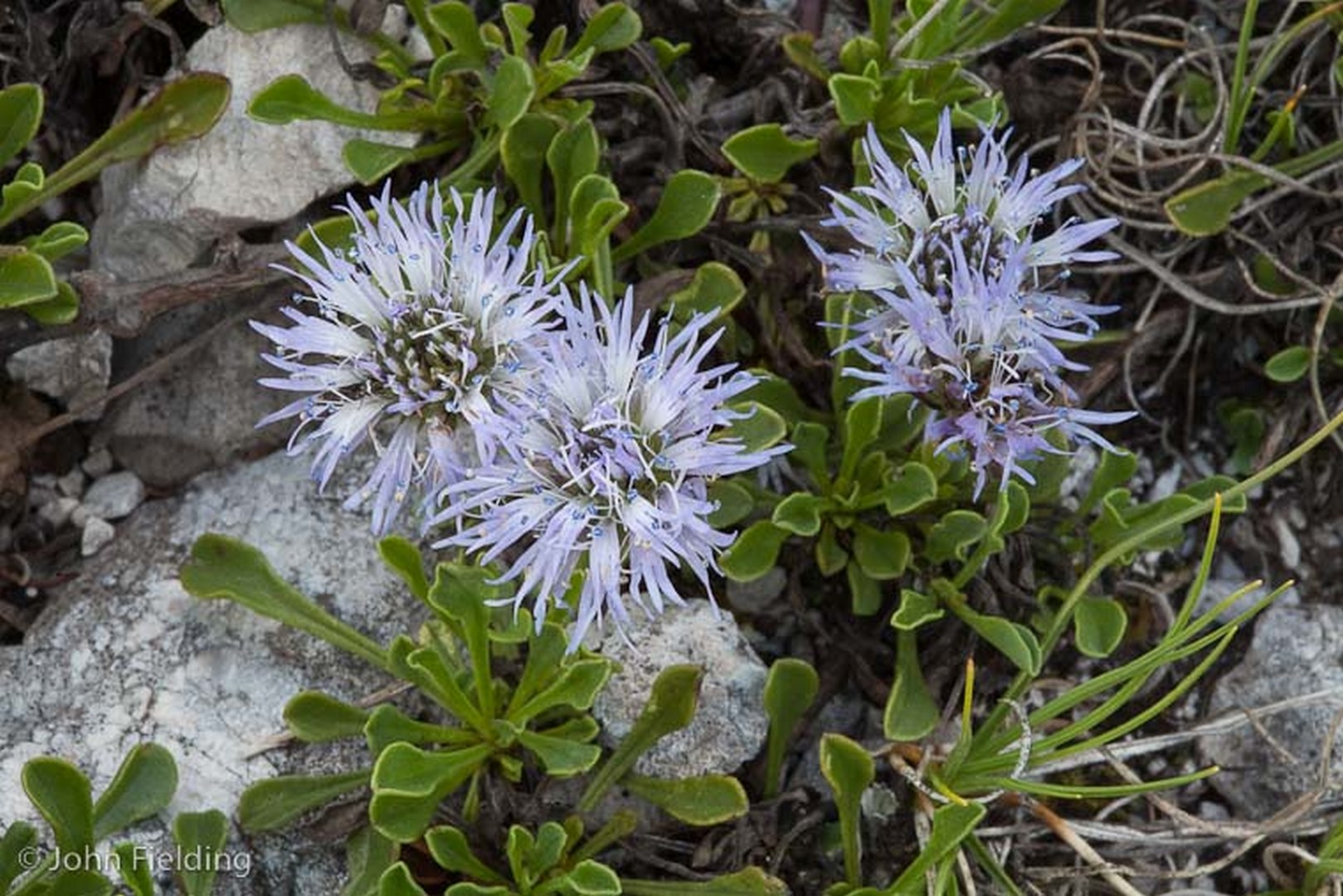
Globularia cordifolia subsp. bellidifolia
Before reaching our last base for this trip, Herceg Novi, we stopped at another garigue-like site where there were a number of geophytes. We were back near where we had entered Montenegro earlier, south of Carine. Plants I noted included Aristolochia pallida, Fritillaria messanensis subsp. gracilis, lady orchid, Orchis purpurea, monkey orchid, Orchis simia, and Tulipa sylvestris. The mat forming Globularia cordifolia subsp. bellidifolia was also in flower with its soft powder blue heads hugging close to the rock outcrops.
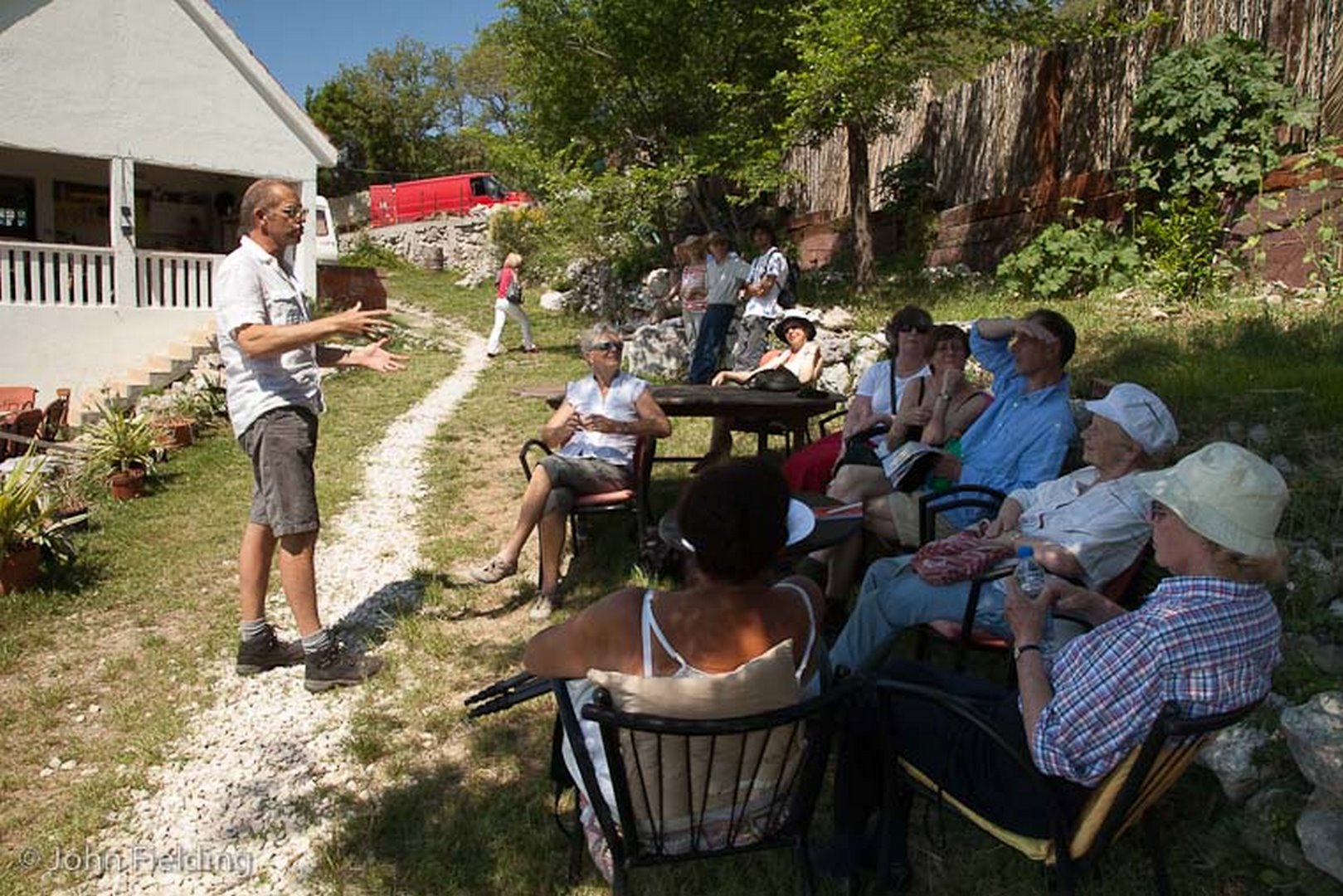
Steve Boyton-Jennings
The next morning we visited “Camp Full Monte”, a clothing optional camp site where this option was suspended for our visit. By this I mean that everyone was clothed! We had a pleasant relaxing visit and a lovely lunch. Steve Boyton-Jennings showed us round the ecologically friendly site where they recycle all their water to use on their own vegetable gardens.
The local vegetation had many Mediterranean elements but also some that were not typical, especially the shrubs. Around the property and just outside it I found the following :-
Allium roseum in full flower, in the form without bulbils in the flower head. I saw two orchids, Jersey orchid, Anacamptis laxiflora, and tongue orchid, Serapias lingua, not knowingly seen elsewhere on this trip.
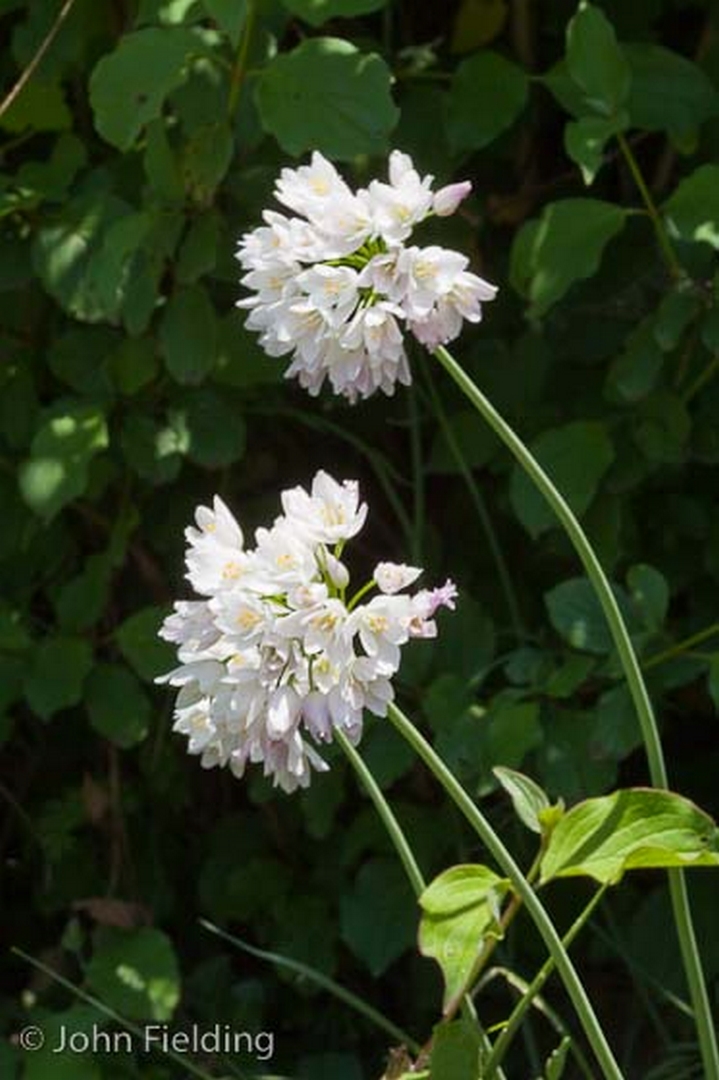
Allium roseum
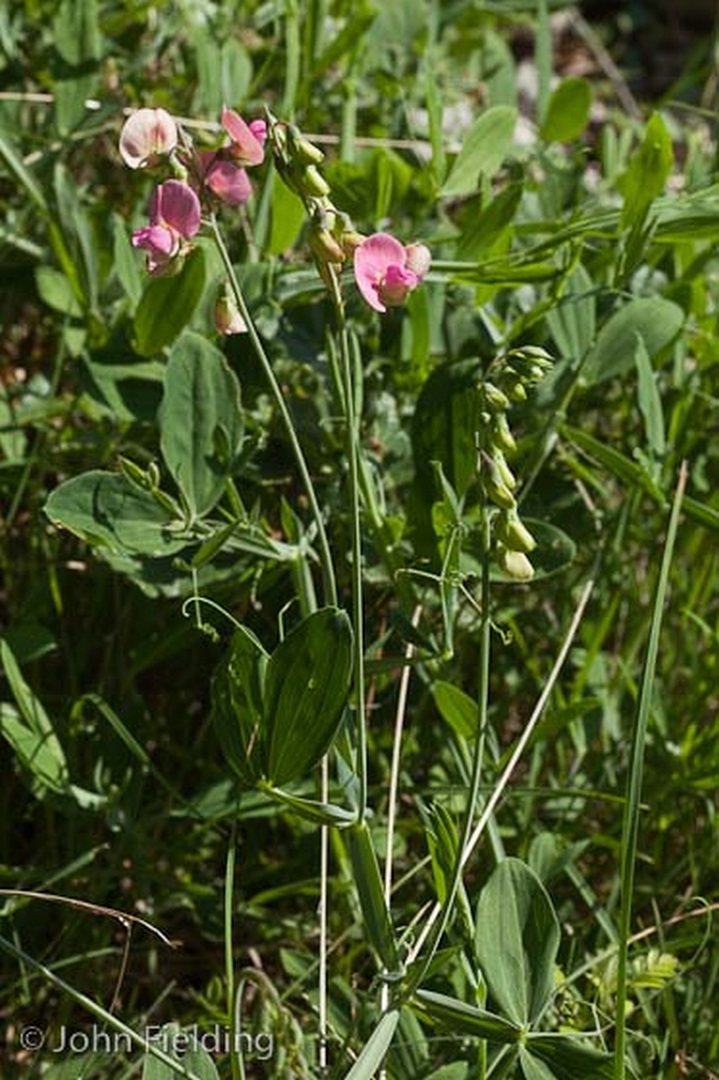
Lathyrus tuberosus
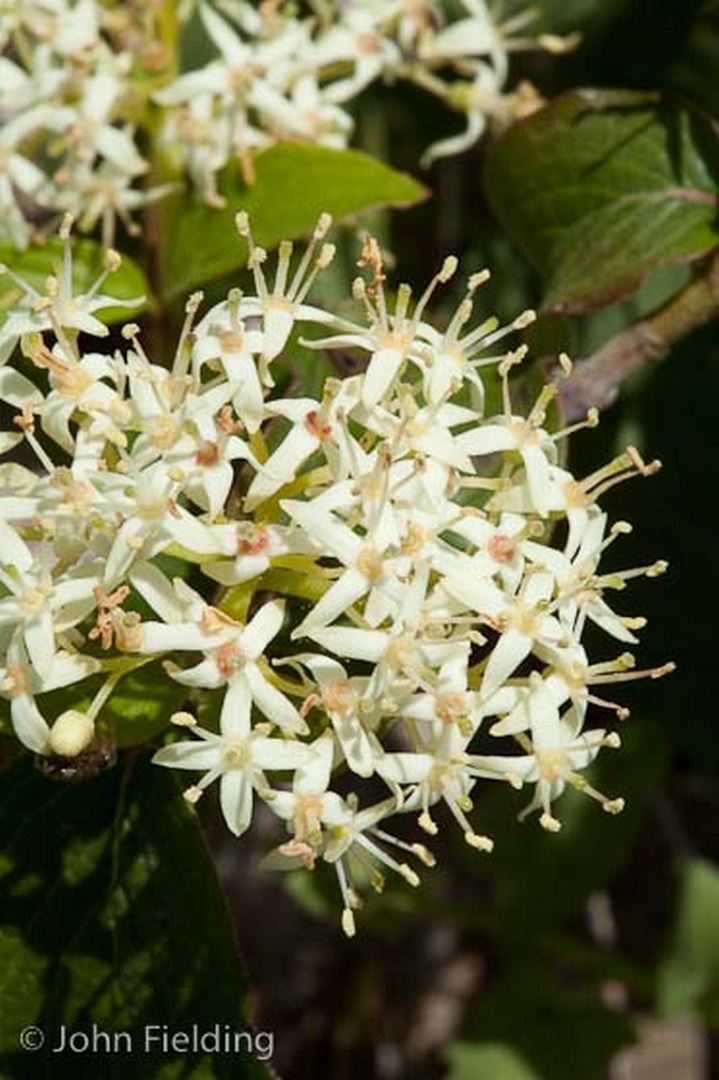
Cornus sanguinea
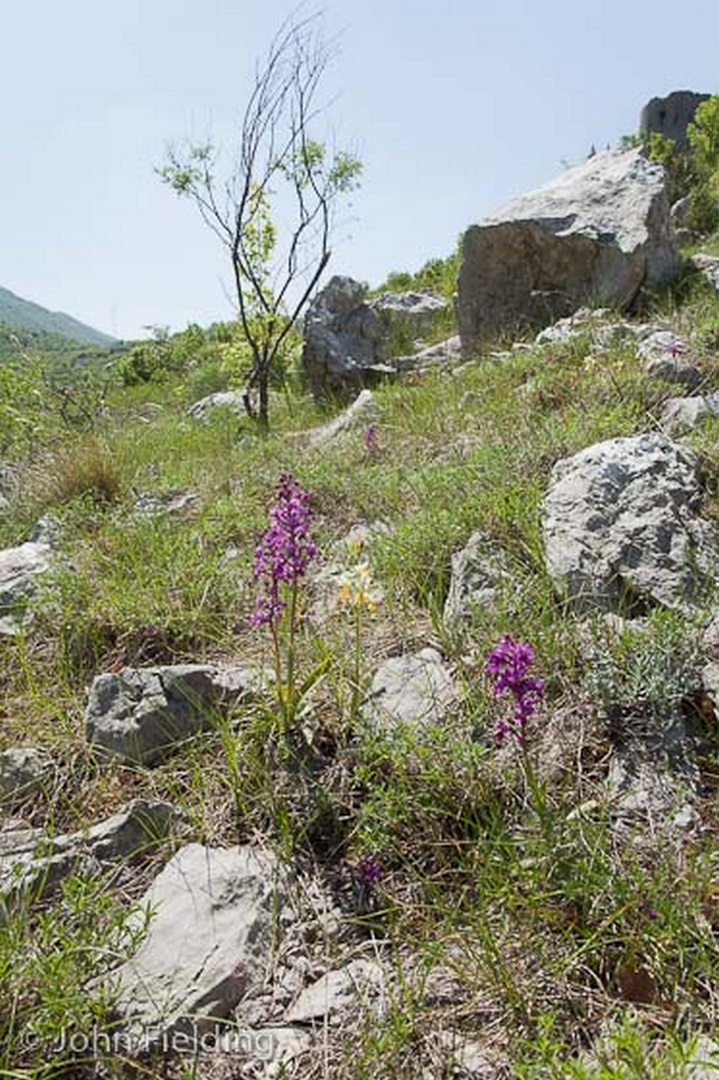
Orchis mascula
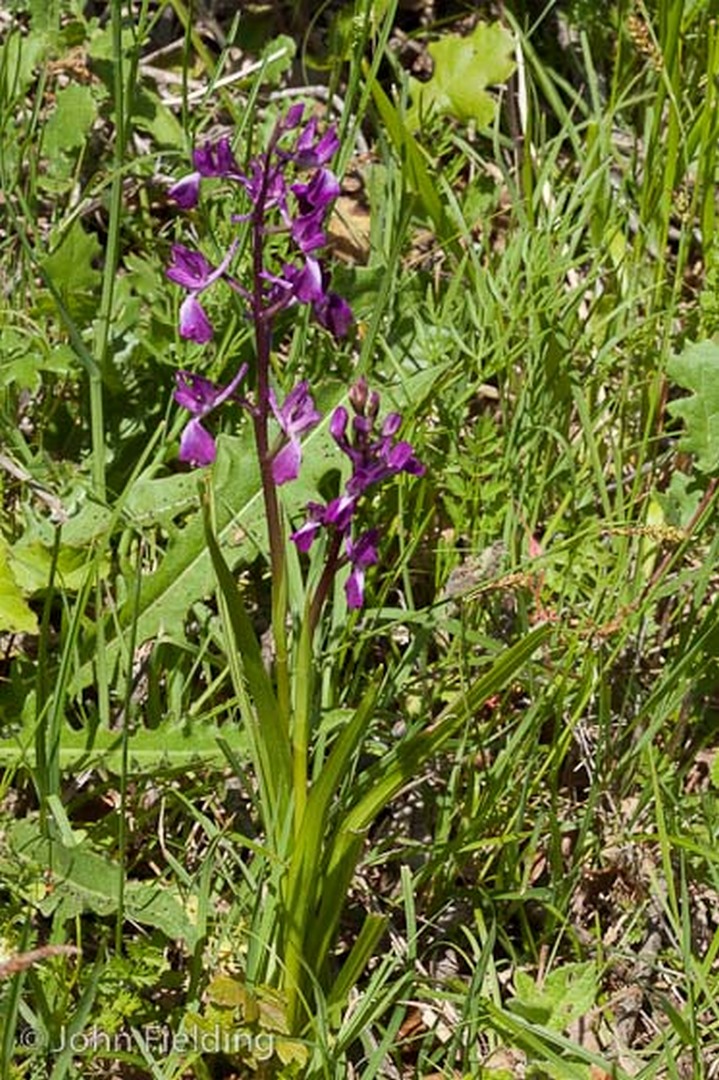
Anacamptis laxiflora
An attractive sweet pea I had not come across in the wild before, Lathyrus tuberosus with medium-sized flowers compared to the sweet pea we grow in gardens. Euphorbia characias subsp. wulfenii, though still looking good, was well past flowering. Dogwood, Cornus sanguinea along with wild Ligustrum vulgare had bright white flowers just at their peak.
Our last day started with breakfast by the bay of Kotor on a lovely sunny morning.
Then Elita Rose a local resident with knowledge of the countryside and the wild flowers took a number of us on a walk past the castle Trdava Kosmač
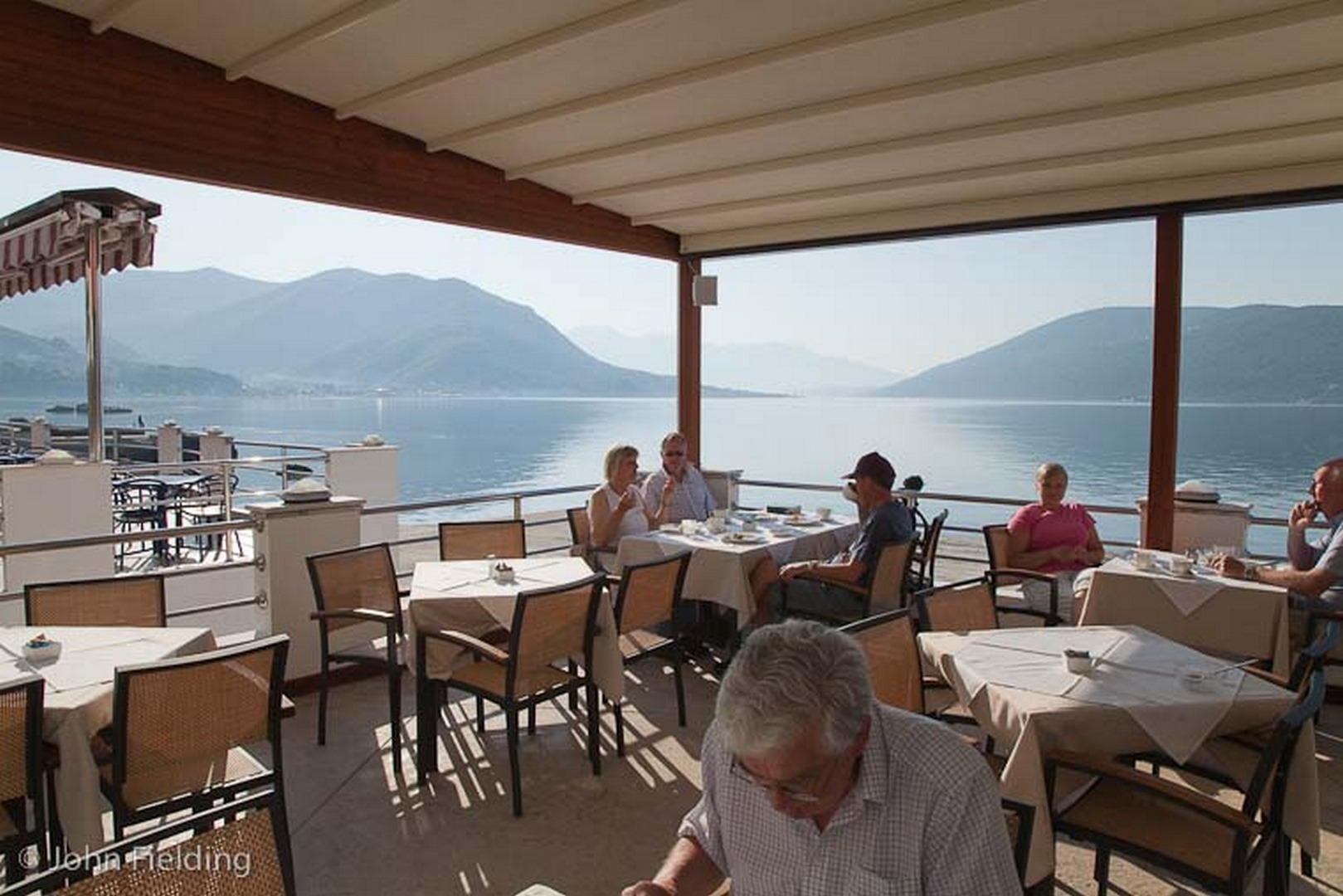
Bay of Kotor Breakfast
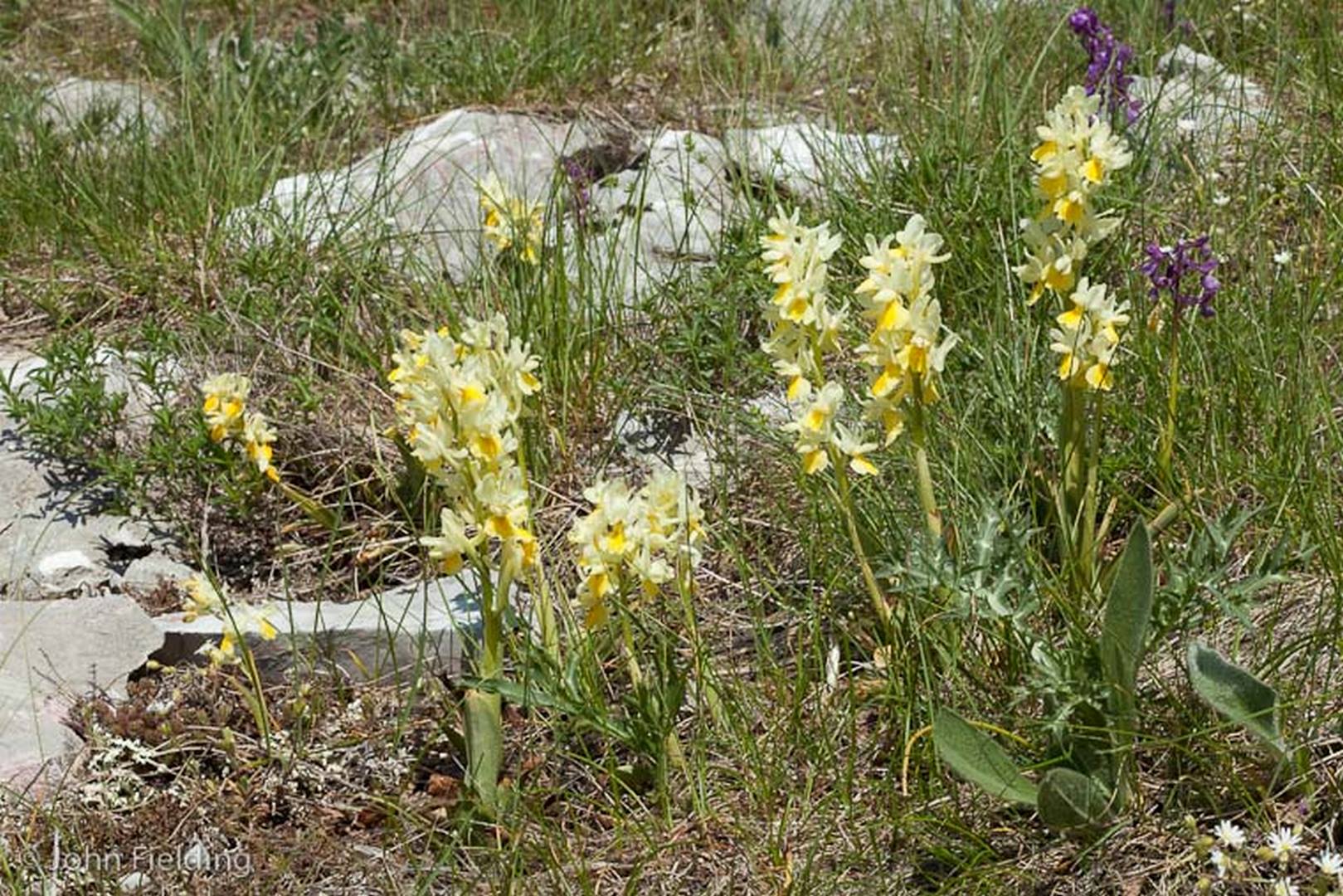
Orchis pauciflora
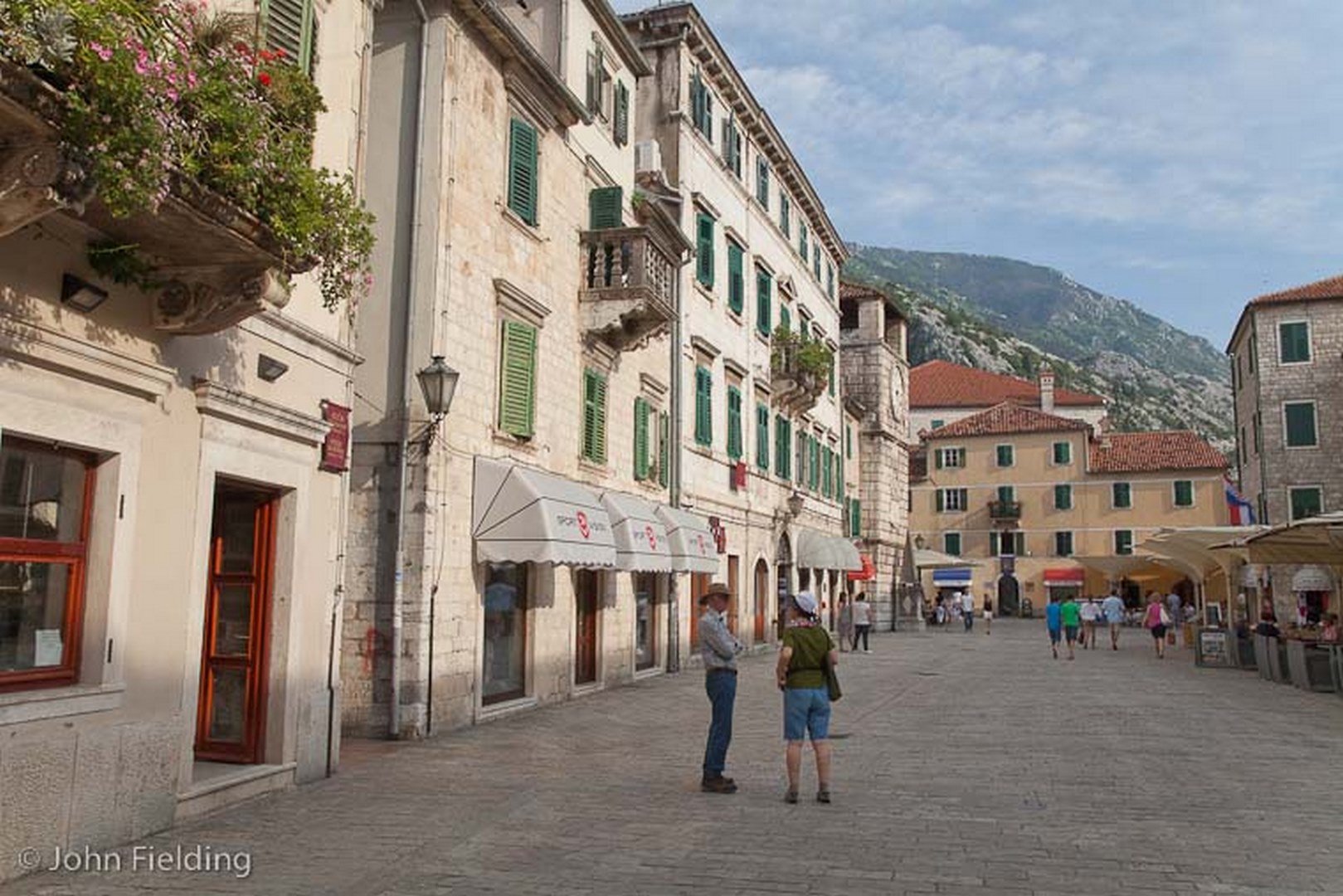
Kotor

Serapias lingua

Euphorbia characias subsp. wulfenii
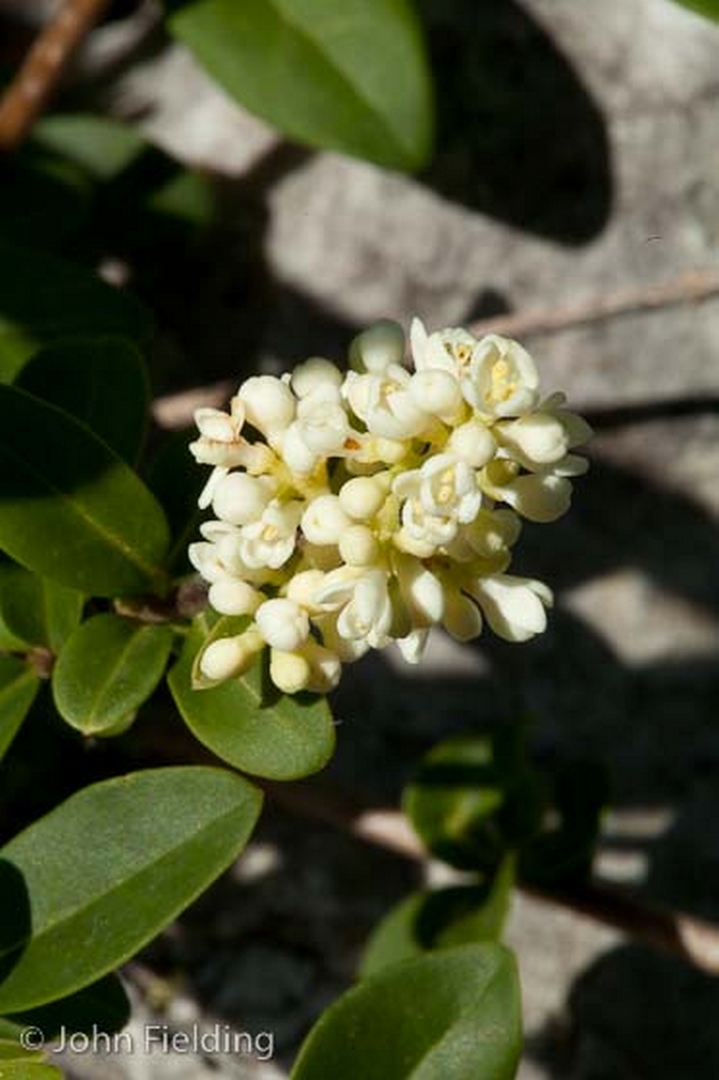
Ligustrum vulgare
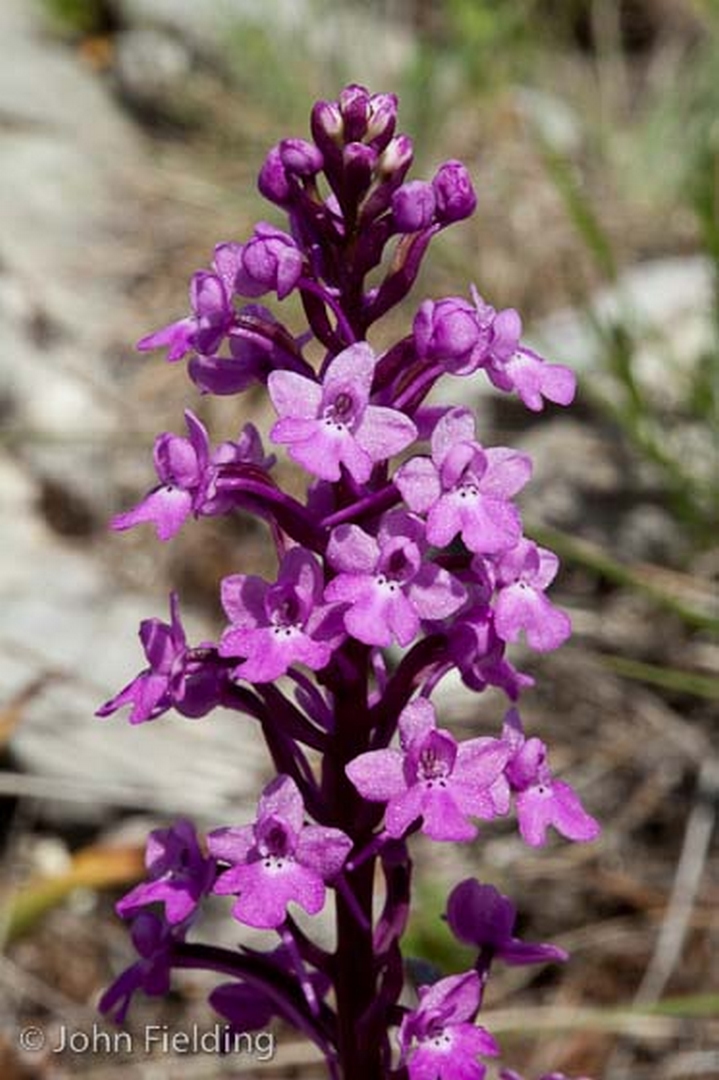
Orchis quadripunctata
Again, as a photographer I spent most of the time around the castle, joined by Jorun, where there were many orchids including Anacamptis morio, Orchis mascula, O. pauciflora and O. quadripunctata. Sesili globiferum an umbellifer looking like minute palm trees with their monocarpic stems covered in old leaf bases formed small colonies around the lower slopes of the castle. After lunch in the mountains we descended via amazing hairpin bends down to Kotor for the rest of the day.
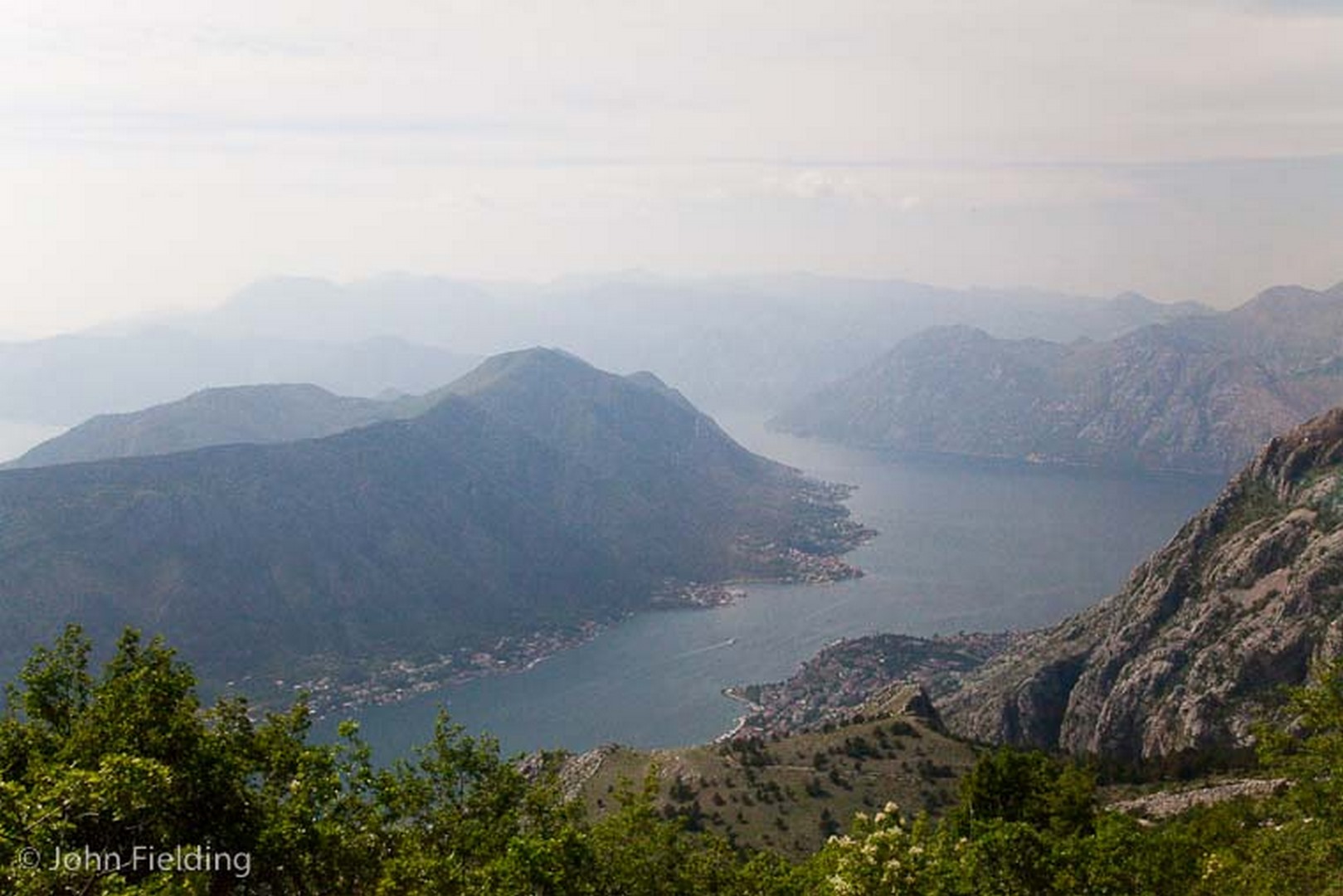
Bay of Kotor
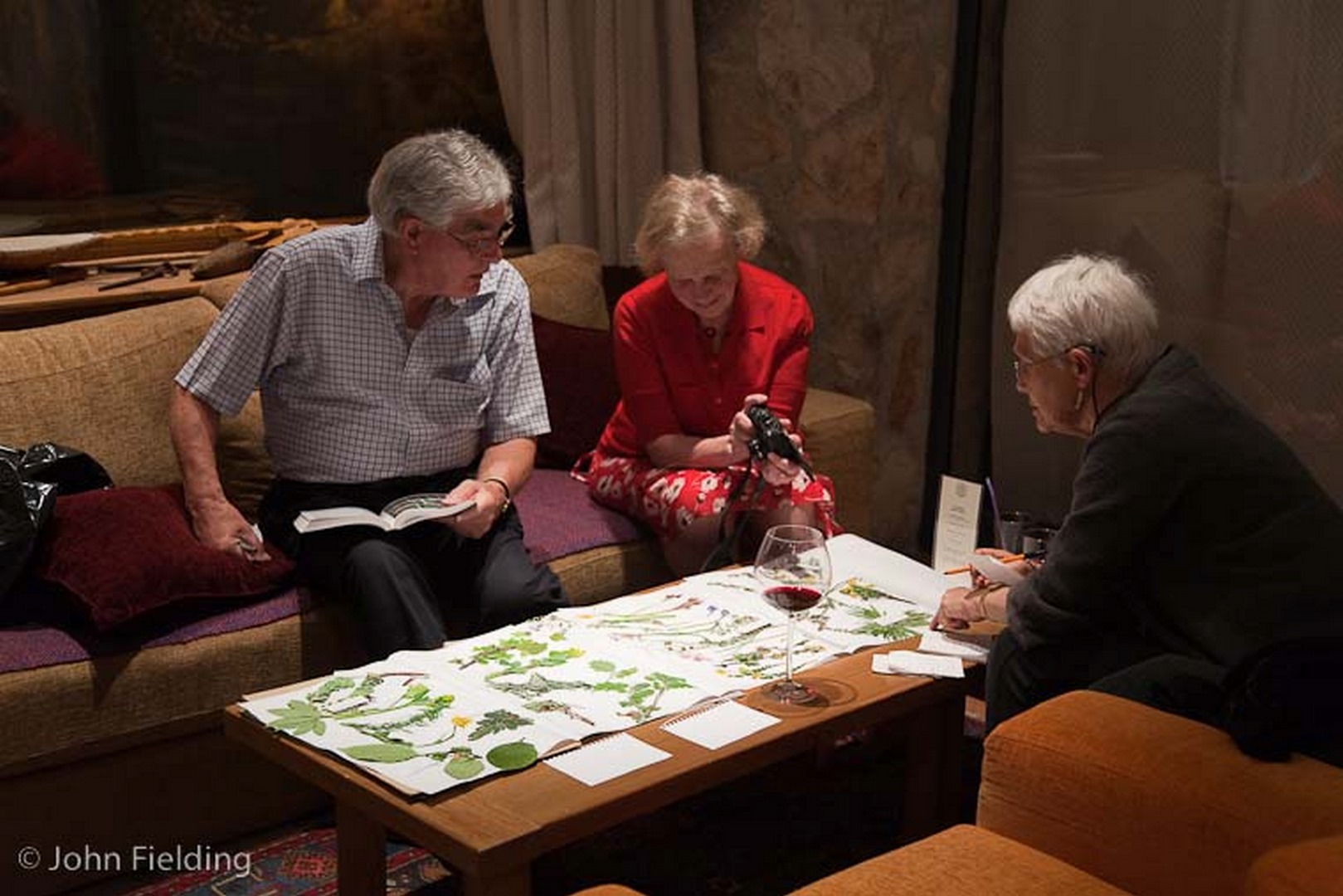
Chris Brickell and plant identification
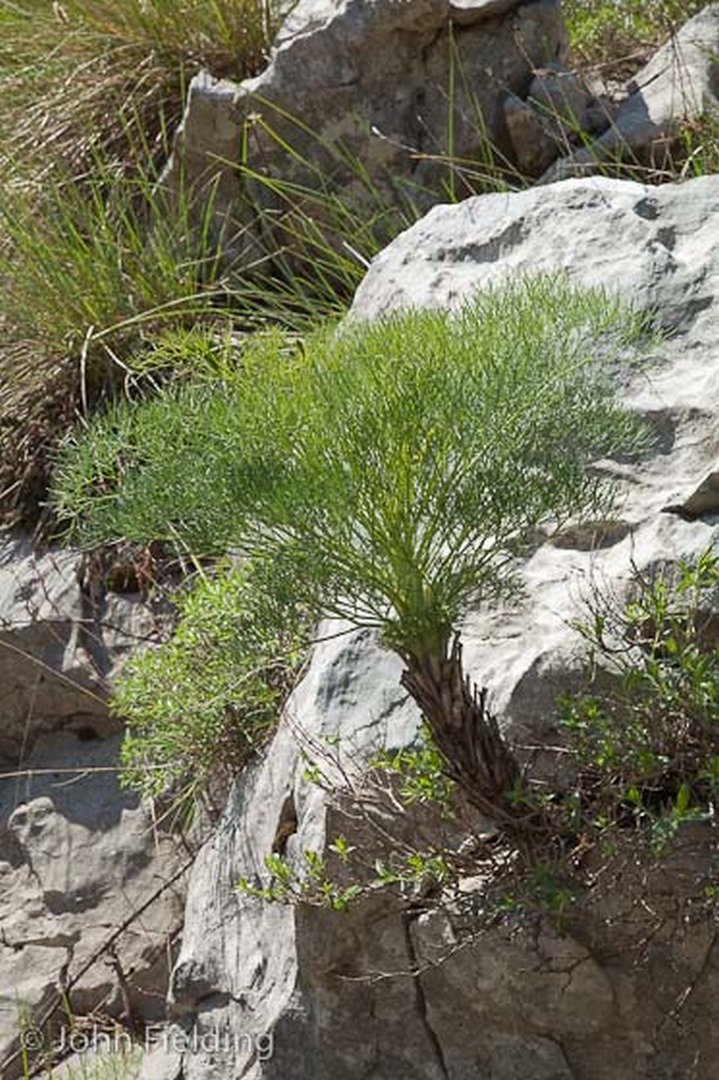
Sesili globiferum
During the trip Chris Brickell prepared small specimens from a selection of the plants we had seen as labelled herbarium specimens which were laid out on a couple of evenings for everyone to identify. This was a popular exercise, especially mulling over them with a glass of wine in hand.
I must mention our guide Janko Gardovic whose enthusiasm for the wild Montenegro was quite infectious and he took a great interest in the plants during the week. Also our two bus drivers Miodrag, who even towered over the tall Janko, and Pedja were friendly and helpful and interested in everything we did.
I would also like to point out that my identification of the plants is sometimes tentative especially as this is an area I have never visited before, and some plants are certainly difficult to identify, so errors are likely.

